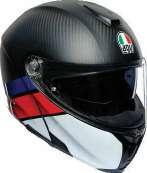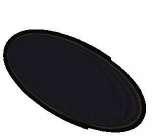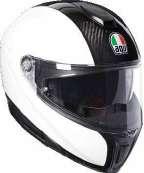


















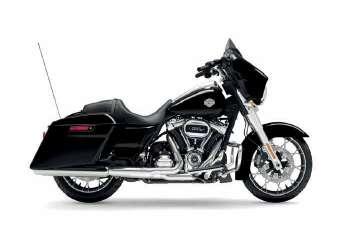


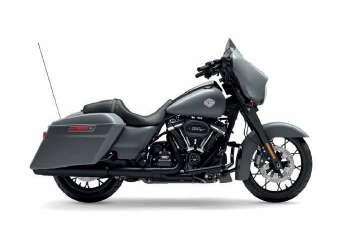



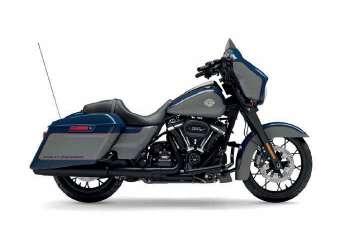
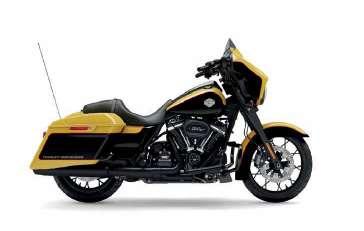

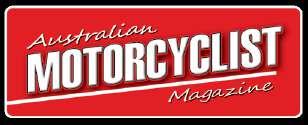





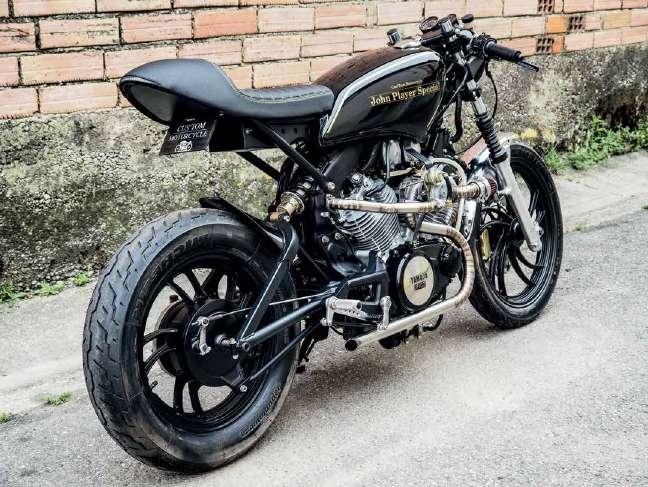




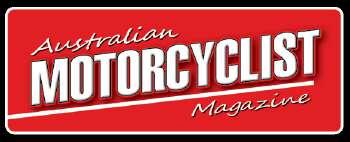
Publisher: Tony Clemenger
Editorial Manager: Susan Plunkett susan.plunkett@clemengermediasales.com.au
Sales: Leslie Maxilom leslie.maxilom@clemengermediasales.com.au
Design: Southern Bear Creative Solutions
Contributors:
Boris Mihailovic, Tug McClutchin, The Bear, Ross Stanford, Rennie Scaysbrook, Col Whelan.
Photographers:
Andre Bernard , Nick Edards, Double Red, Ryan Crawley, Jon Pennan, Dave Purves, Tracey Harrison, Col Whelan.
Your View: yourview@clemengermediasales.com.au
Subscription enquiries: tony@clemengermediasales.com.au
Printed in Australia using recyclable paper
Distributor Ovato
Australian Motorcyclist magazine is published by Australian Motorcyclist Magazine Pty Ltd. Level 1/397 Chapel St, South Yarra VIC 3141, Australia
This publication is copyright. Other than for the purposes of research, study, criticism, review, parody or satire and subject to the conditions prescribed under the Copyright Act 1968, no part of this publication may be reproduced, stored in a retrieval system or transmitted without the prior written permission of Australian Motorcyclist Magazine Pty Ltd. Opinions expressed within this publication do not necessarily represent those of Australian Motorcyclist Magazine Pty Ltd. No responsibility is accepted by Australian Motorcyclist Magazine Pty Ltd or the editor for the accuracy of any statement, opinion or advice contained in the text or advertisements. Readers should rely on their own enquiries in making decisions tailored to their own interest.
*Recommended retail price
Copyright © Australian Motorcyclist Magazine Pty Ltd ACN 161 432 506 ISSN 2201-5442
We encourage you to keep or recycle this magazine.
Weare excited to offer our exclusive with Rennie Scaysbrooks and his tilt at Isle of Man TT 2023.
Rennie has offered two commanding pieces with the second being a personal narrative of his 2023 TT riding experience.
Motorcycle riders are, in the main, thinking people. They know that
not that great for very short people. Another motorcycle in the busy streets of Mumbai, for example, may do what you need but will generate so much heat, you drip yourself away over the tank. Boris Mihailovic’s column provides a perspective on bike reviews that may have you thinking. Great! But note Boris is actually one of the best reviewers in the business. See Moto Guzzi starting page 42.
Bear also casts an opinion on model changes and consumer perceptions. He also took us on the last part of his Moroccan sojourn.
The Pub of the Month story I found inspiring in its celebration of Aussie’s coming together and saving businesses in their community. Great stuff.
Australian Motorcyclist Magazine www.ausmotorcyclist.com.au E D I T O R S P E A K S
Ross Standford rides the GPZ900 classic and, speaking of classics, we introduce Frenchman Tom Boissel and his barn-found custom created motorcycles.
We also introduce new contributor Tug McClutchin who just hates public transport p. 54. Read on.
Happy birthday Harley-Davidson for 120 years of righteous bliss.
As Managing Editor, I am keen to hear your views and your stories. If you have a comment on any article or review, we are interested in those. Please feel free to share on:
yourview@clemengermediasales.com.au
Cheers for being a member of our riding community and we hope to come to know you better in time.
Best, Susan Plunkett

We will be offering regular shipments to the UK and Spain.
There will be a shipment from Sydney to Barcelona loading late January and bikes available for collect just in Barcelona on Monday 25 March - a week before Easter. Currently we have room for 3 more bikes.
There will also be shipments from Brisbane, Sydney and Melbourne to Felixstowe in the UK, loading early February and bikes will be available for collection on Monday 8 April.
Return shipments for Barcelona
and Felixstowe will be loaded in Felixstowe on Monday 15 July and Monday 7 October, 2024.
Get Routed are again organising an Isle of Man TT package for those wanting to take bikes in 2024, using the shipping services listed above. Accommodation and Steam Packet ferry tickets are included.
For further info email: dave@getrouted.com.au or call 0412 689 849, but not between 26 July and 10 Sept, 2023 as he’ll be in England touring with a small group of Aussies or on the Isle of Man attending the Manx GP.
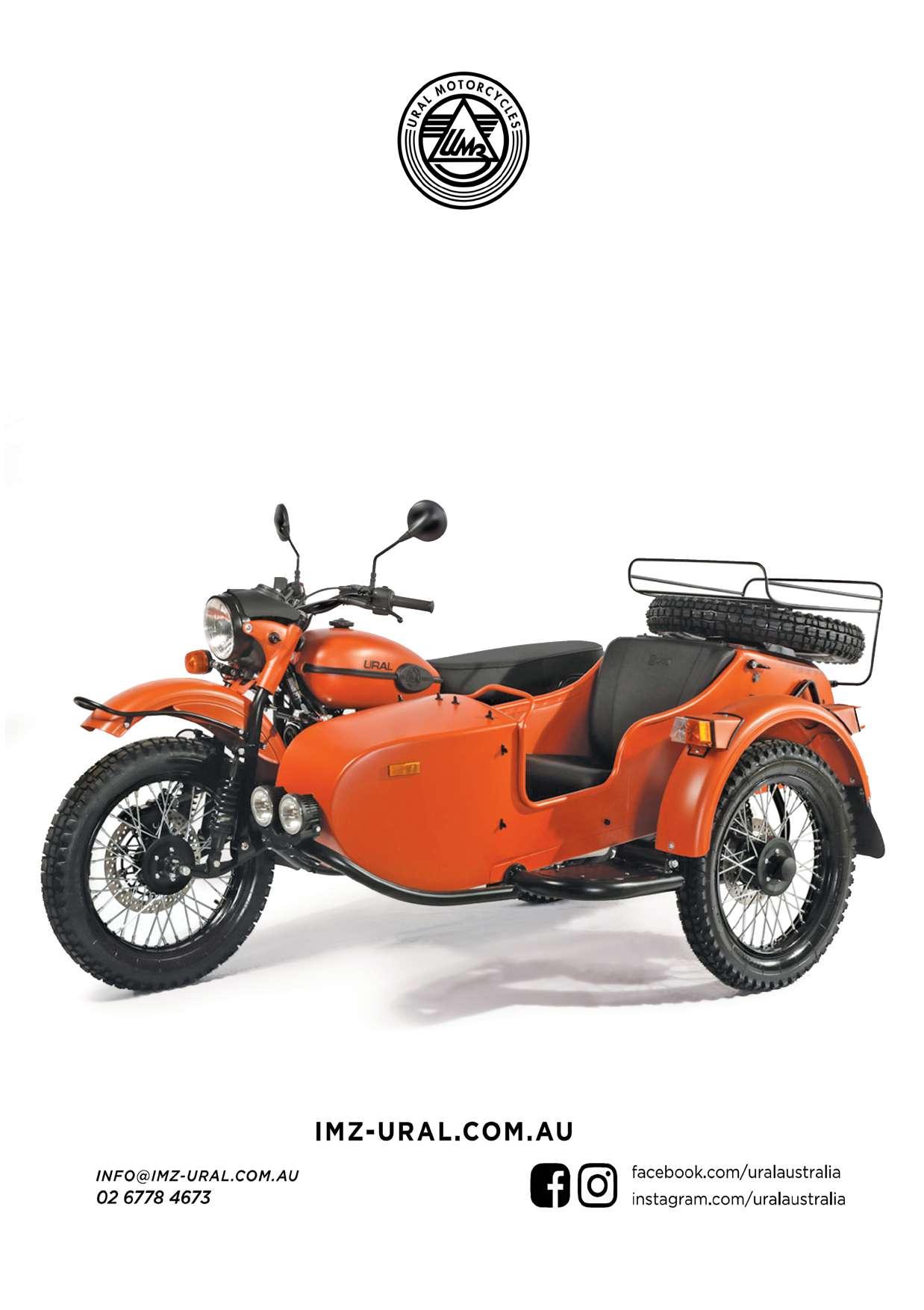

Force of Nature blasting the standing eighth.

I call head-up navigation.
BMW Motorrad is demonstrating what it is calling “ConnectedRide Smartglasses” at BMW Motorrad Days in Berlin this weekend with release imminent at a price of EUR ¤690.00 (around A$1130). You’ll need a fat wallet, but you won’t need a BMW to use the glasses. They connect to your smartphone via Bluetooth and an app., and they will display information onto the glass’s lens using head-up display technology.
The Smartglasses are a bit chunky, but they have been designed to be comfortably worn under a helmet for long hours. They offer a host of information including what gear you are in, but more importantly they allow you to see GPS navigation info, current speed, and current prevailing speed limit wherever you might be.
One of the downsides is that the batteries will only last ten hours, so if you’re planning a long day in the saddle, you’ll need a live USB port. The glasses come in one colour (Anthracite), but each pair comes with two sets of lenses (1x tinted lens and 1x 85% transparent lens), they’re available in two different sizes (M + L) and can be also designed, as you’d expect, from a a wide range of helmets. For people who wear glasses, there is an RX adapter (+/- 4.5 diopters). This can be ordered online.
I always worried that my glasses would end up smarter than I am.
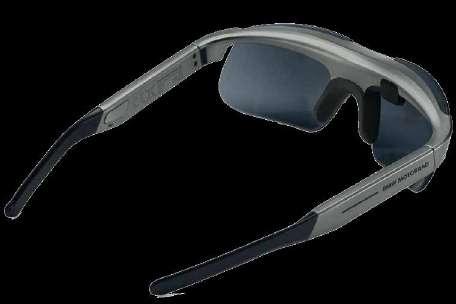
They do look a bit chunky, but the glasses are designed to t under helmets.

There was a time when steam engines looked like the way to run motorcycles (external combustion engines powered them long before internal combustion came along.) We all know how that contest ended, but now steam power has made a comeback, at least in drag racing. The bike, called Force of Nature, has set a new world record standing 1/8th mile time for steam-powered motorcycles. It is effectively a rocket on wheels, and laid down a record-breaking time of 3.878 seconds for the standing eighth, with a recorded exit speed of 264 km/h.
British husband-and-wife precision engineering team Graham and Diane Sykes say it should go much faster in the next attempt. Graham, who was piloting the steam-powered dragster, said the bike continued to accelerate at Elvington Speed Week, actually passing 290 km/h.
The rocket “engine” is like the propulsion system that Scott Truax built for Eddie Braun’s spectacular tribute to stuntman Evel Knievel. But while the Force of Nature may be conquering the drag strip, it doesn’t look as if steam is going to make a comeback on the road.

It all looks relatively simple under the “hood”.
New from German clothing manufacturer
Held by way of Andy Strapz, is this pair of
Andy tells us has instantly become a must pack item in his riding kit. Utilizing Gore Windstopper, these gloves insulate, breathe, stretch, and block cold air. The 3D moulded construction with only one seam means they provide feel and protection without bulk. They’re available from Andy Strapz, www.andystrapz.com for AUD$55 plus postage.
Right: Your hands will thank you for adding these gloves to your travel kit.

Powered by the gritty 300 hpe (High Performance Engine) single-cylinder, with 4-valve timing, liquid cooling, and electronic injection, the Gtv has the highest performance engine ever mounted on a Vespa. Producing 17.5 kW (23.8 HP), this is matched to perfect Vespa ergonomics, enhanced by its comfort and large body. The seating is natural and allows for total control of the vehicle and absolute comfort even over long distances. Seating is approved for two while the two-tone single-seater-look saddle has a rear part that is ready for a rigid cover, available separately, which is colour coded to match the body, reminiscent of the typical fairings on competition Vespas.

Convenience and practicality are highlighted by the introduction of the keyless system, which allows the ignition to be switched on without the need for a traditional key. Lights are now full LED, including the characteristic low headlight. The new instrumentation with its elegant circular shape is now entirely digital. The new LCD instrumentation
messages, and music, if it is connected to your smartphone using the VESPA MIA (available as a separate accessory).
The Gty comes standard with a USB port, located in the storage compartment in the leg back shield, ASR electronic traction control and an anti-lock braking system.
Above: Even in beige the new Vespa Gtv 300 is anything but beige!
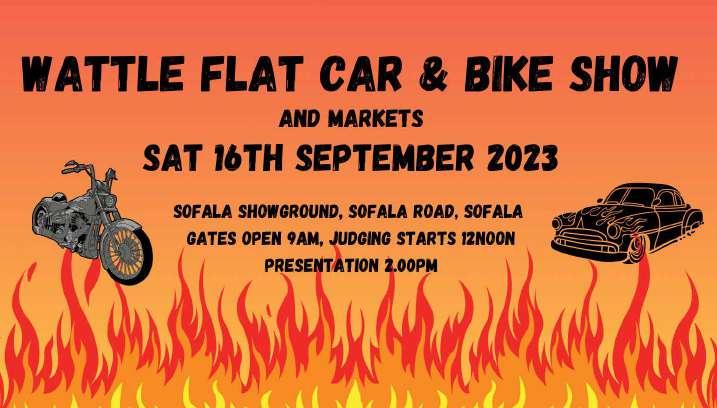
If you’re looking for something to watch, says Shannons Insurance, then check out Shannons Dream Bike Build. Shannons teamed up with Purpose Built Moto to produce a six-part video series that takes you through the complete bike build process.
“From the moment a client walks through our door with an idea right
builders. “Initial design, engine upgrades, fabrication, and paint work and

Watch as they turn a tired Honda CB500 into a custom hand-built motorcycle over six YouTube videos:
1. Finding the Honda CB500
2. Engine Problems
3. Fabrication
4. Getting Some Colour
5. Final Assembly
6. Final Reveal
Get an insider’s look at the meticulous Dream Bike Build process with Shannons Insurance, at https://www.shannons.com.au/club/.
Australia’s pioneering and original motorcycle tour operator, still going strong after 29 years now, has released its 2024 calendar. All World on Wheels information for the coming year is available on www.WorldOnWheels.tours, and the boss, Mike Ferris, says: “We trust you’re having a great 2023 so far, and we hope you’re able to join us on an exciting tour such as one of these in the very near future!”
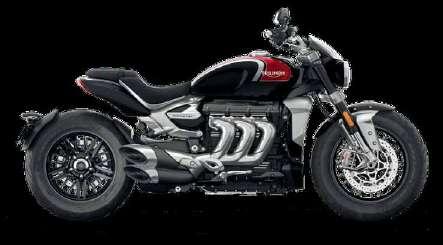

Triumph has announced new colours for several models returning otherwise unchanged for 2024. The models receiving new paint options include the Rocket 3 R, Rocket 3 GT, Speed Triple 1200 RS, Tiger 850 Sport, Tiger Sport 660, and Trident 660. Mostly, the new colors add a lot of black with some color highlights, while the Matte Baja Orange available on several models in 2023 has been dropped.
Above: The Rocket 3s get a new Sapphire Black & Carnival Red with Silver Ice accents.

for
new single cylinder 400s storm ashore.
We have been waiting for this announcement for quite a while. Triumph’s all-new Speed 400 and Scrambler
And best of all, Triumph Australia says that “We expect arrival of the new Speed 400 and Scrambler 400 X into Australia in December 2023 with competitive pricing announcement closer to the arrival date.
“Born into a peerless bloodline, the Speed 400 roadster joins Triumph’s most successful modern classic line-up, the Speed Twin 900 and 1200,” says Triumph, “while the Scrambler 400 X takes its rugged design cues from the Scrambler 900 and 1200,
factory Scramblers of the 1950s.”
The Indian-built bikes have been designed from the ground-up with a brand-new single engine and are designed to deliver a experience levels and are expected to represent outstanding value for money.
The Russsians own MVAgusta, or did until November 2022 when KTM acquired a 25.1% stake. Presumably the idea of exploiting one of the great names in motorcycling came up before KTM became involved; at least we hope so. But hang on
In 1992, the MV Agusta brand was taken over by Cagiva. Founded in 1978, the name was the abbreviation for Castiglioni Giovanni Varese and was initially used as an independent and not particularly successful motorcycle brand. Eventually it was dropped. Timur Sardarov, currently co-owner and managing director at MV Agusta, recently expressed no interest in reviving the Cagiva brand in interviews. Especially since the naming rights for Cagiva still belong to the Castiglioni family.
Where does that leave us? Well, with the MVCagiva / QJMotor 150 ADV Crazy Weekend Scooter, already on sale in China. Its hybrid drive with an additional electric motor comes from QJMotor, a brand of the large Chinese manufacturer Qianjiang.
We have seen a number of notable motorcycle brands move to China, but we have never before seen such a concerning abuse of a great name.
WHAT: Monthly Social meeting of riders who like a coffee and a chat.
WHERE: ZEN Motorcycles, 200 Euston Road, Alexandria, NSW, 2015.
WHY: Because it’s great to have a place to meet fellow riders and have a chat about stuff.
WHO: Anyone who likes to ride,
rOCky Cr BuMpS puMpS ChArg

The Smart Pump shows o all of its accessories and the case.
Motorcyclists all over the world have been relying on possibly the ugliest but also best pocket pump, the MotoPressor Pocket Pump, for years. Now Rocky Creek Designs has upgraded the ugly duckling to a smart-looking swan that’s also lighter and smaller. The MotoPressor Pocket Pump V2 is the ideal lightweight companion for riders who need a reliable tyre inflator. Its ultra-compact design makes it easy to carry, and it’ll inflate a 150/70/ R18 tyre in under 4 minutes. The entire kit weighs just 545g and includes a tough EVA zippered bag, inflation hose, alligator clips, and an SAE battery cable. Cost is A$89.95.
And that’s not all. If you’re after even more convenience, consider the MotoPressor Smart Pump. This one has a battery and while it is also small, light, and compact enough to carry with you anywhere, it has a mind of its own, too. It allows you to set and store four separate tyre pressures and will automatically shut off when the pre-set pressure is reached. No worries about the pump’s lithium battery going flat - simply plug into your bike’s battery and continue inflating. There is a USB output to charge phones and other electronic devices. Comes with all accessory wires and a zippered EVA bag, at A$179.95.
Finally, if you need to get the jump on a flat battery, Rocky Creek now has an even more powerful jump starter – the 500A. With 500amps on hand, as the name suggests, it can start not only motorcycles
is sociable, enjoys a coffee and wants to make new friends.
WHEN: First Sunday of each month between 8:00am – 10:00am FIRST: 50 riders get a coffee on the house
$250 service credit at ZEN Motorcycles to the best Instagram post that mentions #Zen.Motorcycles
charge your phone or tablet too, as well as other battery-powered devices. We have one of the smaller 400amp versions, and while we’ve never needed it for the bike, it has come in handy a couple of times for cars. The complete kit weighs 715g and packs neatly into a carry case. It combines battery capacity of 10,000mAh and a starting current of 500A, and costs A$198.95.
All MotoPressor products are available direct from www.rockycreekdesigns.com.au and your favorite bike shop.
Right: Just as tough as it looks, the 500A will be your go-to jump starter for anything!








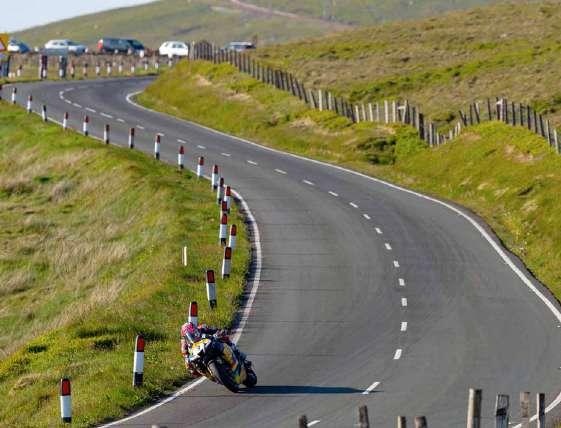

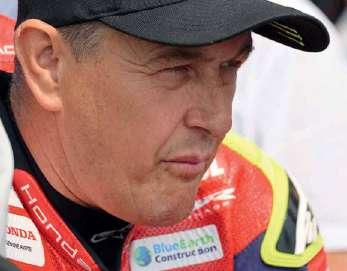

ERNEST HEmINgWAY ONcE quIppEd, “There are only

Left: 23-time Isle of Man TT winner John McGuinness is pensive before the start of the 2023 Senior TT. No matter how long you’ve been racing here, the nerves never change.
Above and below: Peter Hickman and his record breaking BMW M1000RR K66.
that, and exclude the barbarity of
“There are only two sports: mountaineering and the Isle of Man TT; all the rest are merely games.”
fastest, and deadliest motorcycle race in the world. Indeed, it’s so extreme it makes regular motor racing look decidedly boring by comparison.
If you’re reading this magazine, you’d have at least heard of the TT. Most motorcycle riders have. The TT is a relic of a past when times were simpler, and less red tape was strapped around our world.
The TT is loved as equally as it is loathed. It’s an event where the dangers have never been more evident, partly because the motorcycles themselves have never

been faster and the roads on which they compete have hardly changed in over a century.
Accidents and death are part of the TT experience. There’s absolutely no run-off anywhere around the 60.72kmlong ribbon of tarmac that snakes its way through towns, past schools, over the Snaefell Mountain, and back to the coastal city of Douglas. As 26-time TT winner, Joey Dunlop, famously said, “Stay on the grey bit, not the green bit”.
Yet the TT is far more than just a race where a few chosen lunatics get to hurtle around country roads with no regard for the speed limit. It is the main
“ THE ISLE OF MAN TT IS THE FINEST, FASTEST, AND DEADLIEST MOTORCYCLE RACE IN THE WORLD.”
economic driver of the Isle of Man people’s psyche. The race is the Isle of Man, and the Isle of Man is the race.
The TT underwent a dramatic facelift during the Covid-19 hiatus of 2020 and 2021. If the race was to survive and thrive, the not inconsiderable risks of the event needed to be mitigated as best as possible.
The man in charge of the event is TT Motorsport and Development Manager, Paul Phillips. This Isle of Man local has seen the event go from the depths of struggling competitor numbers, a drastic lack of sponsorship, and calls for the race to be banned following numerous deaths, to a thriving event; a race that’s the

cornerstone of the Isle of Man’s tourism industry, and one that, with the insurance crisis surrounding Irish roadracing at the moment, looks set to continue to reign for many years as the world’s number one road-racing event.
“Right when I started working on the TT in 2006, the race was in a very different place,” Phillips explained. “Its future was under threat at the time. The motorcycle industry was quite turned off by it. Public support locally had diminished. There wasn’t as many people coming as there are now. It had just kind of been left behind.
“But I think one of the things we’ve worked really hard on over the past year is to put more resources into the race organisation and give them more bandwidth and more support, which I think is important.
“I think that plays out in some ways that people see and others they don’t, in terms of their ability to deal with the
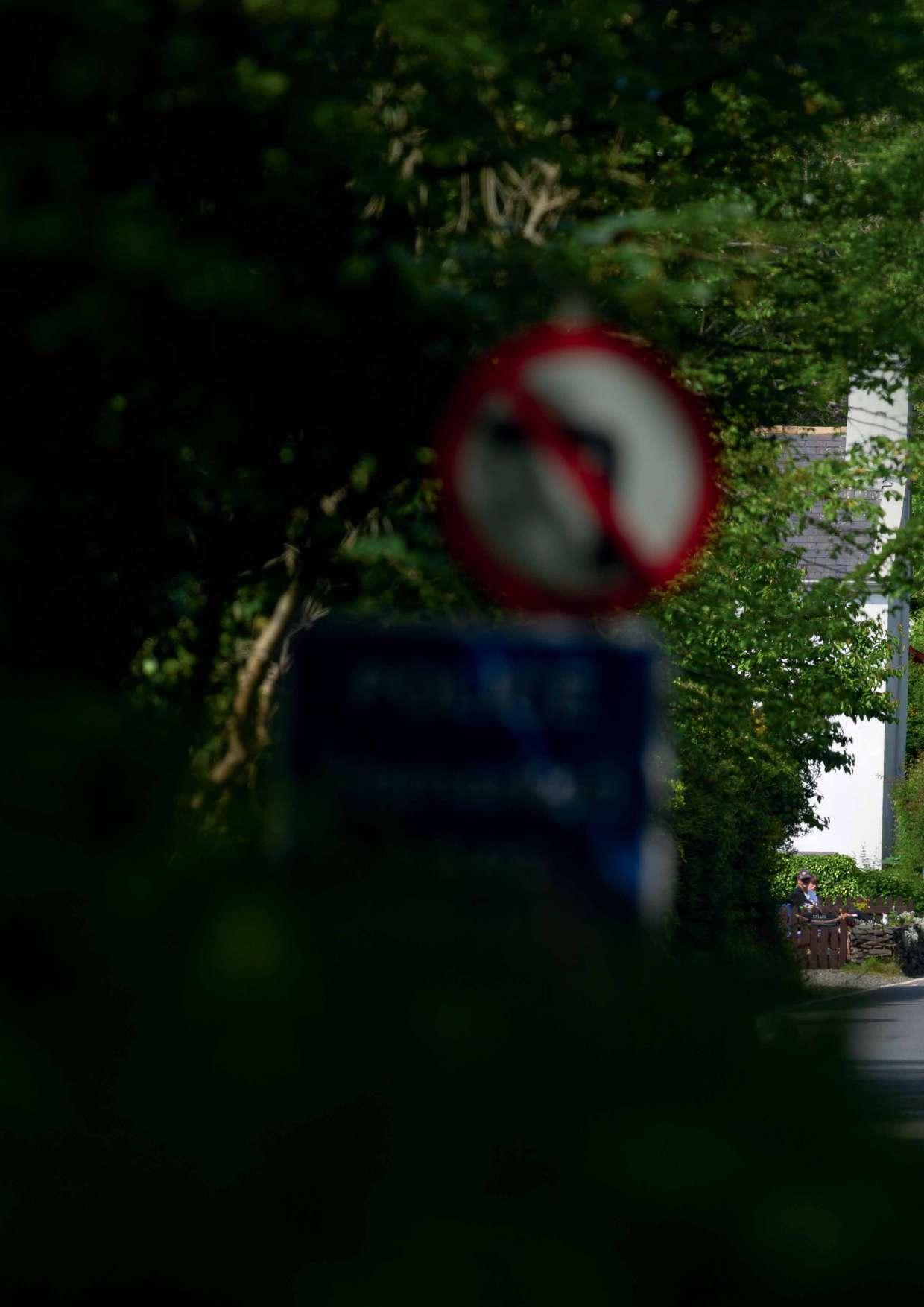
challenges in an effective way, and communication and clear decision-making.
“I would say that if you’re a competitor in the TT or a team, or whatnot, you could have no complaints about the way you’re treated, the way you’re communicated to, where all the information is, and the clarity of all that sort of stuff. This is a uniquely challenging thing that we’re delivering.”
To create and run the Isle of Man TT, you’re going to need around 2000 professional marshals, plus almost half that number again in administrative and organisational staff.
To say this is a mammoth task would be a staggering understatement.
“The sheer volume of different moving parts is phenomenal,” Phillips said.
“It freaks me out when I think about it sometimes. But you can see the pay-off with the brings to the island.
“At a glance, the race brings in about £40 million ($76

“
TO CREATE AND RUN THE ISLE OF MAN TT, YOU’RE GOING TO NEED AROUND 2000 PROFESSIONAL MARSHALS, PLUS ALMOST HALF THAT NUMBER AGAIN IN ADMINISTRATIVE AND ORGANISATIONAL STAFF.”
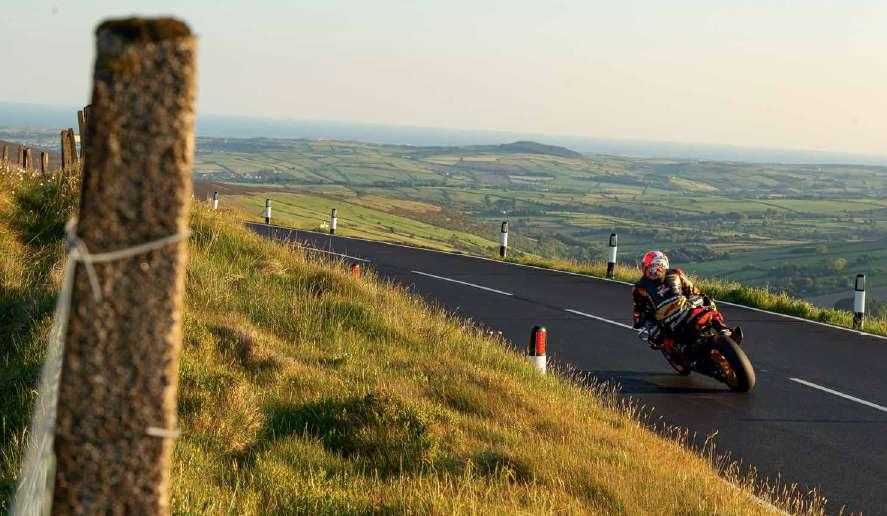
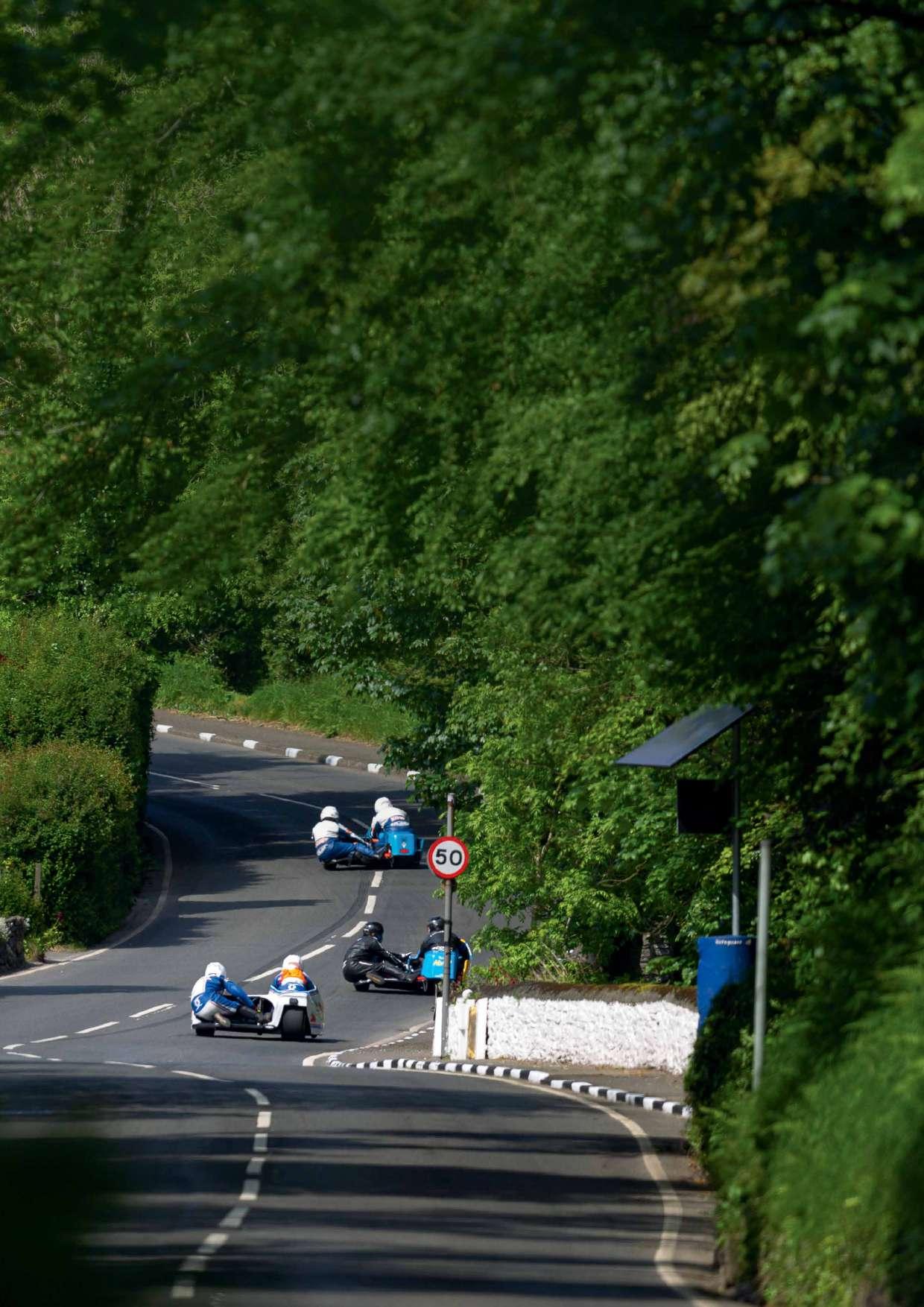

any impact from the uptick in local expenditure, which everyone’s out building scaffolding platforms, buying barbecues, bringing friends in.
“We’re seeing people coming to the island now at the end of the fortnight. Everybody says it’s super busy. I think the locals are more engaged in the TT than they’ve ever been, which is great.”
And as more people come to the event, more people who can’t make it still get to experience it. The TT has doubled-down on its social media and content creation strategies, including the excellent No Room For Error series, which is seeing gigantic viewer numbers flow from Instagram, Facebook and TikTok. This helps enhance the impact each sponsor dollar has and opens the TT to a younger audience – a golden honeypot for any sport in this day and age.
But none of this could be possible without the competitors, and like any form of motor racing, there’s the haves up the front and the have-nots at the rear.

Riders like Peter Hickman and his exceptionally well-funded FHO Racing organization sit front and center in pit lane, the rightful place for the man who just smashed the overall lap record in the second Superstock TT on Thursday afternoon.
At the rear is my team, Team Kibosh Racing, and I’ve got a BMW S1000RR, and a few friends, old and new, all chipping in to see me reach my personal dream.
Growing up in the Scaysbrook household, photos adorned the walls of dad and his mate, a man by the name of Mike Hailwood (yes, that one), racing each other as teammates around the TT Mountain Course.
I knew as a very young lad that I too would be on that starting line one day, and I made that dream come true last year with two races in the Supersport division.
But I am back for another crack, this time on a BMW superbike. And while I may not have the resources of Mr. Hickman, I’ve got a pocket full of hopes and dreams, man...
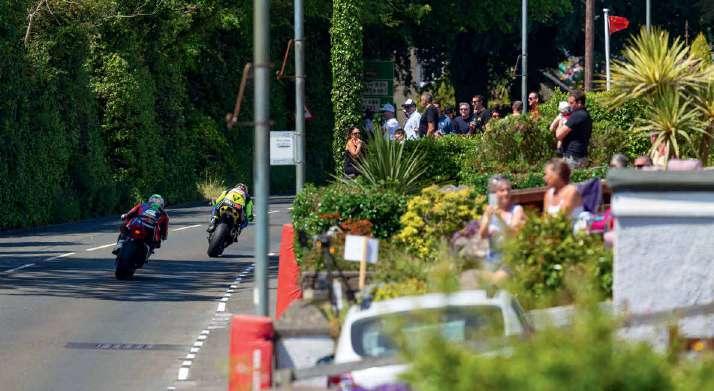

To be involved in the Isle of Man as a competitor is so surreal as to feel like I’m on set of the soon-to-bethat’ll be starring Channing Tatum, who was at the race on a scouting mission. Time seems to lose all meaning during the two weeks you’re in competition mode. Personal problems fade away, replaced only by the need to know where you have to be so you’re ready for your next practice or racing session.
You see faces come and faces go, and some of them are permanent. We lose one rider this year, Spanish road racing star, Raul Torras Martinez, place, the Isle of Man, and things like this are sadly part of the event.
We race on regardless.
So how did my personal TT work out?
Stay tuned for the second part of this Isle of Man TT feature to AMM
Bottom left: Being a road
viewing positions are as diverse and the people watching.
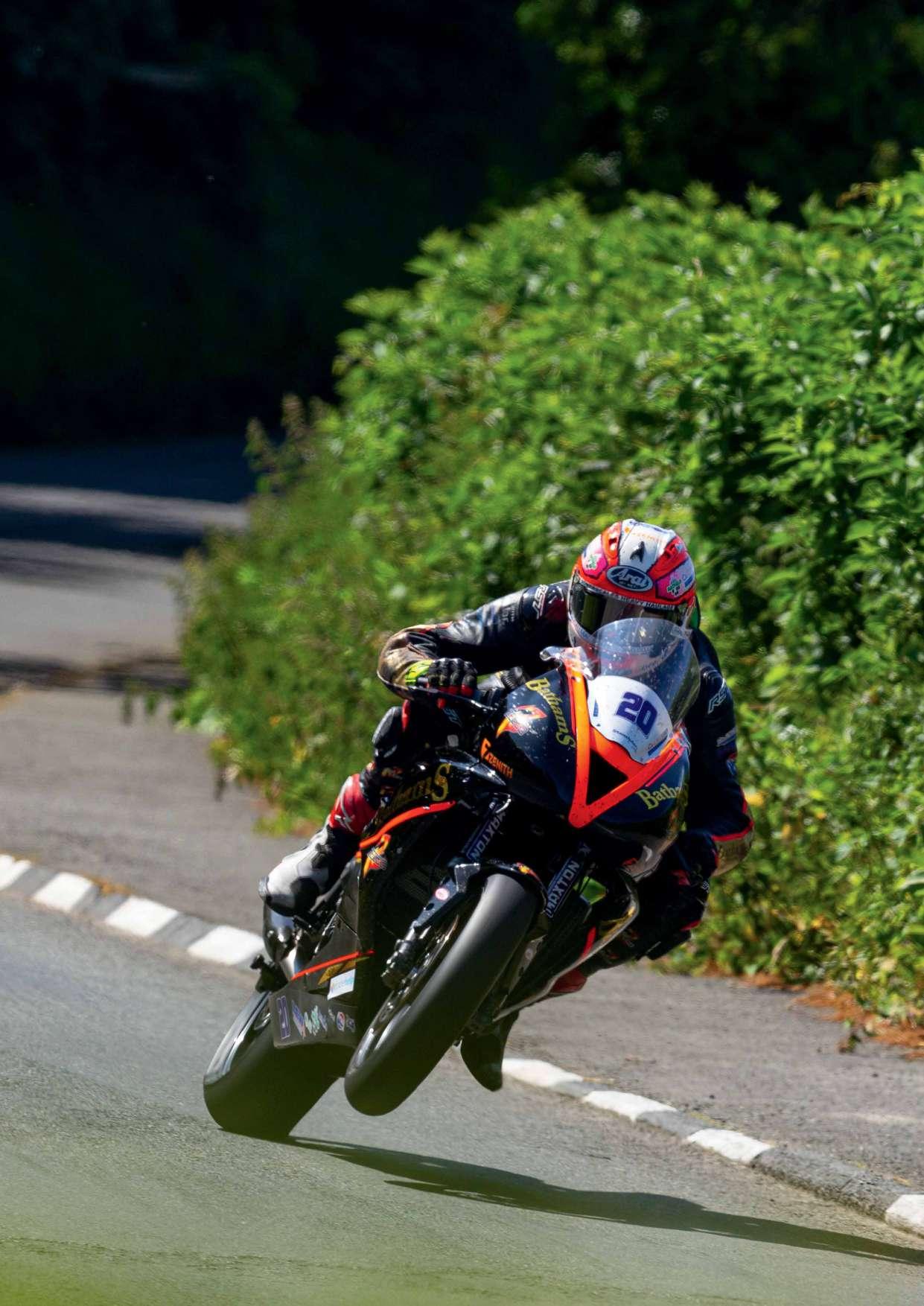


rENNIE S CAy SB r OO k r ET ur NS TO T h E I S l E O f M AN TO TA k E ON T h E fASTEST AN d MOST d AN g E r O u S r ACE IN T h E w O rld ON A 1000 CC S up E r BI k E .
WORDS – rENNIE SCAySBrOOk PhOtOgRaPhy – dOuBlE rEd, ryAN CrAwlEy, JON pENNAN, dAVE purVES, TrACEy hArrISON ANd ANdré BErNArd
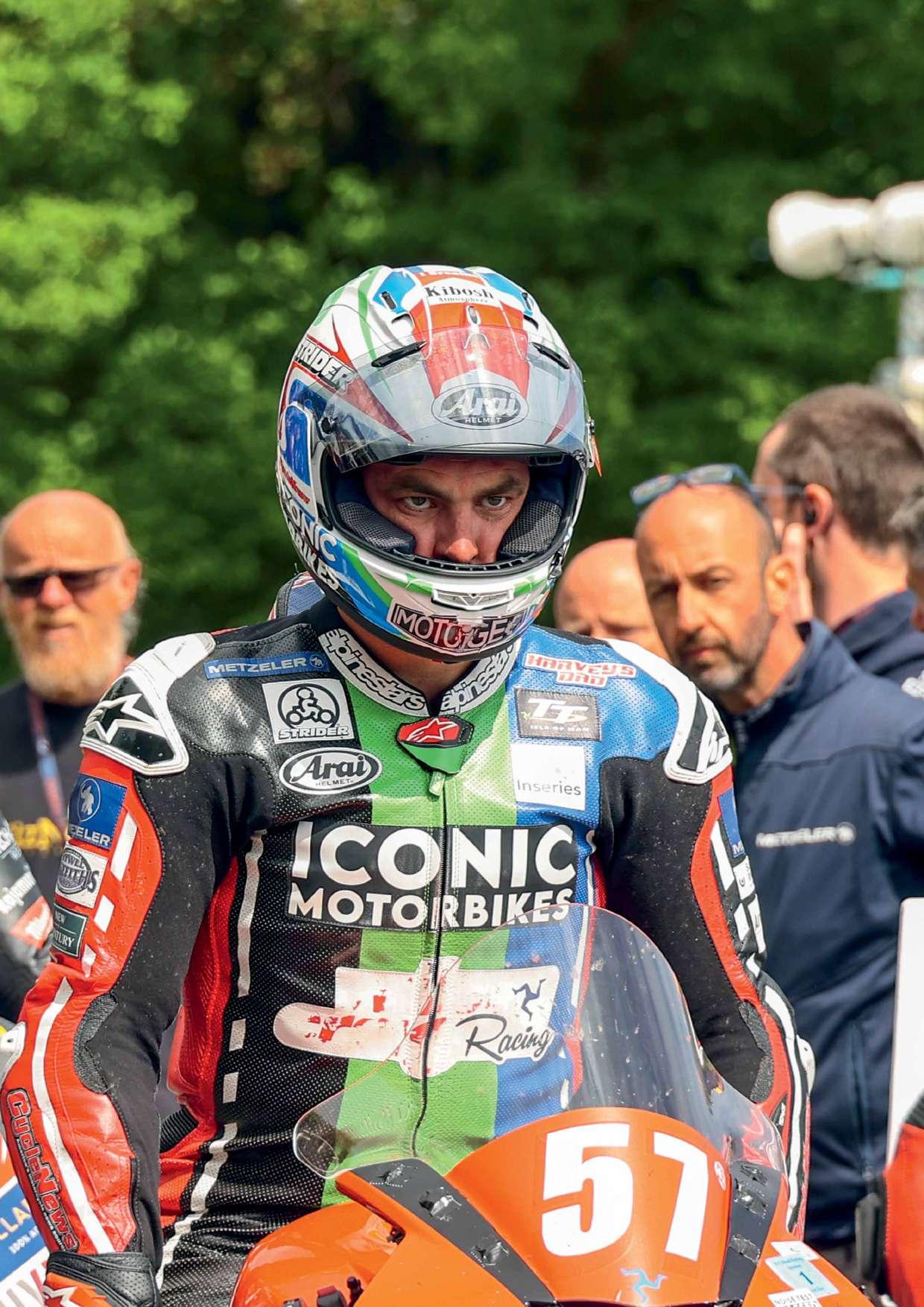
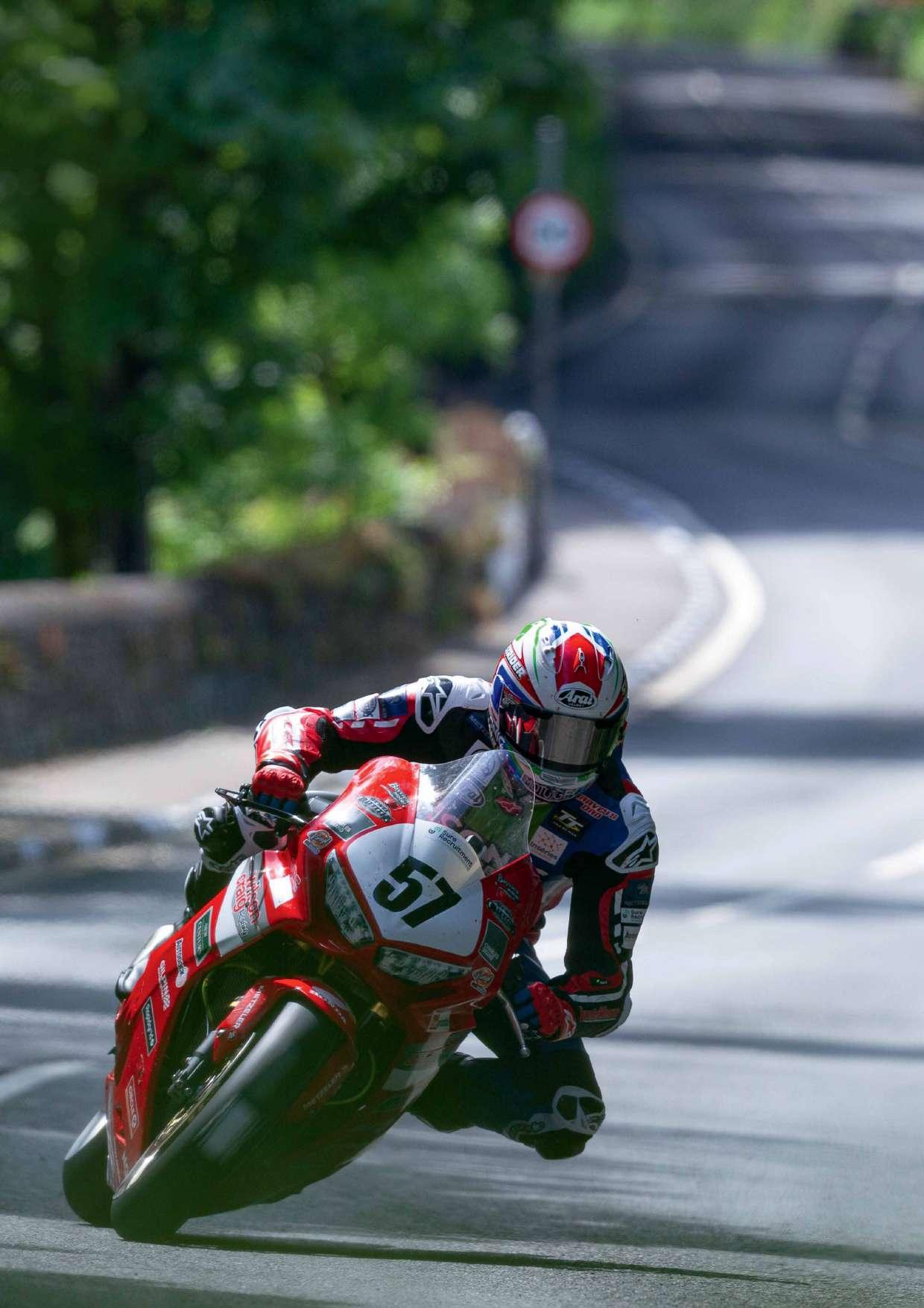
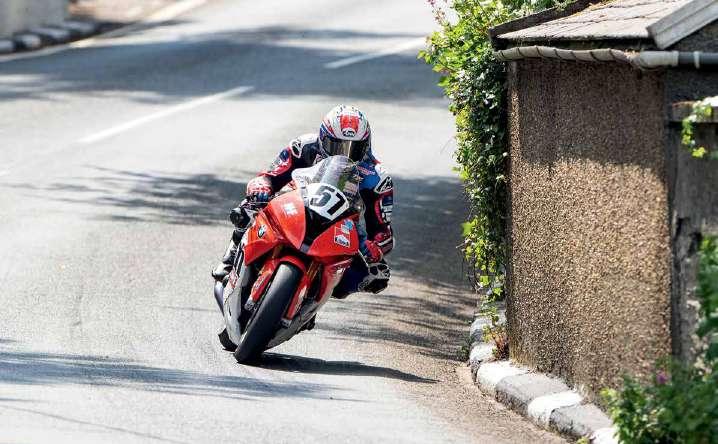
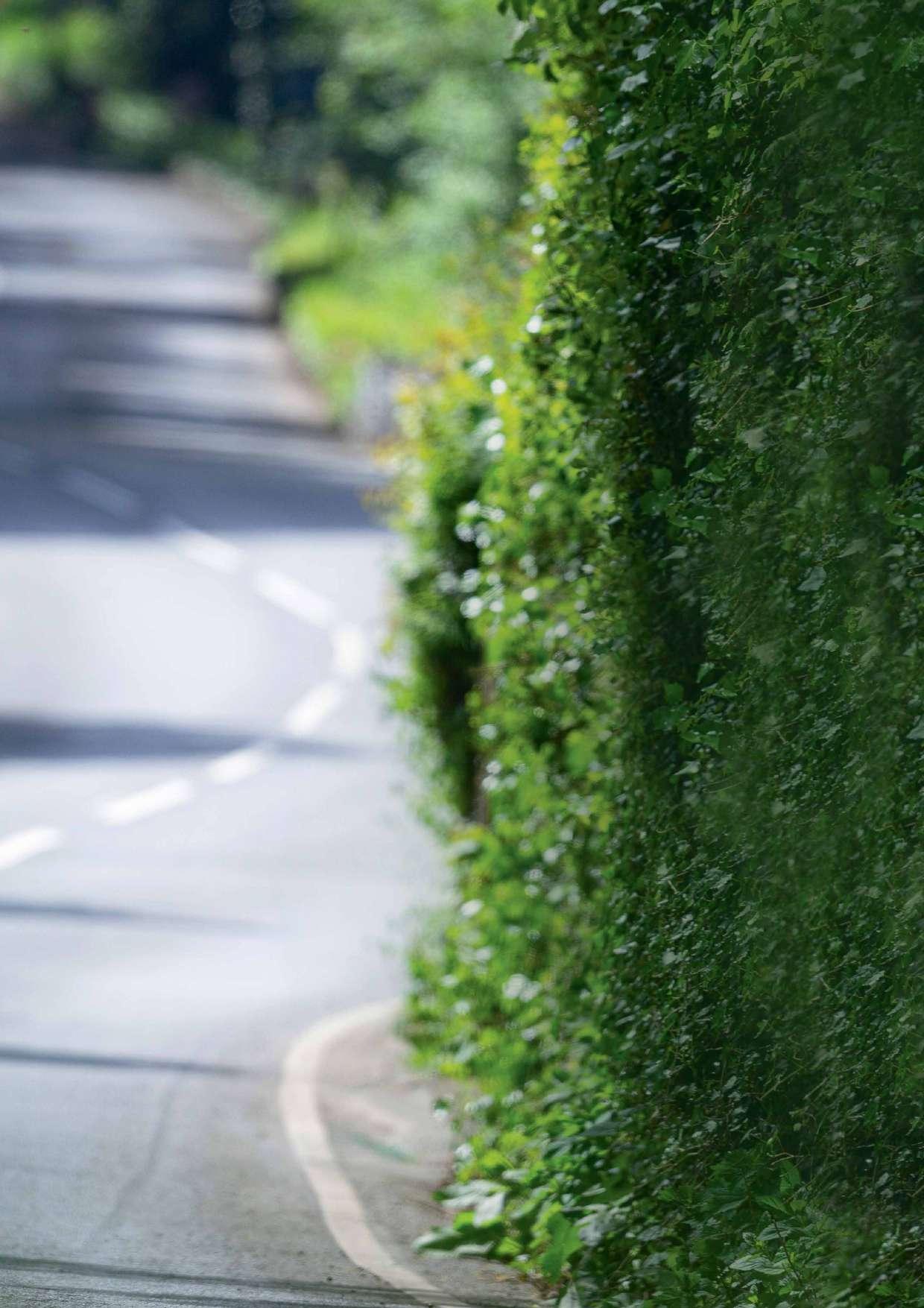
TAt 60.72km-long, the Isle of Man TT Mountain Course is by far the most dangerous track on the planet and thus commands a level of respect other tracks can only dream of.
The place has an aura to it, yet, it’s interesting how the human mind adapts to its circumstances; how it understands what’s going on and changes its reactions to keep the attached mass of flesh and bone safe. It’s even more interesting when 280 km/h on country roads begins to feel somewhat normal.
This is my second year at the Isle of
on a 1000cc four-cylinder superbike. I’m signed to ride for the famed Wilson Craig Honda organization – past TT winners and ones who know the ins and outs of the TT better than most.
After taking care of all the administrative duties, getting signed up, and ensuring all the insurances have been dealt with, a new set of Metzeler
SP2, and I’m wheeled to the start for practice on Monday morning.
fortnight are incredibly tense. You know there’s two full weeks of riding ahead
clutch release must be what it feels like to be dropped out of a plane and into a war zone.
Your senses are on hyper-alert. You’re now in the realm where any mistake could be your last.



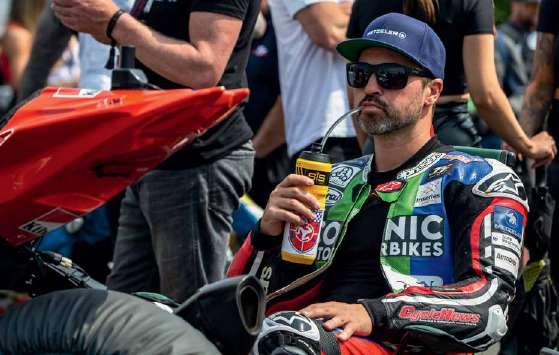

Left:
Above: Lift-o as Rennie ies through the Miltown section about halfway around the lap.
Honda is a sign of things to come. Coming out of The Bungalow and up the sixth-gear Hailwood’s Rise, the Honda drops back a gear under full throttle and smashes a valve. It takes another half-a-lap for the damage to manifest itself, but it eventually coasts to a halt at Tower Bends and I’m out for the day.
It’s an intensely frustrating experience to watch all your competitors ride by, lap after lap, and you’re unable to do a thing about it.
in on Tuesday, followed by another two on Wednesday, when the seat-unit breaks. Our speed is also not ideal, but worse is to come on Thursday when the Honda’s gearbox drops out of fourth gear to nothing at the daunting Greeba Castle, sending me towards a waiting house at about 180 km/h.
By the grace of God, I manage to keep it on two wheels but, after two more false neutrals, I call it quits. I’m done with this bike. I’m not riding it again. I quit the team and all seems completely lost.
But what a difference a day makes.
The next morning, I get my best salesman pitch on and go hunting around the pits for a new team. It’s a seemingly impossible task, but
Team on a BMW S1000RR that’s been sitting there as the spare bike for Dr. Richard Wilson, who I’m sure has the tag of “fastest corrective facial surgeon in the world” pretty much sewn up – pardon the pun.
The Kibosh boys take me in and make me feel like one of their own. The atmosphere is a mix of serious competition mixed with a never-

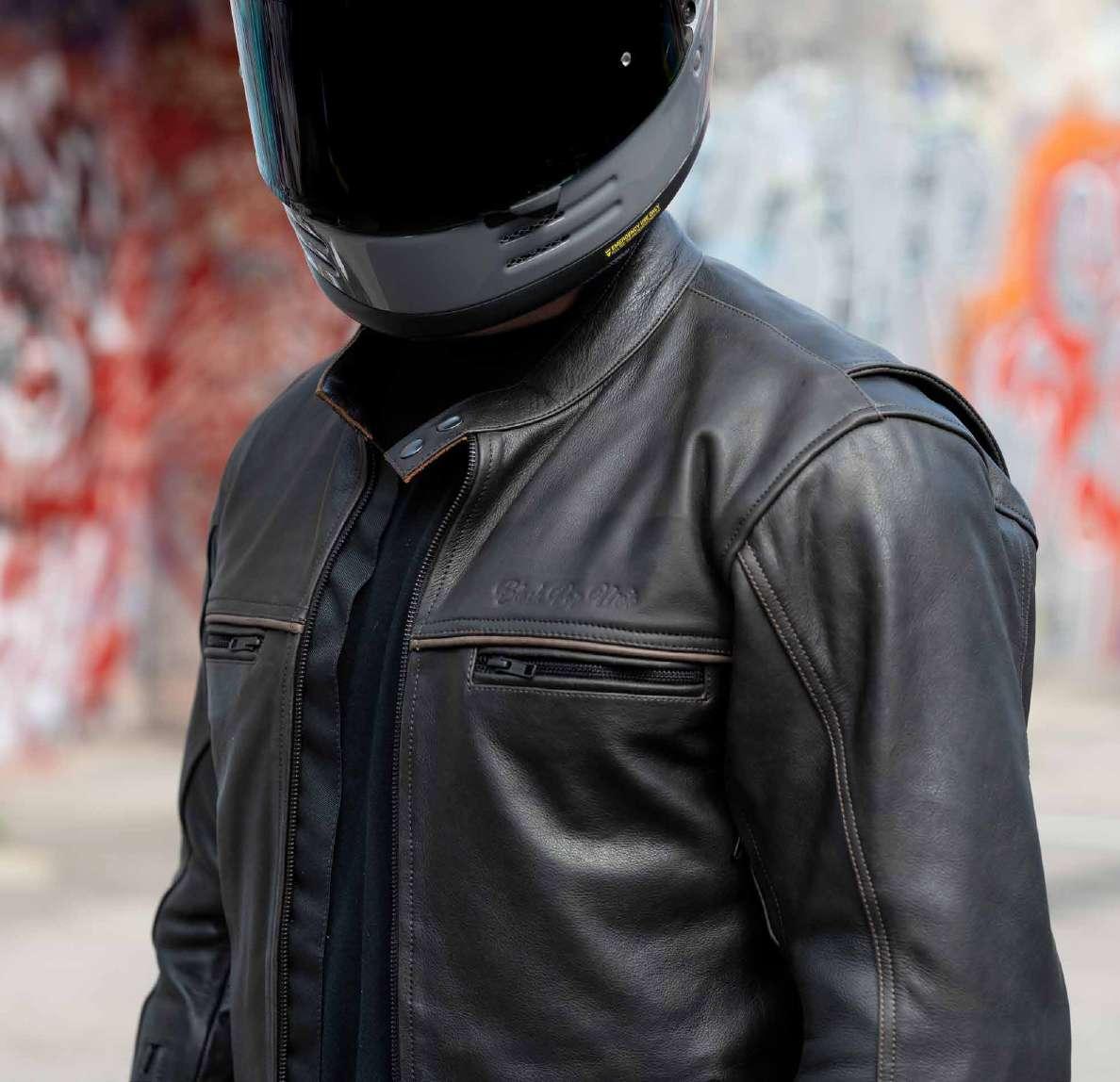




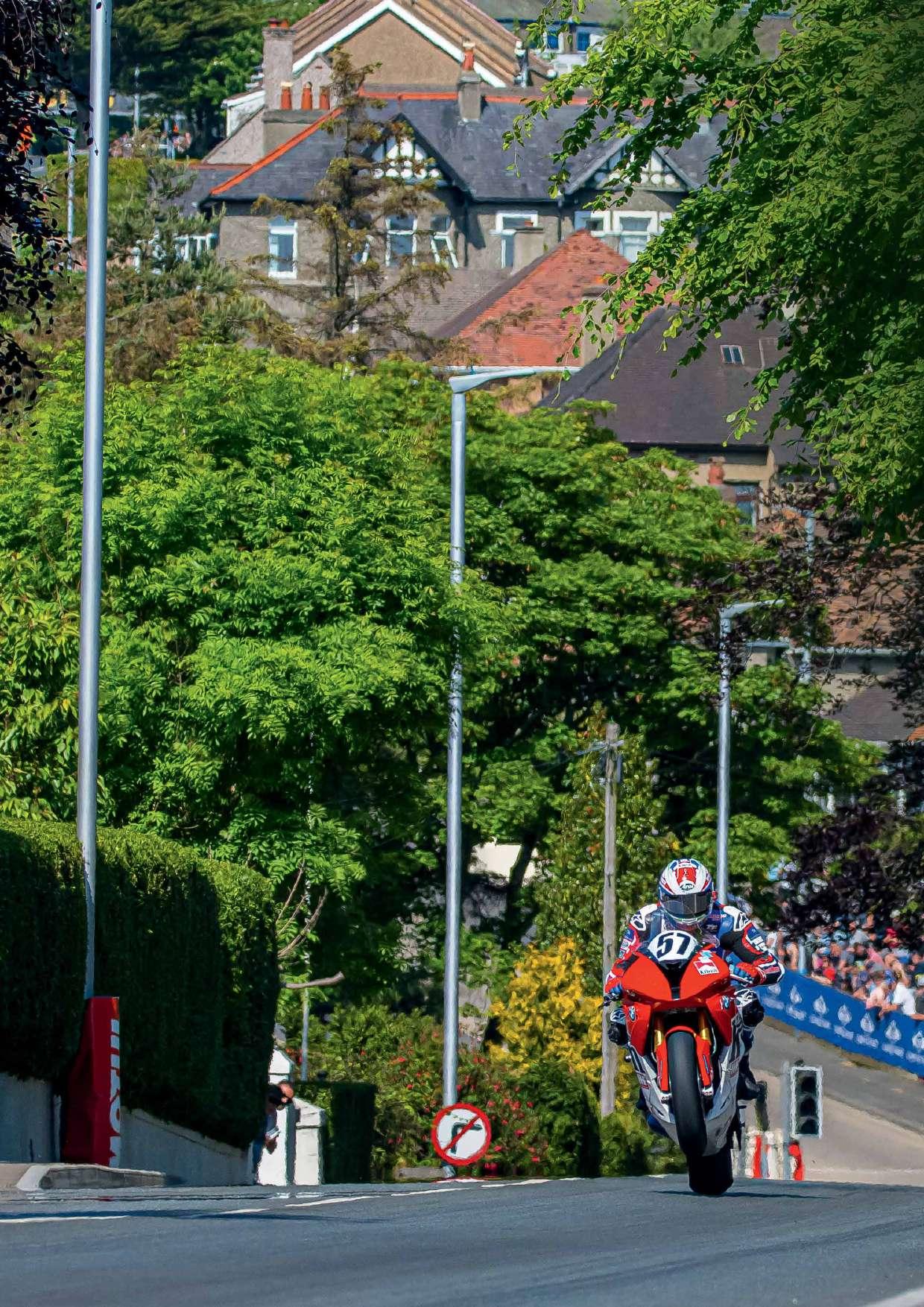
most important and commercially successful twowheeled races
Below right: Rennie launches the BMW over Ago’s Leap at 250 km/h in the Superbike TT. The fans are so close they could almost pull him o the bike.
Below left: Rennie with the world’s fastest corrective facial surgeon, his teammate in the Kibosh Racing Team, Dr. Richard Wilson.
ending tirade of polite British pisstaking, making for a fantastic place to be for the next week-and-a-half.
I manage to qualify the BMW, but only just. After three laps on Friday night, I sneak onto the grid with a 119.8mph (192.7km/h) lap, good enough for 49th out of 50 starters. Relief doesn’t begin to describe it.
A day later, I’m on the grid for the
the longest race I’ve ever done in my life so I jack myself up on hydration drinks and gels, and focus only on the rider in front as he releases the clutch and roars down Glencrutchery Road.
Ten seconds later it’s my turn, and 20 seconds later I’m doing 260 km/h down Bray Hill and up over Ago’s Leap. It’s a surreal experience as the fans, all packed in like sardines around any possible vantage point of the track, melt into one long watercolour painting.
The TT vortex is in full swing now. By the end of lap four of six, I come in for a tank of fuel and a drink and I’m beginning to get my second wind. I’m passing guys at a rate of knots and I’m up to 33rd, giving me 16 places up on my starting position. It’s a great feeling.
But then as I charge through Alpine
drops out of the BMW’s seat and my 280km/h roller-coaster ride is suddenly over. The rear tire has worn through to the wires and the BMW rolls silently to a halt, right out the front of the Ballaugh Bridge pub, where a few locals kindly buy me a consolation pint of lager.
Back in the pits, the Kibosh team
TT, I’m highly motivated – and a little pissed-off at how my fortnight has gone so far.
I must see the chequered flag, and that’s exactly what happens. After in 34th place, which is ironically the number my father made famous in his racing career, and one I have since adopted.

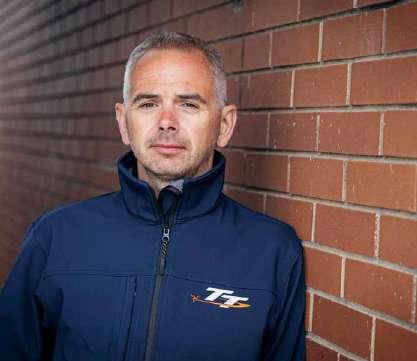
Two days later, it gets better with a 31st in the second Superstock TT, one that will go down in history as Peter Hickman smashes the lap record to set the new benchmark at a scarcely believable 136.359mph (219.449km/h).
That velocity must take into account two near dead-stop hairpins, countless and plenty of absolutely full throttle, sixth-gear sections. To thread the needle between the walls at such speed requires the precision of a brain surgeon.
six-lap Senior TT. This is the oldest motorcycle race in the world, having started in 1907 and held every year, save for the two world wars, the Foot and Mouth epidemic, and two years of the island’s Covid-19 shutdown from 2020 to 2021.
The tension in the air could be cut with a knife.
I’d not been feeling the best that morning. I’d got a heavy dose of the Isle of Man’s best hay-fever, making the inside of my helmet feel like a Petri dish, as I cough and sneeze my way
By lap two, I’m starting to get a coming, but as I pull into the pits for linkage falls off and ... that’s it.
As it turns out, the bolt that held the gear linkage on had worked its way loose, and as it fell off, it’s burred the splines of the shaft coming out of the
It’s a massive kick in the nuts after all we’d gone through to get to this point.
The TT is over for me for another year.
My team wheels the bike away, and someone hands me a beer.

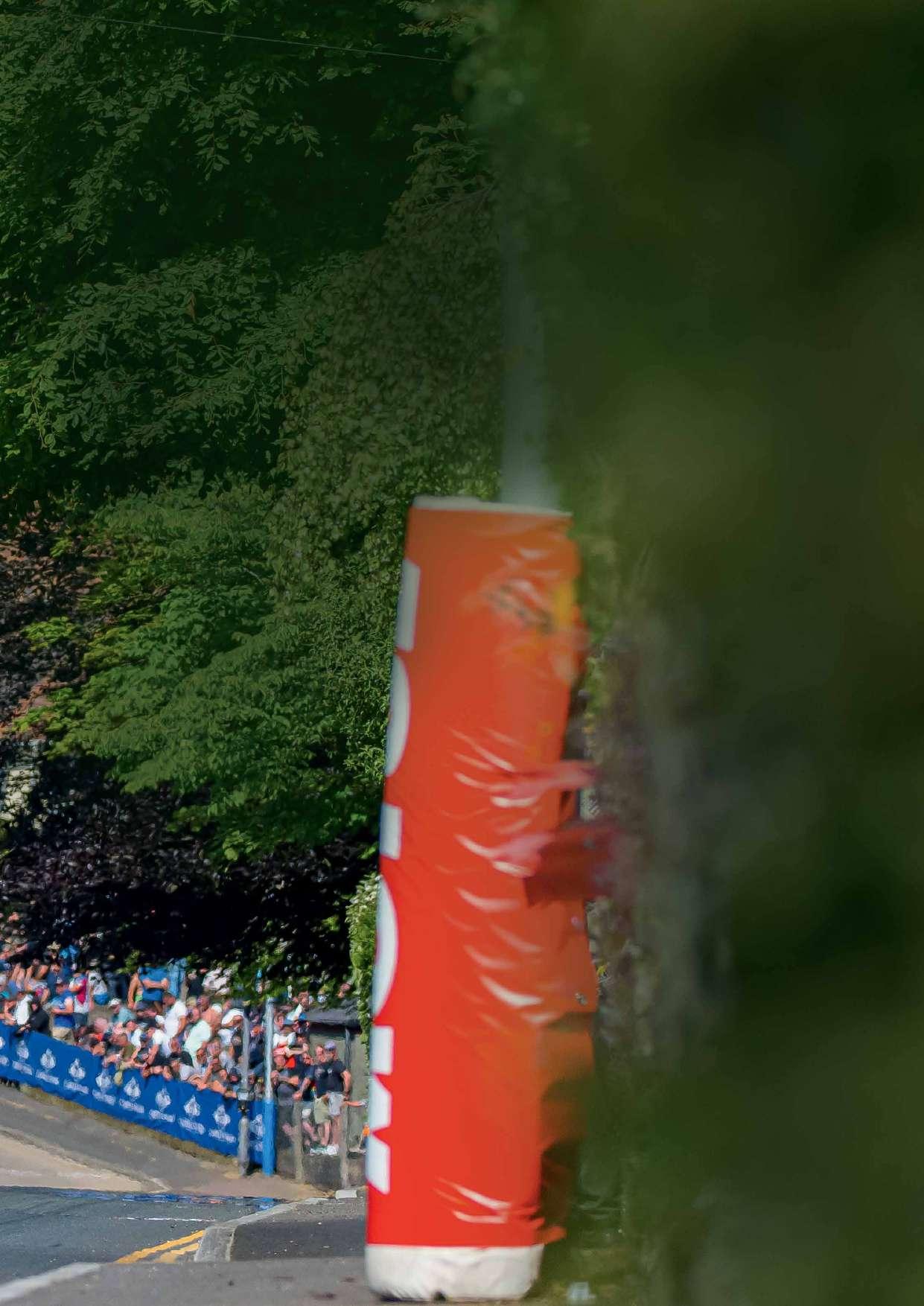

It’s disappointing, but the Isle of Man TT is the last place in the world you want to mess with on a bike that isn’t 100 per cent.
My catchphrase with this place is simple: “It’s the Isle of Man. It could always be worse.”
But, considering how the second week of TT 2023 has gone, I couldn’t really be disappointed. I’d experienced great kindness from people I’d never met, from the marshals to the administrative staff, to the thousands of fans, and the teams in the pits who all wanted to see me out there

The Isle of Man brings out the absolute best in people because everyone here knows just how dangerous a place it is. There’s no room for ego at the TT. You never know when this might be the last time you see your mate, so there’s an enormous sense of camaraderie involved. Much like soldiers on the front-line.
I hope to be back. But if I’m not, that’s OK, too. I’m one of the very few on this planet who has raced a 1000cc motorcycle around the world’s greatest racetrack, and I’m also a member of the very exclusive father-and-son TT-racer club, which is something I’m quite proud of.
The Isle of Man TT is the greatest sporting event on earth. People do things here that seem unimaginable anywhere else. It’s a special place to witness people at their best.
If you haven’t yet been, you owe it to yourself to check it out. Come and feel the Isle of Man TT vortex for yourself.
Top left: Gotta a love



The Super Meteor 650 has been built on our enduring belief that people and journeys cannot be limited to hours or kilometres. Its heart is our iconic parallel twin engine, which o ers seamless gear transitions, strong low-end acceleration and an e ortless throttle response.
BOOK YOUR TEST RIDE TODAY

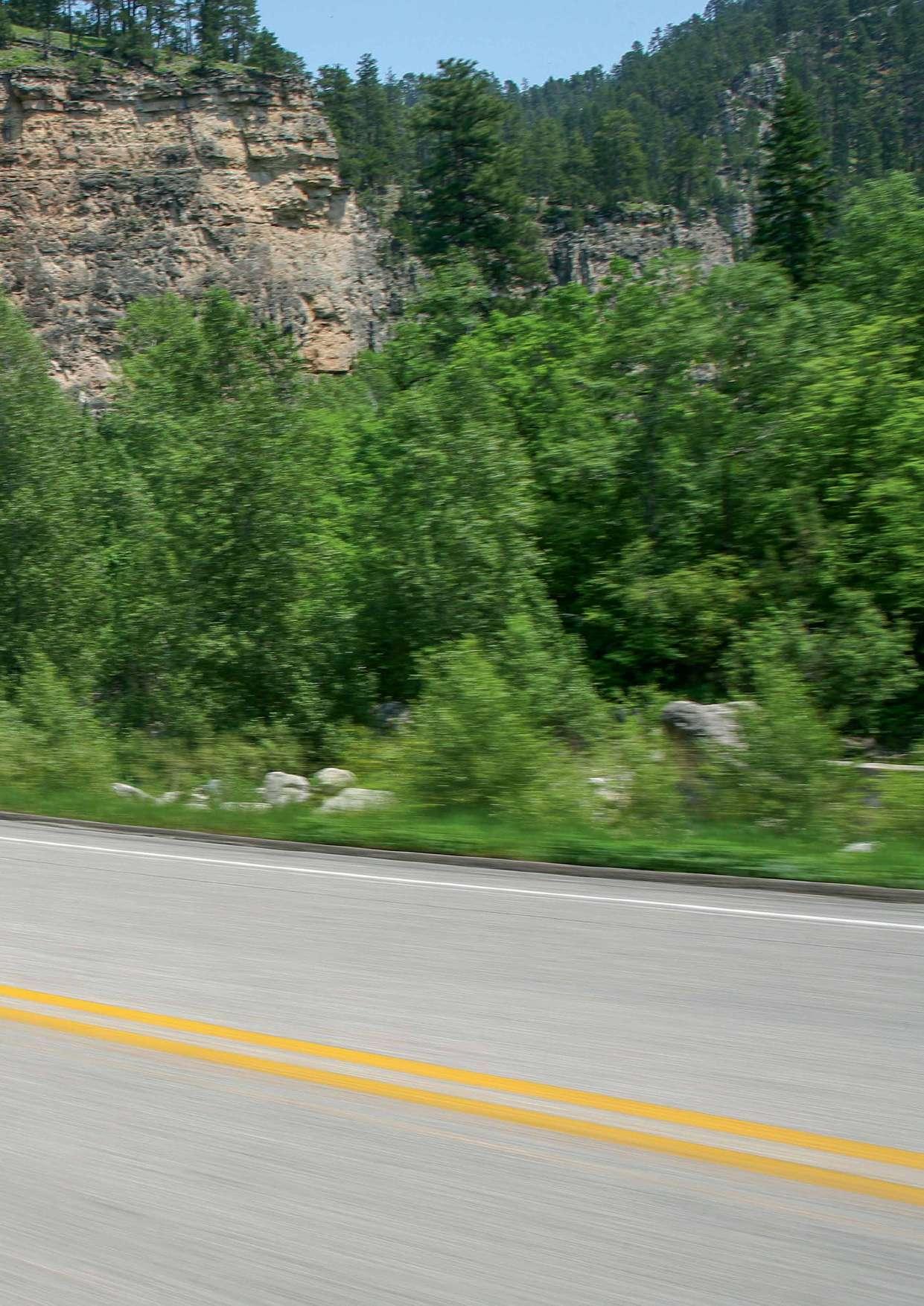
Global RepTrack 100, which tracks international brands by surveying more than 100,000 participants to see how aware people are of which brands, discovered that in 2022, Harley-Davidson ranked sixth, behind Ferrari, Lego, Rolls-Royce and Mercedes-Benz. No other stand-alone motorcycle manufacturer was even in the top 100.
Harley-Davidson just celebrated its 120th birthday. As a company,
motorcycle in a wooden shed in the backyard of the Davidson home
sold to Henry Meyer of Chicago, reportedly goes for 100,000 miles
owners without a major repair.
1904:
dealer, CH Lang of Chicago, opens for business and sells every motorcycle H-D makes that year.
1905: On July 4th, an H-D motorcycle wins a 15-mile race in Chicago with a time of 19:02.
employee is hired.
1906: A new factory, measuring
founders, and staff size has more than doubled from the previous year to eighteen employees. Factory size has doubled as well. An expanded dealer-recruitment drive begins, targeting the New England region.
1908: Walter Davidson scores a perfect 1000 points at the 7th Annual Federation of American Motorcyclists (FAM) Endurance and Reliability Contest. Three days after the contest, Walter sets the FAM economy record at 188.234 miles-per-gallon. Word of Harley-Davidson’s extremely tough motorcycle spreads rapidly.
1908: for police duty is delivered to the Detroit Police Department. Various police forces are to

weathered intensely rough trading periods, survived global economic downturns and two world wars, and remains a motorcycling icon beloved by its adherents. It’s an integral part of the American social landscape and mindset, a staggering achievement by a simple manufacturer of motorcycles. For owners of Harley-Davidsons, there is no other bike. There is only Harley-Davidson – world without end, Amen.
The marque’s history is storied, as you’d expect. And while it’s not possible in the space allotted to list its every single achievement or milestone, it’s certainly worth taking a stroll through the Milwaukee factory’s century-plus timeline –because Harley’s accomplishments are motorcycling’s accomplishments. Its history is the history of motorcycles.
1903: Twenty-one-year-old William S. Harley and 20-year-old Arthur Davidson, with the help of Walter
28x80 ft, is built on the Chestnut St (later renamed Juneau Avenue) site, and the staff is increased to six full-time employees. The motorcycle nickname “Silent Gray Fellow”, referring to H-D’s hugely reliable single-cylinder bike, is used
1907: William A Davidson, brother to Arthur and Walter Davidson, quits his job as tool foreman for the Milwaukee Road railroad and joins the company.
1907: The Harley-Davidson Motor Company is incorporated on September 17th. The stock is split four ways between the company
Left: Harley-Davidson is about so much more than just transport. Above: The men who created Harley-Davidson. Right: “The Shed” was the rst H-D workshop.
part of H-D’s business.
1909: The six-year-old Harley-Davidson Motor Company introduces its powered motorcycle. With a displacement of 49.5-cubic-inches, the bike made seven horsepower. Though that initial V-twin motor was not successful, the image of two cylinders
fast become one of the most enduring icons of Harley-Davidson.
from the Motor Company are spare parts for motorcycles.
1910: The famed Bar-and-Shield
trademarked with the US Patent
1911: The F-head engine becomes a workhorse of the Harley-

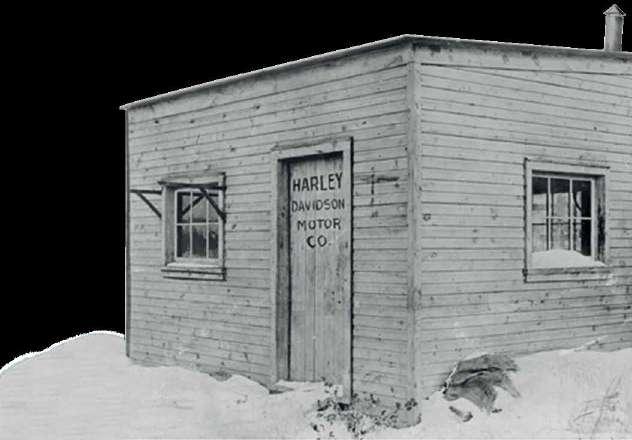
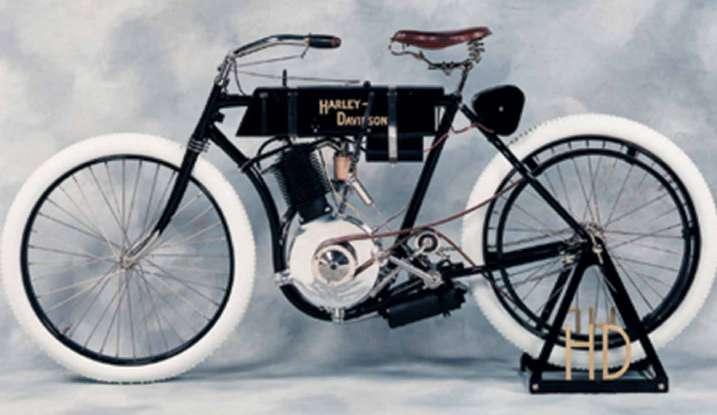
Davidson motorcycle until 1929.
1912: Construction begins on what will become the six-story headquarters and main factory building at Juneau Ave in Milwaukee. A separate Parts and Accessories Department is formed, and H-D starts exporting motorcycles to Japan, marking the
dealer network, which has now grown to over 200 nationwide.
1913: The Racing Department is formed, with William Ottaway as its
engineer William S. Harley. The Forecar delivery vehicle is offered
1914: Sidecars are made available to Harley-Davidson buyers. Clutch and brake pedals are now available on F-head singles and twins. The Motor Company formally enters motorcycle
Engineer is William Ottaway. Within a few short years, Team HarleyDavidson is referred to informally as the Wrecking Crew because of their incredible dominance of the sport. The Two-Speed rear-hub transmission is introduced for two years only in the Model 10-F.
1915: Harley-Davidson motorcycles are now available with three-speed
and primary drive on the same side.
1917: Harley-Davidson appoints its Motorcycles – in Australia, marking its entry into the fabric of Aussie motorcycle culture. During this year, roughly one-third of all HarleyDavidson motorcycles produced are sold to the US military. The Quartermaster School, a department of Harley-Davidson devoted to training military mechanics on Harley-
Davidson motorcycles, opens for business in July. The Quartermaster School later becomes the HarleyDavidson Service School.
1918: Almost half of all HarleyDavidson motorcycles produced are sold for use by the US military in World War I. Corporal Roy Holtz of Chippewa Falls, WI, riding a Harleyserviceman to enter Germany.
1920: Harley-Davidson is the largest motorcycle manufacturer in the world. New Harley-Davidson motorcycles are available from over 2,000 dealers in 67 countries worldwide. Leslie “Red” Parkhurst breaks 23 speed records on a Harley-Davidson 61-cubicinch racing motorcycle. Also, the association of the word “hog” starts when the racing team’s mascot, a pig called Johnny, is carried on a victory lap after each race won by the team.
1921: engine is introduced on the JD
and FD models. Harley-Davidson dealerships are now found in sixtyseven countries.
1925: Fuel tanks on all models now have a distinct teardrop shape. This basic appearance for Harley-Davidson motorcycles would never vary.
1926: Single-cylinder Harley-Davidson time since 1918. Models A, AA, B, and BA are available in side-valve and
cam engines are made available to the public on the JD and JH series motorcycles. The bikes are capable of top speeds between 85 and 100 mph. Front-wheel brakes are now available on all Harley-Davidson motorcycles.
1929: The 45-cubic-inch V-twin “Flathead” engine is introduced on the D model. The engine proves to be so reliable, variations of it are available on Harley-Davidson motorcycles as late as 1973.
1931: All of Harley-Davidson’s remaining American competition is now gone except Indian (Hendee Manufacturing). Indian and HarleyDavidson will be the only two American motorcycle manufacturers until 1953.
1932: The 45-cubic-inch-driven three-wheeled Servi-Car begins its 41-year run as a popular commercial and police vehicle.
1933: An art-deco eagle design is painted on all gas tanks. This marks the beginning of graphic designs on Harley-Davidson motorcycles (the only previous exception being the 1919 Sport model). This styling

Below left: Check out the super-stylish riding gear.
Right: Harley’s rst training facility.
Below right: Advertising focused not only on speed but also on relaxed touring.
decision is made in part to stimulate the low sales numbers caused by the Great Depression.
1935: The Japanese motorcycle industry is founded when HarleyDavidson licenses blueprints, tools, dies and machinery to the Sankyo Company of Japan. The result is the Rikuo (It means “Land King”) motorcycle.
1936: Introduction of the EL model, an overhead-valve, 61-cubic-inch bike with increased horsepower and bold styling changes. It’s nickname the “Knucklehead”, due to the shape of its rocker boxes. The same year, the Motor Company introduced an 80-cubic-inch side-valve engine.
1937: models are produced.
1941: America enters World War II. Production of civilian motorcycles is almost entirely suspended in favor of military production. The Service School is converted back to the Quartermaster School for the training of military mechanics. The FL series is launched with the new 74-cubicinch engines.
1942: HD produces the XA 750, believed by some as an attempt to copy the German BMW/Zundapp bikes. It has horizontally-opposed cylinders and a shaft drive. Only 1011 XAs are built.
1945: World War II ends, and HarleyDavidson has produced almost 70,000 WLA models for military use. Production of civilian motorcycles resumes in November.
1946: Harley-Davidson introduces the 45-cubic-inch flathead WR racing model, which proves to be one of the best racing motorcycles ever built.
1948: New features are added to the 61ci and 74ci overhead-valve engines, including aluminum heads and hydraulic valve-lifters. Also new are the one piece, chrome plated rocker covers shaped like cake pans. It’s quickly nicknamed the “Panhead”. Production of new lightweight motorcycles begins with the model S.
1949: Hydraulic front-forks are introduced on the new HydraGlide models.

1952: The side-valve K model is introduced with an integrated engine and transmission to compete with smaller, sportier motorcycles coming mainly from Great Britain. The K will eventually evolve into the Sportster.
1953: Harley-Davidson celebrates its 50th Anniversary with an attractive logo, depicting a “V” in honor of the engine which had brought the Company so far, with am overlaid bar reading “Harley-Davidson” and the words, above and below, “50 yearsAmerican made”. A medallion version of this logo is placed on the front fenders of the 1954 models.
1953: Hendee Manufacturing, the creator of the Indian motorcycle, goes out of business. Harley-Davidson will be the sole US motorcycle manufacturer for the next 46 years.
1956: Elvis Presley poses for the cover of the May Enthusiast magazine, sitting on his new 1956 model Harley-Davidson KH.
1957: The Sportster premieres with a 55-cubic-inch overheadvalve engine.
1958:
hydraulic rear-suspensions appear on the Duo-Glide.
1960: The Harley-Davidson Topper motor scooter is introduced. It will remain the only scooter the Motor Company ever produced.
1960: In an attempt to increase its range, Harley-Davidson purchases a half-interest in Aeronautica-Macchi, forming Aermacchi Harley-Davidson, a European division that will produce small, singlecylinder motorcycles.
1964: The three-wheeled Davidson motorcycle to receive an electric starter.
1965: The Electra Glide replaces the Duo-Glide and is updated with an electric start. The Electra Glide is the and the Sportster line receives them soon after.
1966: engines is introduced on the ElectraGlide models, replacing the Panhead.
1969: In what would nearly prove to be the death of the company, Harley-Davidson “merges” with the American Machine and Foundry Company (AMF).


1970: In consideration of new AMA rules for Class C racing, a new dirttrack racing motorcycle, the XR 750, is introduced. On the Bonneville salt flats, racer Cal Rayborn breaks the world record for land-speed set by a motorcycle. The vehicle is a sixteenfoot-long streamliner powered by a single Sportster engine, and averages just over 265-miles-per-hour.
1971: Willie G Davidson makes a journey to California. He brings back ideas which will result in the FX Super Glide with Sportster front-end and the frame and powertrain of the
snowmobile production.
1973: Motorcycle production is upgraded when all assembly operations are moved to a modern 400,000-square-foot plant in York, Pennsylvania. All other production operations remain in Milwaukee and Tomahawk. The Capitol Drive plant in Milwaukee begins production of engines.
1977: Harley-Davidson introduces the FXS Low Rider to the public in Daytona Beach. With drag-style handlebars, unique engine and paint treatments, the Low Rider also lived up to its name by placing the rider in a lowered seating position than was typical. Later in the same year, Willie G’s dynamic version of the Sportster, the Cafe Racer, is released with
1980: Harley-Davidson debuts the FLT


with its vibration-dampening, rubberisolated drivetrain and unique trailing-front fork. A Kevlar belt
on the new FXB Sturgis. The belt is cleaner running, and needs less adjustments and maintenance.
Harley-Davidson motorcycles.
1981: On February 26, thirteen Harley-Davidson senior executives sign a letter of intent to purchase the Harley-Davidson Motor Company from AMF. By mid-June, the buyback
Soars Alone” becomes a rallying cry. The Materials As Needed (MAN) application is introduced to production. This means that parts and raw materials are purchased and built only as they are required. This dramatically lowers production costs and improves quality. Over the next year, more innovations demonstrate a new commitment to quality, such as the FXR Super Glide II with its and the new Sportster’s welded and stamped frame.
1983: Harley-Davidson successfully petitions the International Trade Commission (ITC) for tariff relief, which is granted on April 1, 1983.
later, was placed on all imported Japanese motorcycles 700cc or larger as a response to Japanese motorcycle manufacturers which had been stockpiling inventories of unsold motorcycles in the United States. One of Harley-Davidson’s most successful
endeavors begins – the Harley Owners Group, or HOG. By the year 2005, it will have nearly one million members.
1984: Harley-Davidson unveils the
1984 models including the all-new Softail. The result of seven years of development, the Evolution engine produces more power at every speed. It also runs cooler, cleaner, and is relatively oil-tight. The Softail chassis, a trend-setting method of “hiding” the motorcycle’s rear shockabsorbers, debuts.
1986: In another bold styling and engineering move, Harley-Davidson releases the Heritage Softail. The Motor Company goes public and is listed on the American Stock
Davidson has traded publicly since 1969, the year of the AMF “merger”. The Sportster motorcycle line receives a smaller-capacity version of the Evolution V-twin engine.
1987: Harley-Davidson is now listed on the New York Stock Exchange and makes both business and American history when it petitions the International Trade Commission tariffs on heavyweight motorcycles. in H-D’s ability to compete in the marketplace.
1988: The classic springer frontend returns in the FXSTS Springer Softail. Harley-Davidson celebrates its 85th Anniversary with a Homecoming in Milwaukee

attended by over 60,000 enthusiasts.
1990: The FLSTF Fat Boy almost instantaneously becomes a modern legend of motorcycle design.
1991: Installation begins on the $31 million state-of-the-art paint facility at the York factory. It becomes fully operational in 1992. The Dyna line of motorcycles is inaugurated with the 1991 FXDB Dyna Glide Sturgis.
1993: Harley-Davidson celebrates its 90th Anniversary in Milwaukee with a motorcycle parade and Family Reunion. An estimated 100,000 enthusiasts attend. Harley-Davidson buys a minority interest in the Buell Motorcycle Company.
1994: The classically-styled FLHR Road King is introduced.
1995: The 30th Anniversary Ultra Classic Electra Glide becomes the motorcycle to include sequential-port fuel-injection.
1996: The new, state-of-the-art Parts and Accessories Distribution Center opens in Franklin, Wisconsin.
1997: A new 217,000-square-foot Product Development Center opens next door to the Capitol Drive plant in Milwaukee. The building is dedicated to Willie G Davidson. Powertrain Operations at Capitol Drive expand
its capacity by moving FL engine and transmission production to a newly-purchased plant located in Menomonee Falls. The Sportster XL engines and transmissions, as well as Genuine Parts Manufacturing, remain at Capitol Drive. The all-new 330,000-square-foot plant in Kansas
1998: Harley-Davidson celebrates its 95th Anniversary. Some 140,000 riders are warmly received by Milwaukee to help with the
assembly operations outside the United States opens at the new Sao Paulo, Brazil facility. Harley-Davidson buys another 49 per cent interest in Buell Motorcycle Company, which is now a controlling interest. Erik Buell is named Chairman of Buell operations.
1999: All 1999 Dyna and Touring models receive the new Twin Cam 88 engine.
2000: Buell introduces the almost universally disliked (especially by Erik) Blast, a single-cylinder motorcycle. The FXSTD Softail Deuce is introduced to the immediate delight of riders and the motorcycle media. The 2000 model-year Softails are counterbalanced version of the Twin Cam 88. Fuel-injection is offered as an option to the Softail line.
2001: Harley-Davidson announces the release of the VRSCA V-Rod
cooled, dual overhead-cam-powered street motorcycle.
2002: Harley-Davidson begins a 14-month, worldwide celebration



of its 100th anniversary with the debut of the Open Road Tour in Atlanta. Buell unveils the revolutionary XB9R Firebolt with fuel in the frame and oil in the swingarm.
2003: The 2003 model-year marks 100 years of motorcycle production. are produced in anniversary trim with badges and logos commemorating the event. The 100th Anniversary Open Road Tour makes the last of ten worldwide stops in Milwaukee over Labor Day weekend and is attended by approximately a quartermillion celebrants.
2004: For 2004, the Sportsters receive rubber engine-mounting, a new frame, and a wider rear tyre. Some Sportster models get a redesigned petrol tank. The FLHRSI Road King Custom is introduced. With its low rear-suspension and wide handlebars, the FLHRSI brings an east-coast California-custom feel to a classic Harley-Davidson motorcycle.
2005: Harley-Davidson purchases a 20-acre plot of land near downtown Milwaukee as a site for its new Museum. The Sportster 883 Low brings a lowered seating-position to the Sportster line. The FLSTNI Softail Deluxe adds a sleeker look to the Softail line with a paint scheme reminiscent of the 1939 HarleyDavidson motorcycles. Also, the FLSTSC/I Softail Springer Classic revives a look from the late 1940s.
2006: transmissions are made available on the 2006 Dynas. Also joining the Dyna family is the FXDB/I Street Bob. The 2006 model-year includes the all new FLHX/I Street Glide, a
Harley-Davidson unveils plans for its all-new museum in Milwaukee,
scheduled to open in 2008.
2007: Harley-Davidson introduces a new member into the Sportster family, the XL 1200N Nightster, a factorycustom motorcycle marketed to a younger audience.
2008: Harley-Davidson introduces two new Softail models: the Crossbones/ FLSTSB and the Rocker/FXCW. The Motor Company celebrates its 105th anniversary with a two-day celebration at Milwaukee’s Festival Park. The long-anticipated Harley-Davidson Museum opens in the heart of the Menominee Valley in Milwaukee. The Buell Motorcycle Company and the Harley Owners Group both celebrate their 25th anniversaries. HarleyDavidson releases the XR1200 in Europe, the Middle East, and Africa. The XR1200 is designed for the European market and is not initially released in the United States.
2009: Harley-Davidson announces its expansion into India. The 2009
Left: Amateur competitions were another strong point for Harley.
Below: An interesting turnabout for a publicity shot: Generally, it was the boy on the bike!
Right: Not sure about the “jet silhouette” but Sportsters tted right in with the Air Force.
Far right: The Motor Company often reaches back into its own history for styling cues.
Bottom right: Bikes in every direction. HarleyDavidson 120th Anniversary
Bottom far right: Veteran’s Park, Milwaukee Lakefront birthday bash. Pic: Nate Vomhof Media
wheeler for public purchase in the new FLHTCUTG Tri Glide Ultra Classic. Also new is the history-inspired Cross Bones, a bobbed factory custom.
2010: The XL Forty-Eight is introduced.
2011: Harley-Davidson streamlines personal customisation with its H-D1 division, allowing riders to receive a factory-built custom motorcycle. The new Dyna Switchback which features detachable saddlebags and a quickdetach screen debuts.
2012: Added to the 2012 range are the new Softail Slim and the SeventyTwo. Rider’s Edge, the HarleyDavidson Academy of Motorcycling. celebrates the milestone of training 300,000 motorcycle riders in the New Rider’s Course since its inception in 2000.
2013: Harley-Davidson wraps up a year-long global celebration, with rallies around the globe leading to its 110th anniversary party in Milwaukee.
2014: Harley-Davidson reveals
Harley-Davidson motorcycle. The entire Harley-Davidson touring line is upgraded with the arrival of Project


Rushmore. Improvements include best-in-class infotainment with the Boom!Box sound systems, and onetouch saddlebags.
2015: Harley-Davidson announces plans to transition to a directdistribution model to independentlyowned dealers in Canada. Announced in late 2014, the Street 750 and Street 500 feature new liquid-cooled Revolution X engines and dark custom styling.
2017: Harley-Davidson Road King Special delivers all-new grunt. Powered by the Milwaukee-Eight engine. Swapping chrome for black, the new Road King Special pushes Harley-Davidson’s touring line in a dramatic new styling direction it hopes is more modern. The HarleyDavidson Street Glide is named Rider magazine’s Motorcycle of the Year.
The Milwaukee-Eight engine is introduced for 2017 touring range, trike and the two CVO models. It is


engine with four valves per-cylinder, a single chain-driven cam, dual spark plugs, and is counter-balanced and rubber-mounted.
2018: Harley-Davidson Motor Company reaches its 115th Anniversary. The largest productdevelopment project in H-D history culminates in the all-new Softail models with the key improvement of a monoshock rear-suspension with an accessible pre-load adjuster.
2021: Harley-Davidson Motor Company introduces the Pan America
bike market. Powered by the allnew Revolution Max 1250 engine, its model-range into previously untouched territory. The Motor
Company also launches the LiveWire, to include an electric motorcycle in its line-up. Harley-Davidson also launches H-D1 Marketplace to provide consumers with the most comprehensive opportunity to search, experience, sell and purchase preowned Harley-Davidson motorcycles across North America. It also offers up the Sportster S, which is also powered by the new Revolution Max 1250T engine.
That about brings us up to date, but there’s no doubt this timeline is nothing but a work-in-progress for what has proved to be one of the greatest motorcycle manufacturers the world has ever seen. Long may it keep making them. AMM

E T S T
rIgHT, SO FIRST THINg
Now that’s out of the way, let me state it is common knowledge among motorcyclists that Moto Guzzi riders are the submariners of the motorcycle world.
Like real submariners, they live a truth denied to others. Brave or crazy, or chunks of both, they’re fun to have a drink with until they’re not. Then you have to use a chair to subdue them.
They are perfectly suited to the marque they have embraced – one-eyed and fanatical, they truly believe they ride the greatest two-wheeled creation ever made. No evidence to the contrary will be accepted. Their cognitive dissonance is complete.
They have mainlined that soaring Italian eagle into their grospy veins, pledged their undying allegiance to the most unique engine
the rest of us can piss off because we just don’t get it. Which is when you should start smashing them with a chair.
With the obvious exception of HarleyDavidson, no other brand instils such devotion into owners. Those latte-breathed Ducatisi aren’t even close. Laverda owners can only admire the Moto Guzzi obsessives from a

much lower mountain. No Jap-bike rider would ever be as wedded to a brand as a Guzzi rider is. And every BMW or KTM owner just knows better.
Moto Guzzi owners and riders are in a class the good Reverend Jim Jones would have been proud to share the Kool Aid with.
But I do love me a fanatic. I have my own zealotry to cope with, and I easily identify it in others. And, to be perfectly honest, all men should, at one time in their lives, own a Moto Guzzi. Sometimes you just gotta taste the crazy, right?
But up until now, licking that popsicle was a bridge too far for most people. It might have been a road you couldn’t ever get off. Moto Guzzis have always been hugely idiosyncratic motorcycles – which is known as “character” in some circles. The factory, for its part, has built some staggeringly beautiful bikes. And it has also built some munted horrors which have scarred human sensibilities. But it’s hardly alone there.
I have ridden a bunch of Guzzis over the years. I spent a fair amount of time with two in particular – an early 90s California and a
with 8.6 gears in it, most of them travelling neutrals, and looked far more like a gibbon’s idea of a US cruiser than anything an




Italian craftsman would make. And the second invariably hated any kind of petrol you’d put in it, hunted like a dog, leaked oil, refused to start, and would offer you blue smoke instead of electrical compliance when so moved.
But they both handled. Very, very well. Crazy well, in fact. So well, the idiot parts of my brain would whisper maybe I should buy one. Who knew? it said. Maybe I’d get one that wasn’t so packed with “character” it might actually work properly for more than three days at a time.
I didn’t listen. I had enough existential issues with my Harley around that time. I did not need to add wild Italian despair to my fuming hatred of Milwaukee.
And so there I remained. I did not succumb to the lure of the submariner, but I did manage to ride a whole heap of Guzzis in the following years.
Mandello did things differently. That was obvious. That was the appeal, after all. And to my mind, the factory would remain on a kind of strange motorcycle side-road, cloaked in
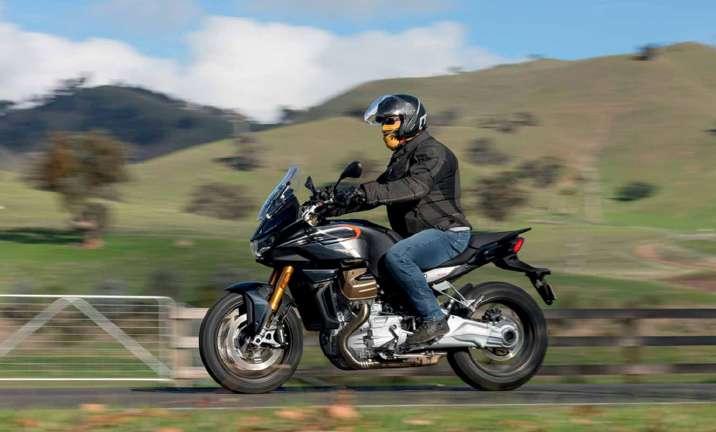
an amazing history, adored by its adherents, but somehow unable or unwilling to build a bike that appealed to the non-submariners among us.
Until now.
The V100 Mandello is unmistakably a Moto Guzzi, but a Moto Guzzi unlike all that have gone before.
remains, but the heads have been spun through 90-degrees, and it’s now liquid cooled.
I had always though the transversetwin engine to be a thing of great beauty. And hanging the pipes out the side of the heads rather than arcing out the front is a huge styling departure – even though it makes great engineering sense.
It’s still a good-looking motor. And Guzzi has ensured a few traditional styling cues have been retained, like tail-light. You’ll also note the LED running light is Guzzi’s soaring eagle logo – a very cool touch.
Above: I was NOT dreaming of a white Christmas. Left: The ergos are great for long days in the saddle.


And it’s far more than the sum of its numbers. There are 115 horses, 105Nm of torque, and it’s all delivered in a very flat-lined fashion. It weighs 233kg wet, and hauls 17-litres of petrol around, which is good for about 250km-odd, I reckon.
There’s a whole suite of electronic rider-aids, and a bunch of modes, including two programmable ones. Mine basically sat in Sport the whole time, because the only real difference I noticed was between it and Rain. All the horses gallop in all the modes, the difference is in throttle response and suspension settings on the S model.
There are two variants available. The S model, which comes with semiactive Öhlins Smart EC2.0 suspension, sexier forks, a quickshifter, and heated grips. And the Not-The-S model, which doesn’t have those goodies, but offers adjustable suspension to stop you whining. Oh, and both have the electric screen, and integrated pannier mounts.
The S comes in two lovely twotone colours. There’s a grey-andgreen one called the Verde 2121, and the black-and-grey Grigio Avanguardia. The base Mandello you can have in red (Rosso


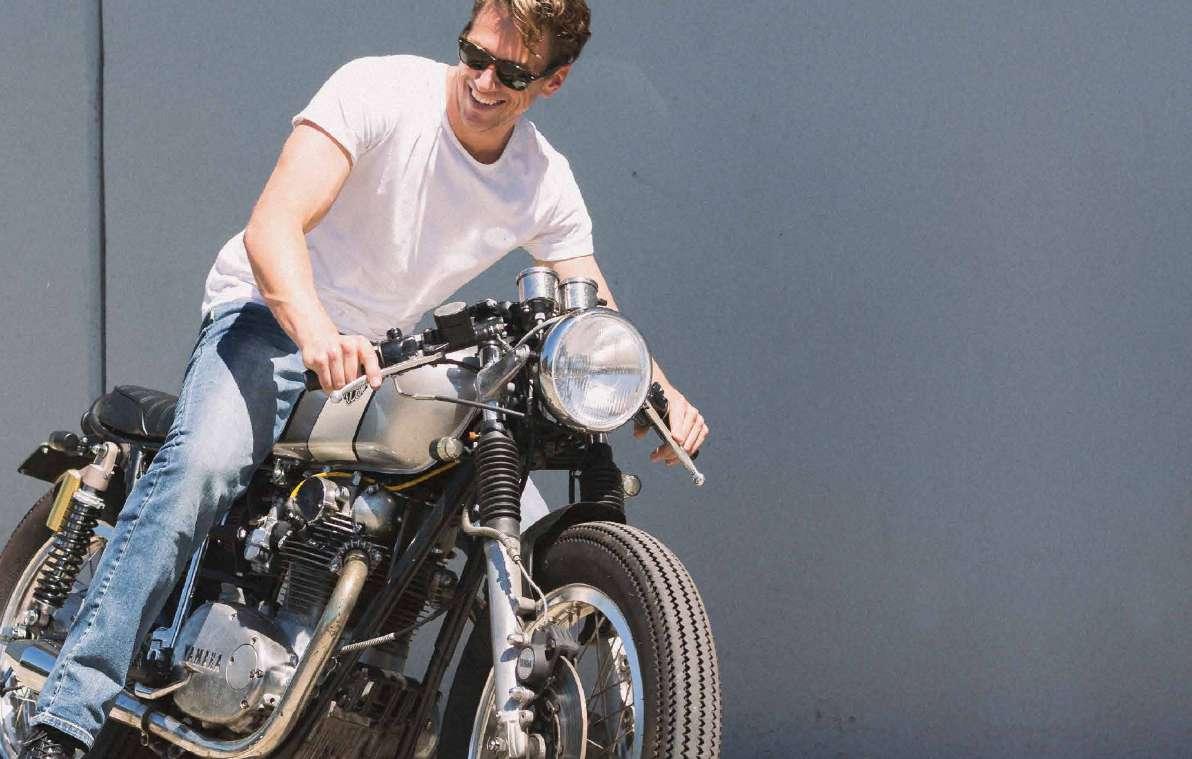
Magma) or white (Bianco Polare).
And both models have what Guzzi calls an “adaptive aerodynamic that has quite a few such feathers in its cap.
Guzzi claims it reduces air pressure on the rider by 22 per cent. It has a wind tunnel at the factory, so it’s hard to argue with that statement. The aero works like this...
At a set speed – which you can set, or leave at the factory-set 100km/h –two sections of the petrol tank, each about the size of a strangler’s hand – rise up a few centimetres, one in front of each manly thigh. And thus, the brief goes, the air pressure on those manly thighs is reduced. When your speed drops below a hundred (or whatever you program into it), the sections retract.
Pete Vorst, who mostly rode the white one at the press launch because he was late getting his sleepy arse to the garage where I had already claimed the lovely Grigio Avangaurdia, said it reminded him of a sea-clam opening sensuously to the sway of the tides. I almost fell off the lookout laughing. Yes, the white one would certainly look like that.
Happily, you can’t see it happening

as you ride. The deployment happens
good. Bits of your tank acting all clam-like could distract the more fluffy-headed among us. Like me.
To be honest, I did not feel the aero-thingies made much of a difference. It’s true my thighs are like weathered leather, so there’s that. And I did very much try to notice if there was a lessening of wind pressure. But I didn’t.
And I don’t give a shit. It’s such a cool thing to have going on when you’re riding.
As for the whole Mandello V100 riding experience? Hand on my heart, it was great. The Mandello is a wonderful bike. It’s agile, loves twisties, and is as stable and sure-footed as the class-leaders in this niche, and more so than a lot of contenders. It feels solid, planted, and substantial. Guzzis have always handled well. The factory has relentlessly ensured that.
And it goes. I thought it would give some bang away to the R1250RS with which it directly competes, and which has 250 more ccs. And maybe that is the case on a dyno. It sure didn’t feel like it on the road. The V100
Mandello delivers its power smoothly, and doesn’t stop all the way to red-line which is 10,000, if I recall. Speeds in the low 200s are right there, pilgrim, if you’ve a mind to sail that way.
The traditional Guzzi torque-lurch is gone. My brain told me the ghost of it remained, but that’s what angst does to you. It scars you forever. Feel free to lash this thing into corners as hard as you like. It’s not got any “character” there to mess with you.
But it remains unmistakably a Guzzi. Rich torque delivery – so creamy it’s like you’re riding an entire dairy farm – and the ability to brake, lean, and power out of bends with the best of them.
It’s comfortable, as two full days in the saddle followed by my ability to walk unaided through airport security will attest. So, it ticks the touring bike box.
Seeing as how this was a Press Launch, I didn’t do big miles, but one does tend to spend most of the day in the saddle. Our well-heated leadrider, Chris “The Sheepdog” Harris, ensured I was treated to some lovely Victorian roads, some wildly bracing temperatures, and a wee frolic in the snow up past Lake Mountain. It was a pretty good exploration of
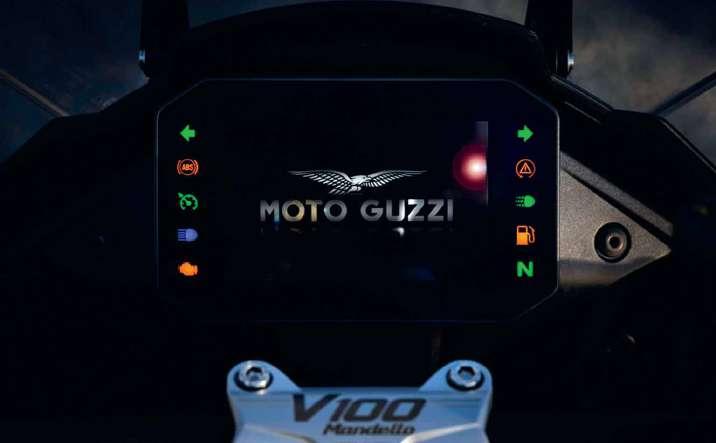
the Mandello’s integrity.
I rode it on roads strewn with leaflitter, bark, snow, ice, and a whole heap of those awful “Surprise, dickhead!” potholes which are everywhere these days.
I also rode it on sweet, fast sweepers – how good is that Gembrook road? – and even managed some mindless freeway time for the transport stages.
As always, I’d made an idiot’s attempt to keep Cam Donald in sight for more than a corner-and-a-half, almost died, then went about my business as normal. This taught me the Mandello can be ridden several orders of magnitude faster than I could ride it. And that is valuable information. I don’t always have to do things to know they can be done. This is how aspiration is nurtured.
But it’s not without some peccadillos. Firstly, the heated grips seem better suited to the warmer climes of southern Italy than the it’s-a-bullshit-three-degrees-and-I’m riding-in-snow crap Victoria served up. Even dialled up to three (the max) they seemed half-hearted. BMW has
hands burn.
Then there’s the whole accessing the stuff thing. Moto Guzzi, like Aprilia, is owned by Piaggio. And, probably because “Shut-up, it’s Italy!”, access to, and navigation through, the menus and submenus where the heated grips and electronic screen controls are, is more stressful than it needs to be. I’m sure owners can get used it. I’m not sure why they have to.
It’s not hard to put a button that controls the heated grips on the switchblock. Put another button next to it that deals with the screen. When you make me scroll through menus while I’m trying not to spear off a cliff,
Left: The Gembrook road is quite a roller-coaster.
Top left: The dash is all-colour TFT, as you’d expect.
Top right: Victoria has some lovely riding roads. Bugger-all sun, but.
Bottom left: That pipe is the rst thing I’d replace. It mu es what will sound glorious.
Bottom right: Guzzi did not forget to include its famous gills.

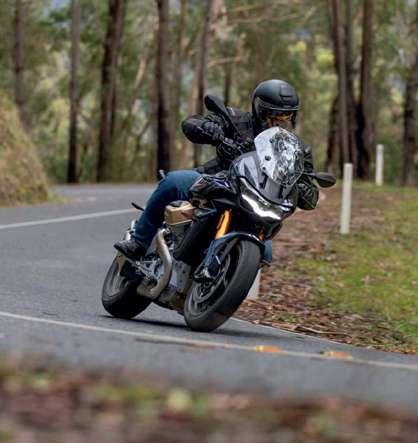
I’m gonna make a frowny face.
None of that is a deal-breaker, to be honest. I’m not the kind of rider that spends any time at all frigging about with rider modes and buttons. lives forever. I would have enjoyed easier access to the grips and screen, but that just reads a bit like I’m a nit-picking sumbitch.
The V100 Mandello is the bike Moto Guzzi diehards have been waiting for. And it will not disappoint. But it is also the bike that puts Moto Guzzi into the headspace of people who might never have considered buying one.
They’ve heard the talk. They might even have met some submariners. But that’s like deciding not to consider a Harley because you’ve met HOG members.
Moto Guzzi has built a bike for now. For the real world. For the roads we ride and how we ride them.
A round of applause for the ragazzi of Mandello. They’ve done very, very well. The V100 Mandello is the best Moto Guzzi ever built.

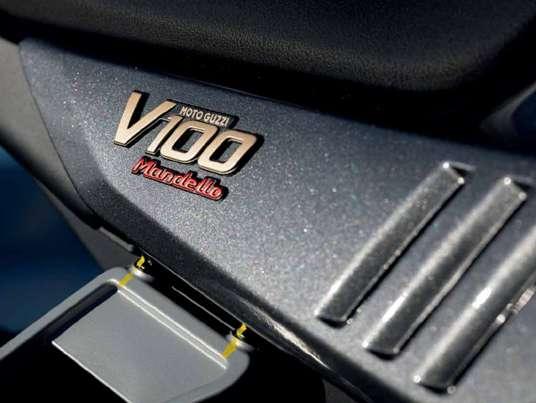

Igreatlyenjoyed this press launch.
The company was good, the bike was great, and I rode parts of Victoria which I have always loved to ride. Yeah, it was cold, and yeah, there was snow, but my mum didn’t raise no bitch, and there’s that whole thing about Jesus hating pussies. I’ve ridden much worse crap on far worse bikes, and still had a great time.
But the highlight of my trip was meeting Teo Lamers, and visiting his Cathedral of Moto Guzzi – the largest privately-owned collection of Moto Guzzis on earth.
It’s on three levels, and you can be forgiven if you spend your time there with your mouth agape, walking quietly and respectfully, as if you were treading on hallowed ground.
Because you are. This is Teo’s monument to Moto Guzzi, and showcases his unswerving
commitment to the brand. He is a fanatic – and I love fanatics. They are pure of intent and spirit, which is why so many motorcyclists make great fanatics. We see the world differently.
Teo has collected nigh-on three hundred of Mandello’s creations. Many of the models are in sequential modelyear order. Some are so rare, you’re seeing the only one in existence. Some are insanely hideous. Some are staggeringly beautiful. It is a collection that encompasses the entire vast and storied history of one of the world’s greatest marques.
None are “restored”, because Teo is correctly of the view that each bike has a story to tell, and to restore it to concourse condition would be to kill that story.
But this is no dusty barn full of cobwebbed wreckage. Teo loves the marque with a passion a dedication
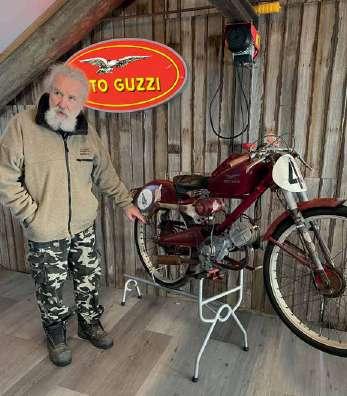


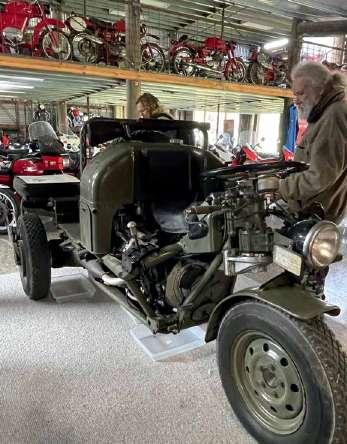


Our Adventure riding guided tours are all about experiencing Tasmania and combining it with the simple joy of motorcycling. We will have you winding through endless corners, up and over hills and mountains in the morning and then cruising wide-open sweepers beside the ocean in the afternoon. But simply having great motorcycling roads doesn’t make a memorable tour. We combine riding with the fantastic local foods and premium accommodation Tasmania is so famous for.

that is evident in every word he speaks when you ask him about this bike or that bike. The place is spotless, and the bikes, while unrestored, are kept in an ordered and spotless condition. It’s out near Yea, and you while it’s open to the public, you must contact Teo before you rock up. This is his

private collection, and this is his home, and the right thing to do if you want to see this truly stunning collection, and meet the amazing man who has
Trust me, it’s worth it.
You can email Teo at: teolamers@bigpond.com AMM
Iwas given gifts by Peter Stevens Imports. I received a Moto Guzzi T-shirt, a pen, a key-ring, a water bottle, a Wolverine comic book, and a tin cup. Obviously, I would dwell among the cheaper whores if anyone thinks that’s gonna buy my love. Flying me First Class for two weeks of riding in the south of Italy...well, that’s a whole other thing.

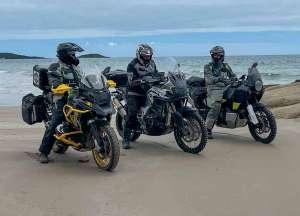
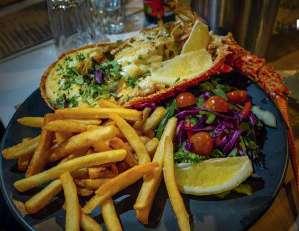
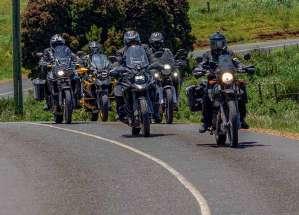
t EMOR a , NSW
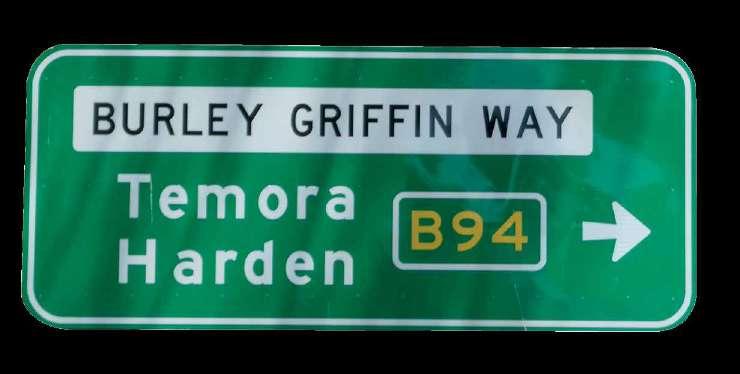

THE uNquESTIONAblY mAIN ATTRAcTION
Temora airport was the site of the biggest and longest lasting RAAF Elementary Flying Training School during World War 2. It was called 10 EFTS and was established in May 1941. Training ended in May 1945
and a total of 2741 pilots were trained on Tiger Moths at Temora.
Today 10 EFTS is the Temora Aviation Museum. The Museum displays ex-military aircraft which have
Now there are many different kinds of museums, but as far as technologyrelated establishments are concerned Temora is the best kind – it is, as I mentioned, devoted to machines that actually work. Temora’s aircraft fly, and frequently. The museum claims historic aircraft.
The museum is on the northern
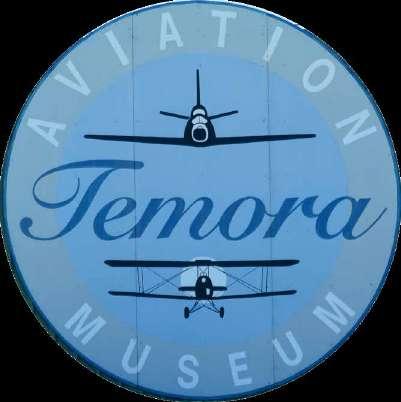
outskirts of town. The entrance building is the original 10 EFTS guardhouse, relocated from the airport main gate. It has been refurbished and now houses a display recounting the story of the Empire Air Training Scheme and 10 EFTS. The walls of the main building are still clad in the original corrugated iron, the windows
is also the original material. The asbestos roof has been replaced







OrANgE rOuTE
This is a slice of the
I have marked the route from the Hume Highway near Bowning to Temora, although it continues in both directions. Notable places include Binalong, with a nice café, and Harden (mentioned elsewhere) and er, little towns that seem mainly to have closed down. Surface is good, there’s plenty of fuel although the servo at Wallendbeen, at the intersection with the Olympic Highway has closed.
grEEN rOuTE
From Young to Temora there is very little other than lovely Australian agricultural scenery. The road is in good shape except for a couple of rough spots which might, but there are probably a couple of new ones to take their place.
pINk rOuTE
Junee is likewise nothing special but still very pleasant. Its main attraction here is that it is the quickest way to get to Temora from the south if you’re travelling the Olympic Highway.
yEllOw rOuTE
Hmm, I’m really having trouble making these roads seem individual and interesting. The run from West Wyalong down along the railway line and is essentially straight, though not narrow. Ah ha, a little joke there. Really, the point of all these roads is to get you to Temora and this is a good route if you’re coming from the north on the Newell Highway or from the west on the Mid-Western Highway.




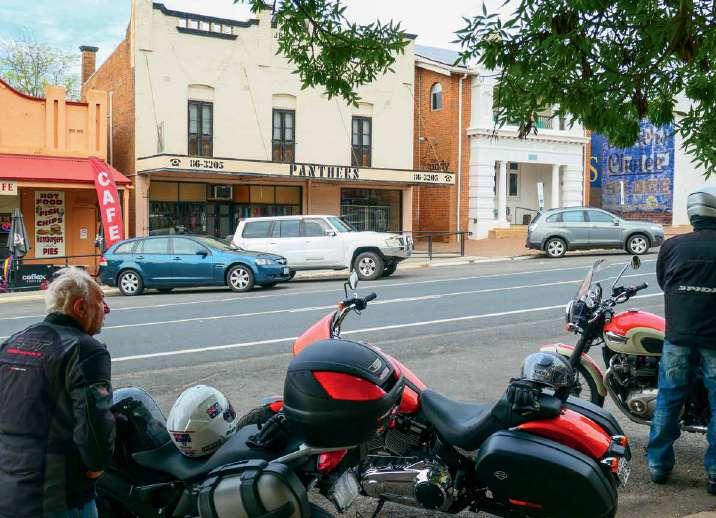
have been removed.
The building holds a wonderful range of aircraft including the Australian-built Vampire in Australia, as well as the only flying Gloster Meteor F.8 in the world. Don’t worry if those names mean nothing to you; they will once you’ve seen the aircraft at the museum.
The second building has been constructed in the style of the barracks buildings in which trainees and instructors lived. It houses a 38-seat theatre and a range of exhibits. Among other subjects the exhibits cover the aircraft of the Royal Australian Navy, the Magic of Flight, the development
Martin Baker Ejection Seats. All quite fascinating if you’re any kind of tech head, and let’s face it – most bike riders are.
The Museum hosts flying weekends out the dates and museum opening times, visit the museum website at
www.aviationmuseum.com.au
(it has some wonderful video) or call 02 6977 1088.
The town itself has some pleasant motels, pubs, and cafés, all good enough so I would not like to single any of them out here. Book accommodation well ahead on flying weekends. There is a helpful Visitor Information Centre, phone 02 6977 1511, e-mail tourism@temora.nsw.gov.au.
Aside from information, the centre has nice clean toilets and sells a limited range of souvenirs. Temora is full of interesting old buildings – there’s a free booklet about them available at the Centre. Oh, and the Temora Rural Museum on the other side of town has
well as a top collection of tractors.
I must admit I’ve only ever treated West Wyalong as a fuel-and-food stop
on my way somewhere else, which I’m sure means I can’t do the place justice. It certainly has everything you might place at the meeting point of the Newell and Mid-Western highways, far to the east.
Should you be a trainspotter, you will know all about Junee. It is a magnet for such folk, catering to them with a lot of trains running through the middle of town and even a museum with a working turntable. At least it was working last time I looked. The railway station is an absolute gem with its period-correct tearoom. Oddly, there is not a whole lot of choice of food places, but the pub across the railway from the station is good.
A strange amalgam of the old and new, Harden nevertheless presents nicely and offers all the services you might like. Don’t just roll down the main street, although just about everything important is there, but make the short detour down to the railway for a look at some interesting buildings and an old locomotive. Harden is one of the main centres and variably paved road named after one of the architects who laid out Canberra.
I like Young very much, and it’s not only because it produces such delicious cherries. Despite its remote location, Young is quite a sophisticated place with a couple of outstanding restaurants and a main street that is set up for coffee drinking in a bucolic atmosphere. AMM



Im
Given I’m the type of person who would leave my train seat to go and grab the guy loudly watching a YouTube video on his phone without headphones and throw him out the door while we’re still moving, it’s best for everyone that I don’t take the train or bus.
So why don’t you ride to work?
You’re making excuses already, aren’t you? You don’t want to rack up lots of miles on your bike. It’s raining. It’s hot. You can’t carry your work
stuff on your bike. Your bike’s just not suited to commuting. You have nowhere to park at work. Your bike uses expensive tyres and you don’t want to waste them commuting. You
you, really, I do, and what I hear is the sound of someone being a pussy. A whining, mewling, annoying pussy. Stop it. You’re pissing me off, like that guy watching the video on his phone on the train.
Let me give you the greatest reason of all to ride a bike to work. Are you ready?
You’ll be riding a motorcycle. And you wouldn’t have bought this magazine unless you like riding motorcycles, so I think we may have landed on common ground.
No day starts poorly when you start it by riding a bike. Sure, it could all
turn to shit when you get to work and remember your boss is a prick and the receptionist is never going to leave her boyfriend (or girlfriend) for you, but at least you’ll have arrived in good spirits. Then when the end of your shift rolls around you walk outside and jump on your bike, and boom, you’re having another bike ride. Your workday is instantly over. With any other form of travel your workday doesn’t feel as though it ends until you walk in your front door.
You know how you’re always complaining your life is too busy and you don’t get enough time to ride?
People who commute by motorcycle ride their bikes every day. They’re not complaining about never getting to ride.
Generally, commuting on a motorcycle is the fastest way to get to work. There’s been studies done. Trust me. (in most states) use bus and transit
Left: Don’t underestimate the all-road ability of Yamaha’s 300cc scooters.
Right: You can t a whole case of beer in here with ice and use it as an esky.
Bottom: Stephen’s H-D Pan America does everything from the trip to work to adventure riding. Pic credit Jake Simkin
lanes, we get the best of all worlds. When we are eventually, and rightfully, granted permission to blast along bicycle paths at 130km/h we will have it all completely sorted.
Will you save money? Compared to driving your car, most likely yes. Real Insurance did a study last year and found Australians spend $43.2b annually commuting. That’s insane. And with the pressure on rents and mortgages due to current interest rate hikes, people are being pushed towards the outskirts of our cities to commuting problem is getting worse. Don’t get carried away though with of them aren’t that much cheaper to run than a small hatchback. Some are more expensive. I’m sure my old Multistrada probably uses more fuel than a Toyota Yaris. That said, there are some motorcycle options that will save you a fortune.
A 2005 research study by The Australia Institute found that the longer your commute, the greater the impacts on your psychological, emotional, and physical wellbeing. It also affects your relationships with your loved ones. So, if you switch to commuting by bike, you will have more money, more time, and less stress and anxiety. And you will likely get to spend more time on the marital work bench, because you’re much more attractive when you arrive home with a smile on your face and a spring in your step.
So, what about bad weather? The quality of wet weather gear these days is off the charts compared to what we were wearing 20 years ago. My Held wet weather gear has kept me dry through full days in pouring rain. I have touring boots that are completely waterproof. Gloves that are just about waterproof, but if your hands are wet for a little while it’s not the end of the world. And when it’s a putrid hot and humid day there are summer jackets and light pants you can wear. Smart commuters keep some clothes at work just in case. A
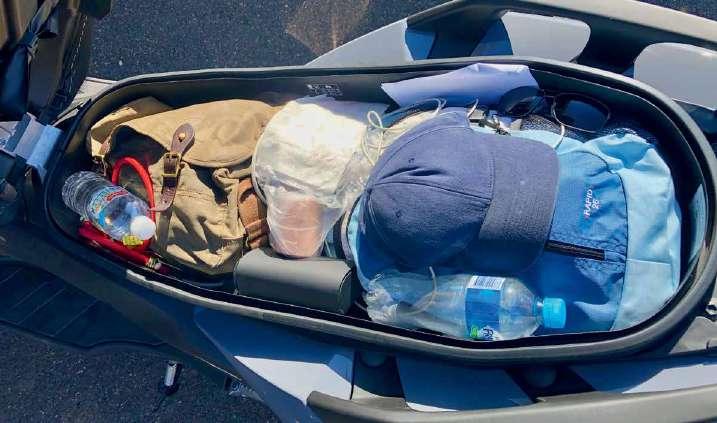
lawyer friend of mine commutes daily and has 3 suits, half a dozen shirts, shoes, etc. all in a cupboard at his
gets to work. He gets it all laundered and pressed at a dry cleaner near the laundry at home. Simple.
Need to carry some gear? Luggage options have come a long way too. There was a time when it was pretty much a rack on the back of your bike, and everything was held on with a haunted festival of occy straps waiting to release unexpectedly and either hurl your gear down the road or remove an eyeball. Not anymore. Top boxes, panniers, waterproof soft luggage, special riding back packs, and even satchels for the man bun wearers. There’s not much you can’t carry safely on a motorcycle these days, unless perhaps you’re a professional pole vaulter.
What of bikes? What’s the best bike to commute on? The short answer is the one in your garage, but if you were for commuting, where would you start? Much will depend on the types on your trip.
At the risk of losing you at this point, don’t discount scooters. Anything from Aprilia, Vespa, or the big Japanese brands will see you right. It will be well built and super cheap to run. If it’s 300cc or more it will be capable of happily sitting on 120kmh and winning
scooters also carry a massive amount of gear under their seat, so you may not even need luggage. They’re easy
or not, they’re actually great fun. Some of them anyway. I managed to smash the Yamaha Tricity 300 (yes, the



one with two front wheels) along Thunderbolts Way and The Oxley Highway in NSW with a bunch of guys on “real” bikes, and some of them couldn’t keep up in the twisty bits. Honda have some well-built scoots too, which are well worth a look. Then there’s the cheap stuff from China and elsewhere. They might save you a grand or so on the purchase price, but for my money, I’d steer clear. The build quality won’t match the Yamahas, Hondas and Piaggio group products, and they won’t stand up as well to the weather you will likely park them in. And for some real debauched scooter fun, check out Yamaha’s Tmax 560. It’s a rocket and will eat most Lams bikes.
If you’d prefer a more conventional motorcycle you might want something small to mid-sized, both
important to you depending how much
time you spend on busy roads. Plenty of commuters ride large capacity bikes because, well, why not? Small to medium sized bikes will chew tyres, chains, brakes, and sprockets more slowly than bigger bikes, so you’ll save
Left: “An Aprilia Tuono factory probably isn’t everyone’s idea of a commuter bike, but Rob loves his.”
Below: Bike parking area. Caption; “With councils providing better motorcycle parking options, riding is becoming a more and more viable option”
a little money there over time too of you choose a smaller bike. You could even look to save even more on your running costs by looking at some of the new electric bike options. The new Savic C Series is a serious Australian performance motorcycle that you can charge up from a standard power point. The belt drive will save you money on chains too. And it’s seriously cool. Add to that, it’s purchase price is staggeringly low given the level of performance it possesses. And the cost of regular servicing almost disappears with no
Trail bikes make great commuters too. They’re cheap to run, fun to ride, easy to service, and if you live in a State where footpath parking is legal, they make it easy to get up and down gutters. And wheelies on the way home always makes for fun times. If it was me looking for a bike
would I buy? I’d want something that handles the freeway well and can carry a bit of gear, as well as being cheap to run. It would need to be left out in the weather all day and withstand the elements well, so I’d want something well built. I’m 6ft and a reasonable sized human, so I’d choose something with a bit of power to lug me around. Maybe a Kawasaki Z650, or its prettier
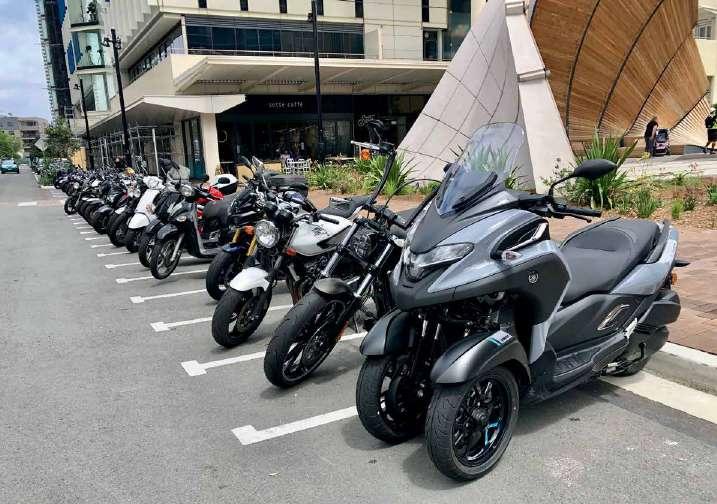
cousin, the retro styled Z650RS. Suzuki’s SV650 is perfect, and cheap, or I’d even look at the 650 V-Strom as it has the same V-twin engine but a little more comfortable. Perhaps Honda’s CB650, or the new 750 Hornet? I’d also throw in Yamaha’s MT07 and Tracer 7.
I could spend a bit more and get into Triumph Street Triple S territory, or even Ducati’s baby Monster, or a BMW F900. But servicing costs on the Beemer and Ducati would rule them out for me if I just wanted a commuter.
What would you choose? Probably something completely different to me, and that is the joy of what we do. There are so many bikes available there’s something for everyone. But why listen to me? I asked a few of my friends who commute daily why they do it, and whether they have any tips for new players.
Stephen Mason is the CEO of an educational charity, and commutes daily in Melbourne. He doesn’t own a car, just his Harley-Davidson Pan America Special. His last couple of rides were a Ducati Scrambler and a Honda Africa Twin. Steve doesn’t own a car, so the Harley is a do-everything bike.
“I’ve used trail bikes to commute since I got my licence at 16. Like me, they’re getting fatter, but I can go more places than only having a touring bike.”
I agree, it’s best Steve stays away from tourers as his love of riding dirt is incendiary. I remember him once where that bike really didn’t belong.
Steve reckons “There is no better way to get around, period. It is faster, and might be cheaper, not that I care, and it’s a small daily pleasure that brings me a bit of extra joy.”
Steve keeps a spare change of clothes at work so he never has to stress about getting wet, and as for other tips, he says, “Learn to master using your rear brake more comfortable.”
My mate Rob is a construction site manager from Cairns in Queensland and commutes roughly 60km per day on his Aprilia Tuono Factory. The Tuono is his only vehicle, and it does everything from the daily grind to trips away and weekend riding.
I asked him why he chooses to ride, and he said “I did my fair share of public transport commuting as a student, and I’d rather ride, even if it is in the humidity build-up in Darwin or a tropical downpour here in Cairns. My only question is why would you not ride a bike, unless you physically couldn’t?”
He says the worst part about riding to work is getting soaked when it rains and he’s been too lazy to put his
“Beating google maps times, lane splitting and scaring the crap out of car drivers at the lights are all fun. I also enjoy meeting and ignoring people who say they used to ride but had to sell their bike for whatever stupid reason they come up with.”
I asked him if he had any advice for readers who want to commute and his answer probably applies to all of us. “Rider training and continue to do it all through your riding life.”
I couldn’t agree more.

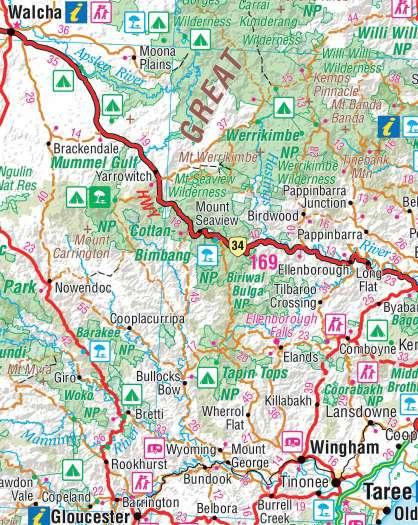

Anyway, the bulldozers came and the road surface was steadily upgraded until Thunderbolt’s Way was one of the most popular stretches of road on the east coast. Then the trucks chewed it up again, and today the road crews are back at work, getting it into order.
But so what? We have an alternative that never really gets worse, although it never gets better, either. It’s Nowendoc Road, roughly a hundred kilometres of mixed tar and gravel that

takes you from Wingham up to the eponymous little village. By the way, you may have seen recently that the shop/servo at Nowendoc was closed. I wondered if that might be permanent, given what’s happening to country stores all over the country.
When I was last there, I asked a sparky who was working on the switchbox of the store whether he was getting it ready for reopening. To my delight he said “Yep”. I asked if he knew when the opening might be, and
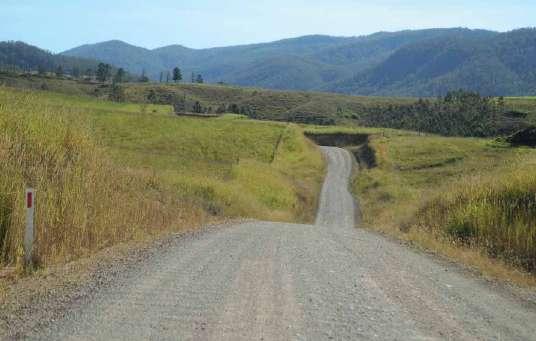

he said “Nope”. So, I wished him a happy and successful day, and he said “Thanks”. Well, three words isn’t bad when they carry so much information, right?
I only got as far as Nowendoc from Wingham on that ride because I ran out of time, but the gravel road that continues north to Brackendale through Mummel Gulf National Park and soon afterwards changes to tar all the way to Walcha was in good shape when I last saw it, a year or so before. I’d be happy to recommend its smooth gravel. Might not be so good if it’s wet, of course.
That’s one thing about Nowendoc Road. Most of the gravel stretches have that surface with small rocks imbedded in it, which means it’s passable in the wet, but it also tends to shake your bike around a bit. I didn’t lose anything off the F 750 GS, but that was probably because the Glow Worm Tunnel track had shaken a few things off it the week before and I had gone over it and tightened everything. The trouble with that surface is that you can’t smooth it out with speed, the way you can corrugations.
I guess the real attraction of this road, apart from being able to miss Thunderbolt’s Way, is that there are so many tracks off it that lead to fantastic rides. Even the fairly basic map that I’ve added to this little story shows a few and believe me there are more. My next destination up there is
past it, so it should be worth another visit. Another? Yes, I rode it many years ago with Tony Kirby of blessed memory. It was on a BMW launch, too.
Above: They’re kidding; it’s a lot more than six kilometres!
Below: Further up, you get some shade from the relatively untouched forest.
Bottom: And here is where the story ended for me. There’s more on the (back) way to Walcha.


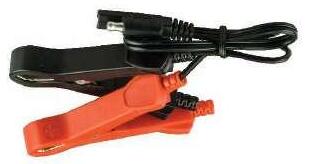















SO, YOu WANT A
In 2015 the hardware store in the main street of Sea Lake closed its doors pretty much overnight leaving a hole in this small farming town in the Mallee district of western Victoria.
John Clohesy feared this might be the town where his family had farmed since 1901 so he called a public meeting and just over a quarter of the town’s population of 600 fronted.
They decided they weren’t going to be a dwindling village of empty shop fronts and they weren’t going to be a town without a hardware store. And
sixty-eight locals had offered to stump up enough cash to stop the rot before it started.
Minimum buy-in was $500 and only a few offered this base-line investment. So, they did the legals and created a
community co-op, then approached the fellas who owned the building, worked a fair price for the freehold and bought the place. With the rest of the share monies they purchased the store’s stock and in 2016, they opened the doors for business.
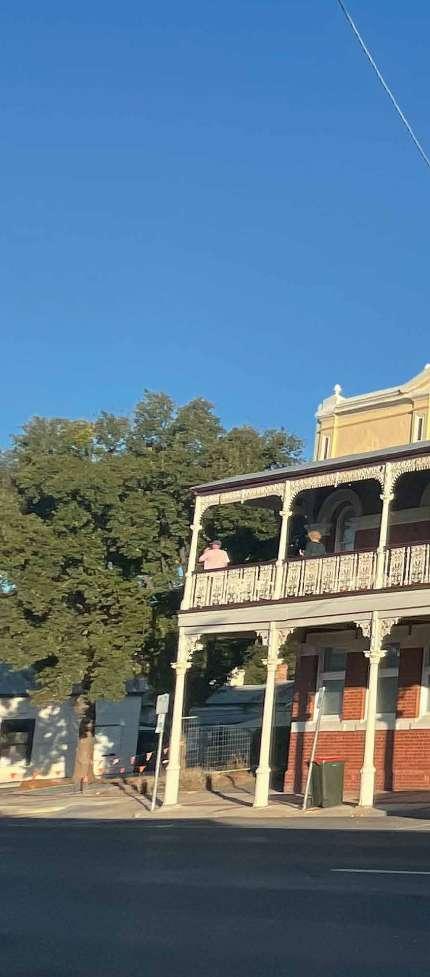
the hardware store and gets chinning and tells the staff he’s taking over the lease of the bottom pub but closing its accommodation. The pub staggers along for a bit and then one morning some 50 or so coppers descend on the town, surround the bottom pub
“ THE PUB STAGGERS ALONG FOR A BIT AND THEN ONE MORNING SOME 50 OR SO COPPERS DESCEND ON THE TOWN, SURROUND THE BOTTOM PUB AND OVER THE COURSE OF THE DAY HAUL OUT 1,500 MARIJUANA PLANTS.”
At this stage there were two pubs in Sea Lake, the bottom pub and the Royal or Top pub which was right opposite the hardware store. Then the bottom pub closed down and the owner walked away, again pretty much overnight.
Not long after, a bloke comes into
and over the course of the day haul out 1,500 marijuana plants. And closed down what was left of the bottom pub.
Which wasn’t much.
They’d punched holes in most of the walls to access the water pipes to connect to their hydroponics and

the local pigeons had mostly moved their nests inside. Pretty soon there was even less left when one of those the place and left it as it still stands –just a pile of rubble.
Then the publican walked away from the top pub. Just closed doors one night and didn’t open the next morning. Pretty soon it was surrounded by a cage to prevent pedestrians from being hit by bits falling off the crumbling façade and
then, over a year later, a big sign appeared on the wire announcing a Mortgagee Sale.
But enough of me telling this story, sitting across from me in the front bar of the Sea Lake Royal Hotel on his usual perch below a photograph of his much-missed mate Dave who was a local cop who died in a car crash, is John – the same one who organized the meeting that saved the hardware store. So let him take over.
“So, we heard this bloke in town

might be having a go at buying it and I rang him, and he said he’d lost interest a bit, but he said his brother-in-law who’s a builder was in town so the three of us went around and broke into the joint and had a look around. Climbed into the roof, broke our way into the cellar.

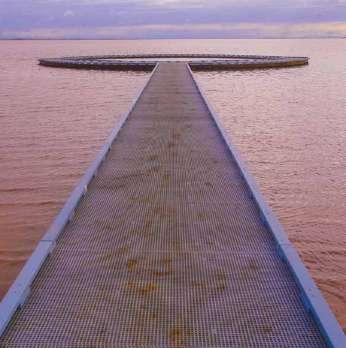
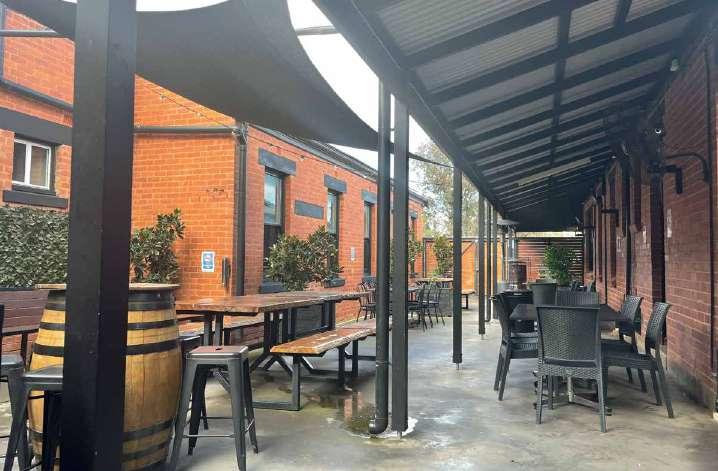
Everyone had said it was buggered but the brother in law said it was double brick and basically sound and the next day I went to the football with a mate who runs the fuel depot. We were talking about breaking into the pub and he said he’d be up for putting
some money into the place, and then a local oncologist heard about it and he said he’d put in money to help save it.”
In just days they had A handful of the freehold for $180,000.
“And once we’d bought it, our

Ten beautifully restored contemporary rooms upstairs (together with a stunning balcony) and seven rooms downstairs, but you’ll need to book. All have ceiling fans and screened windows.
The upstairs common-room is fully equipped with microwave, large fridge and freezer and all the makings for your morning brew.
There’s a large free camping for pub patrons area out the back with after-hours access to amenities. You can park your bike here, close to the buildings but there’s nowhere to lock it up.
phones all started ringing off the hook with people wanting to know our plans and was it going to be like the hardware and very soon we had 42 or so people who seriously wanted in.”
Another co-op was created, this
investors and a heap of young people, shearers and families kicked in. With a co-op, it’s irrelevant how many shares you own, you only get a single vote at meetings, but any dividends are pre-rata’ed based on the scrip you own.
So now the town owned a pub. Which was a ‘complete shambles’ of a crumbling mess with a decidedly deciduous façade.
received was one from the local Shire Council enclosing a 7-day works order on the façade which was still enclosed in safety fencing which was blocking parking along the town’s main street.
Back to John: “The Council Order meant we had to start work within

The front bar is airy and welcoming – stools at the bar is always a good sign – and the rear open area is replete with decent heating for the cooler nights.
The town’s silos have been painted by Joel Fergie whose business nom-de-plume is ‘The Zookeeper’ and they’re well worth a visit (watch out for trains) - but if you’re overnighting here, rattle your dags early in the next morning and get out to Lake Tyrrell for the sunrise. (And keep your waterproof boots on. They’ll allow you to walk into the lake and get away from
any of the 300,000 tourists who are forecast to visit in the next 12 months.)
The independently-run restaurant, ‘The Juke’, is brilliant but doesn’t do breakfasts.
Value for money is 150% Unique Character is 10/10
The only thing precluding the 5th helmet is the lack of lock-up parking so it’s rated a very solid 4.
The Royal Hotel, 74 Best St, Sea Lake, Vic. T: 03 50701050
W: royalhotelsealake.com.au


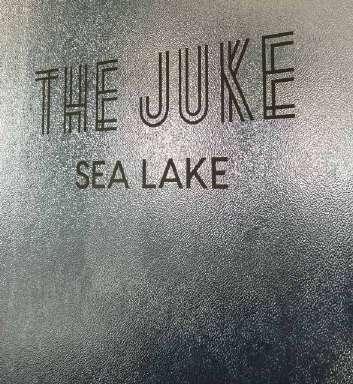

a week or we’d be up for some stiff and asked if we’d need approval for all the works we wanted to do and they said ‘yes’.
And I asked them how long an approval would take to get for this work that had to start in 7 days and they told me 12 days so I sucked in my breath and told them that I wasn’t great at maths but even I could see there was a bit of a problem.”
A problem roughly the size of 5 days.
The Council saw the problem, gave them some leeway and they got to work, using a retired concreter and a local painter to get the front looking schmick. Then it was the verandah.
They kept at it for 6 months and each Tuesday the six directors and all the co-op members plus any other interested local could attend an on-site meeting.
“Only rule was that you had to bring a carton of stubbies, or you couldn’t come in and you couldn’t take home any stuff you hadn’t drunk because that was for the workers during the week.”
One day they were working out the back of the hotel and “this bloke wanders around and asks a few questions and we ask him what he’s up to. His name’s Reece Payne and he’s just quit his job and he’s a cabinet maker and mechanic by trade so I ask him if he wants a job and what would be asking and he says 40 bucks an hour and I say, get your tools and so he built the bar. That’s Reece‘s bar.”

TOUR DATES
OCT 8 - 22, 2023
APR 13 - 27, 2024
OCT 13 - 27, 2024



After the verandah (which is a total stunner), they got on to the accommodation rooms upstairs.
John stops and calls over a smartlooking young rooster and announcing that this is ‘the local celebrity’, introduces me to Will, wide smile, clear eyes and one hundred percent bush boy.
Eighteen months ago, he was


dobbed-in by his sisters and then stitched-up by his mate Joel, and then passed the audition and ended up in episode 12 – which is apparently last year – of Farmer Wants a Wife.
Somehow Will snagged a young woman named Jess from the great riding country of Esk in Queensland and now they’re both back on his farm not far out of town.
“I honestly don’t know where the town would be without this pub, without what these fellas have done,” offers Will. “When we were at the pub and loved it, said it was one of the best pubs they’ve ever been to.” And flashes a smile of pride in his hometown.
opening on the long weekend of June 2019. It didn’t just exceed everyone’s expectations, but far-outstripped their wildest hopes.
The town had its meeting place back. With no TAB, no Keno and no pokies, the locals from town and surrounds flocked to the place.
It survived the Covid lockdowns and now a standard Saturday sees north of 150 meals served in the leased-out restaurant and occupancy rates for the gorgeous rooms upstairs run at 90% during the week and 100% on the weekends.
So far, all proceeds have been sown back into the hotel. When problems
Above: Rear parking area.

arose getting the laundry done at Bendigo, they simply allocated 45 grand to building their own at the back pub and in so doing created two more jobs for the town.
When Graincorp said they’d like to block-book the seven rooms out the back for two months during harvest, they were told, “sure, we’ll
Graincorp responded by flicking them
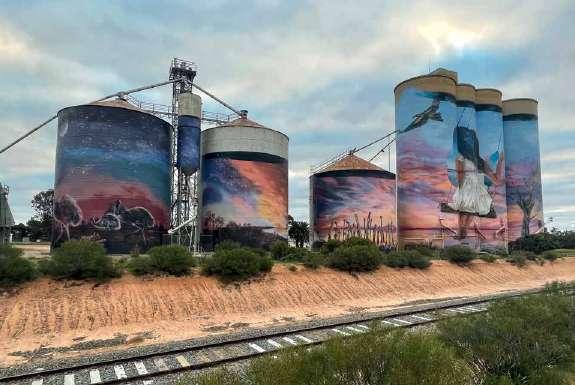
Inthe $27,000 agreed fee upfront to help with the expense.
The rewards and the dividends for John have been diverse but none better than sitting on his perch and watching as “shareholders of this place come in with friends from out of town and they show this place off to them, like it’s something they are responsible for and they are proud of it and that is a great thing
June 2019, half a dozen folks from Lockington –a couple of hours east – arranged a meeting and drove up to see John and a few other directors. The Lockington community had already bought their town’s service station and business centre but now their pub was in trouble and they were impressed by what had happened at Sea Lake.
John: “They were all bloody millionaire - one’s an ex-member of parliament and he wanted to just buy the pub and I said to him that’s the worst thing you could do, the locals will just think you’re a rich prick trying to make money out of the town.”
They were advised to spread the ownership and


for locals to share.”
And believe me, but don’t take my word for it, it all makes for one of the best restored old pubs you’ll ever savour, populated on both sides of the bar with the friendliest and most cheerful people you’ll ever encounter.
bugger me, feel-good pubs are taking it to a whole new level.
“everyone would identify with the idea, especially the little blokes who scrape together the 5 grand to help save the pub and it’ll take off.”
Along with other community-owned hotels like Grong Grong’s and Pleasant Hills, the Lockington Hotel is another success story of a community refusing to watch itself wither. It too is thriving. The rooms are stunning and the service from young proud locals is tangible but the highlight right now is the food that’s coming out of the kitchen run by Simon. Go there hungry and you won’t be disappointed.
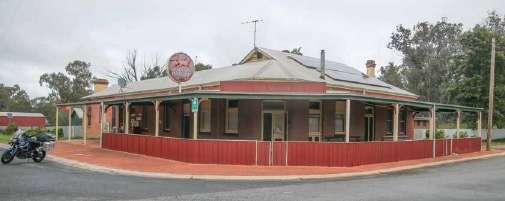
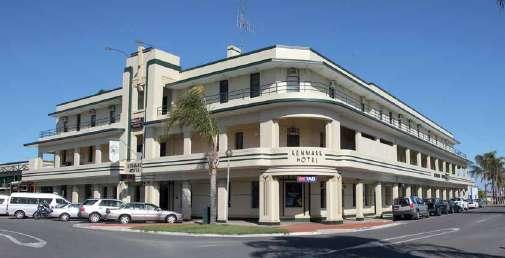

MOTORcYclE TRIbES
OccuR WHEN
Tribalism is human nature. We all do it. We all like to belong. But wild, gimlet-eyed youths like to belong more than anyone else. It’s like a genetic imperative.
I’m thinking real motorcycle
happening in the mid-50s in Australia. Up until then, Australia was far too busy pretending it was a much hotter and bigger version of England. It had no time for motorcycle tribalism. England would have disapproved.
But sport tribalism was OK. And no-one loves sport and sport tribalism more than Australia. We don’t have any kind of culture, so sport is like a default setting for our national identity.
Australia (ACCA) was formed in 1928 to represent the interests of sports-based motorcycle clubs, and would eventually become Motorcycling Australia (MA), the country’s representative body for motorcycle racing.
Organised motorcycle sport was actually established many years before that. And speedway racing was the
to be run professionally. The late Jim Hoskins brought speedway to meetings at Maitland Showground, and laying the foundation for future Australian successes at a world level. But other than these bizarre-tonormal-people sports, motorcycles were largely viewed as transport for people too poor to afford cars, and they weren’t really all that practical outside of built-up areas.
because Australia is a big place.
Riding 1950s motorcycles anywhere but in built-up areas of Australia was the act of a madman. And while we did have a few madmen ready to brave the trackless wastes on old BSAs, very few of them lived to tell their tales.
But as life got easier and Australians became more urbanised, motorcycles started to become more popular. The weather was conducive to riding (we still ride all year long), and bikes were cheap to buy and run.
motorcycle tribes if you will, really started in the late 50s and early 60s. And it’s just not possible to discuss motorcycle tribes in Australia without dealing with this apex predator, the outlaw motorcycle club.
Australia’s oldest outlaw motorcycle club, the Gladiators MC began in Maitland (the home of speedway) in 1960, and exists to this day.
Also, until recently, outlaw motorcycle clubs were unique to First World English-speaking societies. They originated in the USA in the late 40s, with oddly different, but A N ENTI r E ly B r IE f AN d INCONCISE h ISTO ry
The Auto Cycle Union of
Everywhere is far away in Australia
Motorcycle sport and outlaw motorcycle clubs have always been inextricably linked in Australia, as well as in England and the USA. Probably because until very recently, outlaw motorcyclists were very hardcore motorcyclists at heart. They literally lived and breathed motorcycling. It was not a hobby. It was a lifestyle. Dragracing, road-racing, enduro, motocross – if it had two wheels and handlebars, outlaws were interested in it.
rather parallel, outlaw clubs forming in England, New Zealand, Australia and Canada.
As the 60s became the 70s, and motorcycling became less acceptable to normal society (riders were regularly called “Temporary Australians”, “organ donors” and “hood ornaments”), motorcyclists began to take a perverse pride in their “otherness”.
And “otherness” is the prime motivator for tribalism.
Sure, not everyone was prepared to (or even could) become a one percenter, but they could certainly form social clubs.
And so, they did. These bloomed in every major city and in many of the large country towns.
As bikes became more reliable, these social clubs began to diversify and became touring clubs. Motorcyclists stopped dying in the Australian outback and started riding through it.
As the 70s turned into the 80s, the Australian motorcycle rally scene entered its golden age.
A motorcycle rally was really nothing more than a bunch of motorcyclists going to a chunk of land (preferably somewhere scenic and maybe even a little hard to get to), getting drunk, and doing crazy stuff on high-powered Japanese motorcycles. Then we’d ride home on Sunday and go to work on Monday. Sometimes outlaw clubs came to the rallies, and that made everything even more exciting.

In the 80s, motorcycling was still not really socially acceptable, but this didn’t stop a huge wave of ersatz pretenders to the outlaw throne from appearing on the scene. The Harley Owners Group (HOG) appeared just as Harley-Davidson introduced its new Evolution motor. Suddenly, you
your Shovelhead Harley. You could just put petrol in your Evolution Harley and ride it. And you could also join HOG and festoon your leather vest with all sorts of cloth patches so that to the general public you looked a lot like a terrifying Hells Angel.
Happily, only a few HOG members were silly enough to sew patches to the backs of their vests, thereby aping outlaw regalia even more, and were soon persuaded this was a bad idea by
several one percent clubs.
Alongside HOG, another national club appeared. It was called Ulysses and had the motto: “Grow Old Disgracefully”. You had to be over 40 to join and remained a junior member until the age of 55. In the ensuing decade, the Ulysses club became the largest social motorcycle club in Australia with 1000s of members, with HOG a very close second. But HOG and managed by Harley-Davidson’s marketing division, so it was (and remains) really far more of a marketing exercise than a club created and driven by members. Ulysses now has 138 chapters in Australia and dozens more chapters all over the world, with a membership in excess of 23,000. Things started to change in the

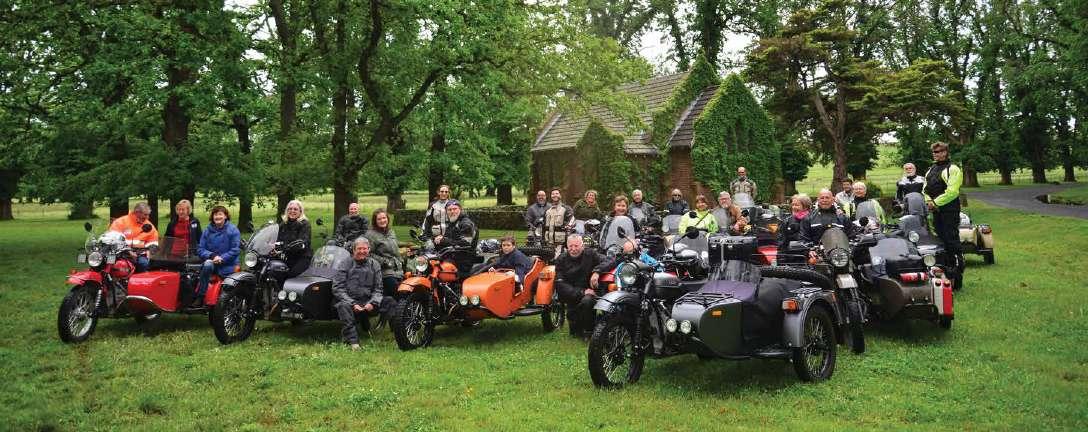
90s, and we can certainly blame the Internet and social media. The largest rider demographic was now approaching 40. Younger riders were being constrained by the law to buy smaller capacity motorcycles, and while many still signed up, many more had no interest in riding a 250cc bike for two years. Riders my age (I’m 62) learned to ride on big bikes. I made my bones on a GSX1100EX, the perfect bike for a teenager.
Still, the 90s and the early 2000s were boom years for Australian motorcycling. Social clubs blossomed, outlaw clubs grew exponentially with the Rebels MC now the largest of its kind in Australia with well over 1000 members, and HOG and Ulysses were at their peak.
Interestingly, motorcycle sport was in the doldrums. Competing series and strict drink-driving laws saw attendance plummet.
But people still rode bikes, and were tribalising even more. As social media grew, so the tribalisation of Australian
There are currently more than 70 organised and registered motorcycle clubs in Australia. There are maybe a dozen or so outlaw motorcycle clubs remaining, and there are any number of social-mediabased motorcycle organisations and ride groups. These are not clubs in the strict sense of
no membership fees are paid. But they are, for good or ill, all motorcycle tribes.

motorcycling grew.
There were now tribes of track-day freaks, adventure-riding chieftains, nasty outlaws, wannabe outlaws, Facebook crews with catchy names
Riders, Melbourne Riders), dreadful hipsters, wondrous gaggles of girls, café racers, scooteristas, brand
lovers, Victory Owners), stunters, beginners, mentor groups, suicide support riders, bikers against child
abuse, bikers who like dogs, bikers who hate cats, bikers who ride only to eat pizza…in short, if you have a bike and access to Facebook, you can start a tribe.
How many of these tribes have any kind of future remains to be seen. HOG is slowly losing members and not replacing them, Ulysses now allows motorhomes to its events, and the government has just about crushed the outlaw clubs into invisibility. Social media groups continue to appear, but they lack any real cohesion or esprit de corps, probably because on-line personas don’t always manifest well in real life.
Maybe motorcycling in Australia has passed its golden age.
And maybe it’s just entering a period of chaos prior to some wondrous rebirth.
It’s hard to say, but it will be great to see from behind my handlebars. AMM
By “OuTlAw”?
You’ve all heard of Hells Angels. They are the archetypal outlaw motorcycle club. All the others are almost identical variations on this theme, even
they predate the Angels by a decade or more. They are also known as One Percenters – a name they adopted in 1947 following on from a small riot in Hollister, California. It wasn’t much of a riot, really. A small bunch of motorcyclists who were in town for the local motorcycle races got very drunk and raced up and down the main street, broke some bottles and raised some hell. The American Motorcycle Association deplored the actions of these few rabble-rousers and said that “99 per cent of motorcyclists were decent, law-abiding citizens… ” And so, the one percenter was born.
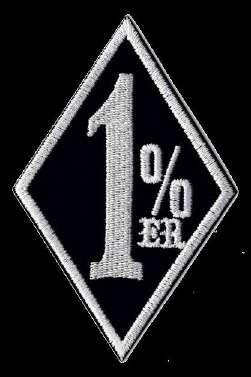

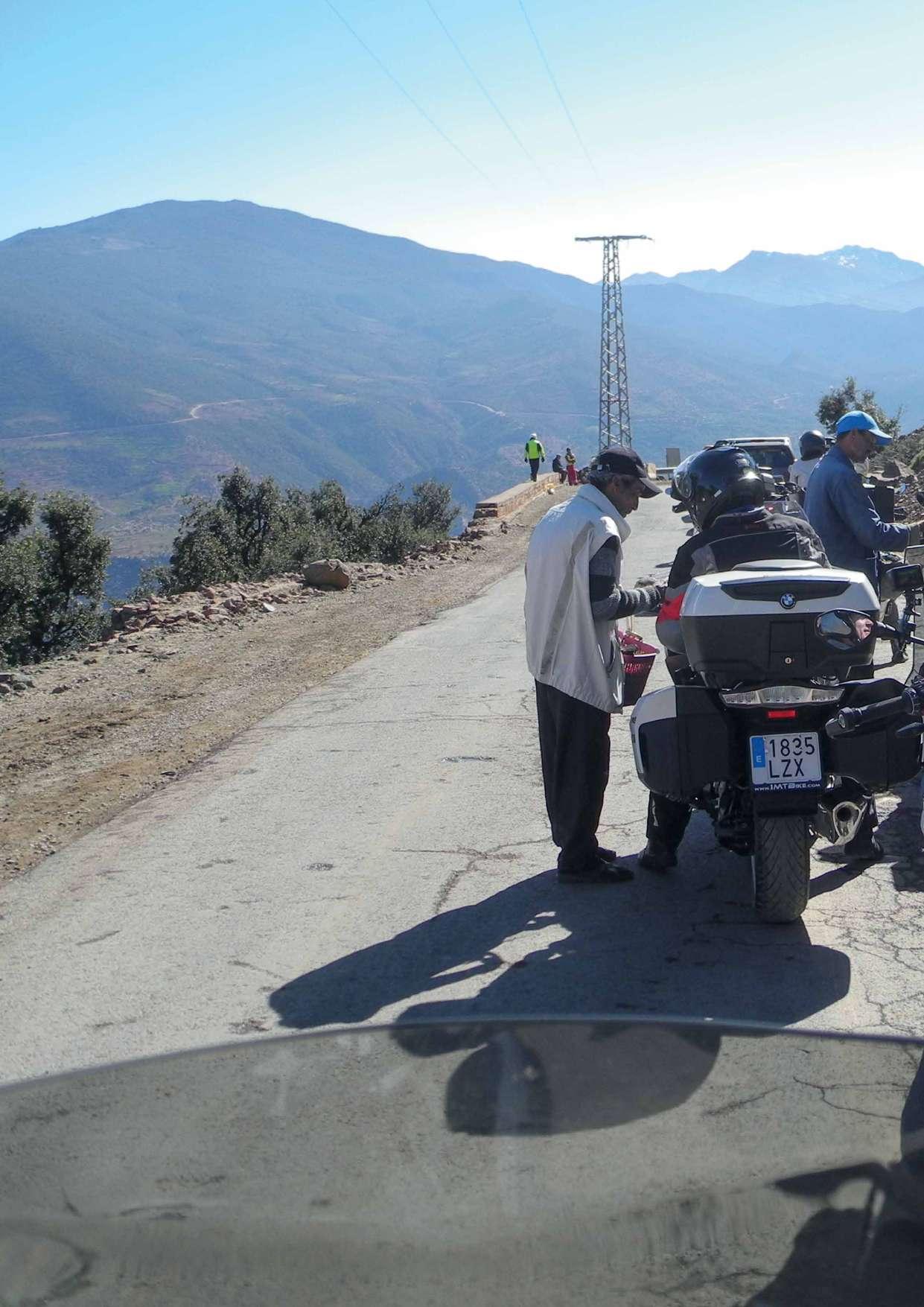
Th E B EA r, ON IMTBI k E. COM ’ S
M O r OCCAN Ad VENT ur E T O ur
IN M A r C h O f T h IS y EA r, SEEMS
TO h AVE l OST h IS BA g AN d
w IT h IT MOST O f h IS NOT
INCONSI d E r AB l E ME d ICA l
E qu I p MENT. wI ll h E f IN d
IT, O r w I ll T h E y S h I p h IM h OME IN A BO x? rEA d ON !
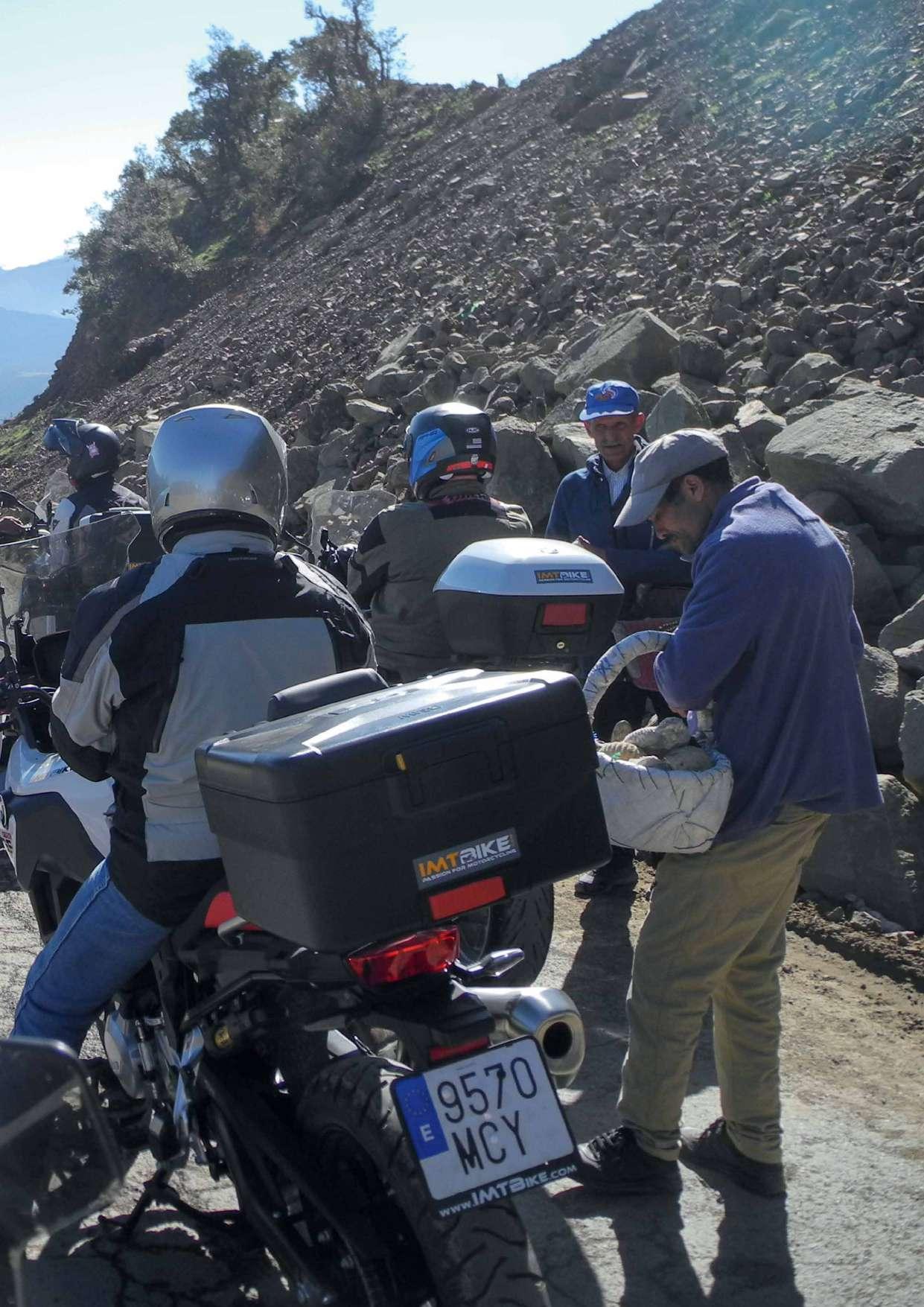

OAs I suggested in the previous story, the Djemaa el-Fna turned out to be quite an experience. Wonderful photo opportunities, too. And all because the place meets the basic requirement for a great tourist experience: it caters to the locals as well as the visitors. Any attractions or even entire cities which do that are always worth a visit; my examples have always been Barcelona and New Orleans, but there are many
others – including Marrakesh with this main square.
I’m not fussed about the distinction between tourists and travelers or whatever you want to call those people who travel but aren’t tourists. Who cares. What you get out of a place depends on how you approach it, and we all have the opportunity to make the most of that. Mind you, I do feel sorry for the people who
conditioned) we would, I think, all have given the Djemaa el-Fna top marks. I had emergency supplies of my drugs and slept even without my CPAP machine, although a couple of glasses of local red wine with dinner might have had something to do with that. One advantage of staying in a
other guests are mostly tired from a day out on the course and don’t do
“ I DO FEEL SORRY FOR THE PEOPLE WHO ARE SHEPHERDED IN AND OUT OF AIR-CONDITIONED BUSES. BUT WAIT… AIR CONDITIONED? HMM… ”
are shepherded in and out of airconditioned buses. But wait air conditioned? Hmm
The evening meal on the terrace overlooking the action in the square was quite wonderful, and as we stumbled back to our bus (yes, air
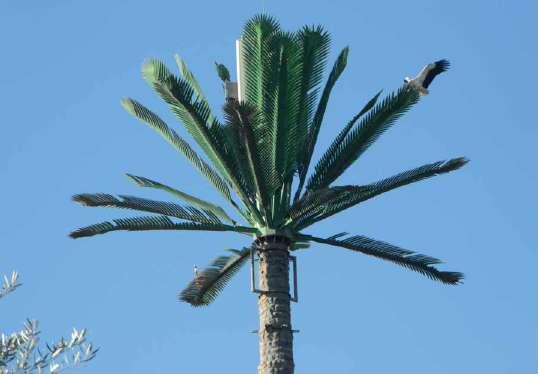
much late celebrating, and secondly are keen to get out onto the course in the morning and don’t hang about at breakfast.
So after a relaxed breakfast – ah, I think I need to explain something here. Most hotels of at least reasonable

Left: Smooth and tempting: the road over the High Atlas is a motorcycling gem.
Bottom far left: Communications towers in Morocco are (poorly) disguised as giant palms.
Bottom left: My little balcony at our Ourzazate hotel was perfect for catching up with notes.
Right: The 200m high walls of the Todra Gorge are di cult to photograph, amazing to see.
Bottom right: Tajine cooking is not only delicious but also quite varied.
quality – and the Rotana Palmerai is of pretty high quality – have coffee machines. Usually there are at least two, more often four. While none of them make good coffee, they all make acceptable brews – but only when they’re working. And sadly
to mysterious failure. As a result, the machines that are working are working pretty hard, and you get queues. When other guests don’t hang about, as in this case, it is a lot easier to get your coffee. Might sound basic, but trust me, it matters.
Once we got away, saturated with coffee, it became clear that we were not far from the real riding, the road up to the Tizi-n-Tichka Pass. While it isn’t
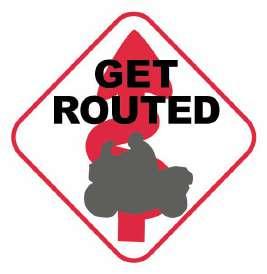
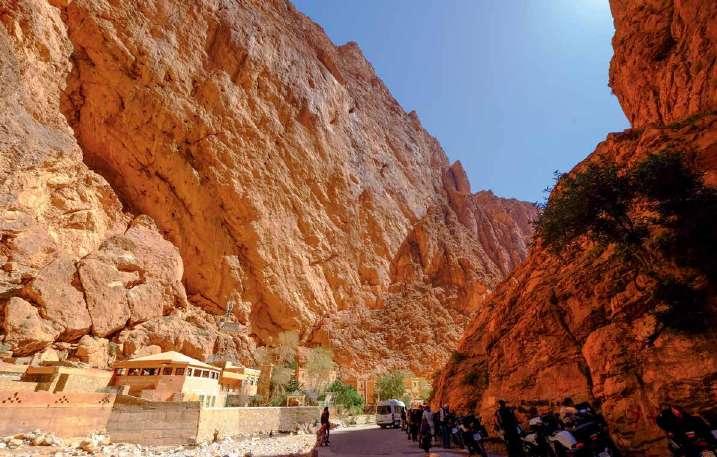
great motorcycle roads of the world. Endless sweepers, wonderful views of spectacular mountain landscapes, and frequent opportunities to buy geodes. Geodes? These are geological secondary formations within sedimentary and volcanic rocks. They are hollow, vaguely spherical rocks, in which masses of mineral matter have been deposited. The ones for sale along this road contain crystals and can be quite intriguing and pretty.




Sadly, I suspect the sellers have not been happy with the genuine article and have started dyeing the crystals with fluorescent colours. So, a distinct ‘no’ to the geodes.
Another distinct ‘no’ to the bloke who wanted to sell me some stickers at the top of the 2260m pass. The fell off the bike laughing.
The shopping was better at Ait-BenHadddou Kasbah. This was a stop road we took down from the pass to clinging to clifftops and sliding through seemingly impossible slots in the many small villages we passed. You have probably seen the Kasbah in one Hollywood extravaganza or another, but it’s still just a small place by a salty river with, admittedly, lots of souvenir shops. I bought two genuine antique daggers (not that kind of genuine, or antique) at reasonable prices after cursory haggling, and discovered how effective the Kasbah architecture is at keeping the interior cool.
Good stop, and a good lunch in a remarkably genuine-looking little restaurant. Roger and David obviously
places for us, away from the tourist of a successful bike tour in a place that’s so popular with tourists; you of authenticity and that enjoy offering their won culture, not just Coca Cola.
“ IT WASN’T LONG BEFORE I REALISED THAT I WAS NOT UP TO MAKING DECISIONS SUCH AS WHICH WAY TO TURN.”
Our hotel in Ourzazate was a perfect example. We covered what seemed like a couple of dusty kilometres through back streets before slotting our bikes into the enclosed secure shed at the back of the Riad Dar Daif. A typical example of the way architecture turns inward in places like Morocco, the Riad is arranged around a cool, moist, plant-lined

courtyard. Its rooms, or rather suites,
four-story building with all mod cons including air conditioning, without spoiling the atmosphere.
Sitting on my own little balcony in the shade with the views out to the Atlas, I thought I would gladly live in a building like this.
Out on the Route of the Kasbahs the next day – really just a rather good, sealed road past a lot of desert-brown small villages – we took a turn to the west to Todra Gorge. This is a flatbottomed (and now sealed) canyon with 500-foot overhanging walls. Wonderful to visit, seriously, but you would not want to be here when one of those overhangs lets go. I tried to do it justice with my 10mm, non-
not even get close to the power of those red rock walls.
Lunch at a small Berber restaurant on the way back to the main road was a hoot. It looked like something out of one of the better Star Wars movies –you know, Luke And The Droids Stop For Lunch On Tattooine – and while the food was pretty much the standard tajine and salad, the entertainment
concert provided initially by the staff, with us gradually being drawn into the performance. Our hosts had a number of hide-covered drums as well as a wheel hub off a Citroen –played with spoons – and Yasmin, the boss of the kitchen, even played a pair of tea glasses. All this was photographed by the rest of the kitchen staff with iPhones.
Another stop was to look at the khetteras, the underground water supply channels that take the place of the better-known qanats of Afghanistan. Sadly, there was a drought at the time and very little water was to be seen. There was, however, a cute young camel to photograph.
Erfoud, our stop that night, is the

Bottom far left: Straw is light, so trucks get loaded up as far as possible.
Bottom left: It may be hard to believe, but occasionally that dry watercourse turns into a raging torrent.
Right: Basic engineering above one of the Khettera water canals.
Right middle: Well, hi there! Camels look a lot more sociable before they grow to their full height.
Right bottom: Wash day chez Bear at the Erfoud hotel.
access point for Erg Chebbi, Morocco’s best-known sand dunes. Used for everything from Hollywood movie locations to practice venues for Dakar teams, Erg Chebbi also offers extensive tourist activities including the inevitable camel rides and romps in the dunes on four-wheeler ATVs. IT’s all a lot of fun, and the best way to end a visit is by photographing the sunset over the sand. That evening, 250 Frenchwomen who had just completed a 100km walk in the Atlas checked in, donned else for their celebratory dinner. Outside, rows of Yamahas and later KTMs queued, waiting for their riders to tackle Erg Chebbi.
In town, meanwhile, on a little photographic expedition, a certain Bear stopped for a coffee with milk at a ramshackle but friendly roadside café
I was to regret that coffee, or more likely the milk. I once read a report from a British bike journalist who was covering a Baja race, and who had contracted Montezuma’s Revenge. He wrote that it was as if “the whole world fell out of my bottom”. That was my night. I shall draw a considerate curtain over the rest of this experience. Roger looked at me in the morning and offered a ride in the van rather than on the bike. I refused of course, being the case-hardened Aussie I am but it wasn’t long before I realised that I was not up to making decisions such as which way to turn.
The bike went into the van, and I took my seat next to David, who supplied me with water and stopped when I needed him to, but otherwise left me to my internally disturbed state. I guess it was not too bad; I got to see most of the scenery without having to stay entirely conscious.
By the time our free day in Fez came around, I was a bit better and managed to take in both the wonderful, crowded lanes of the medina and our obligatory visit to a tile factory. Contrary to my expectations, this turned out to be really interesting, and I am still in awe of the skills of the blokes who chip out elaborate shapes for mosaics.
I don’t think I got as much as I might have out of the next day’s travel because I now had stomach cramps, which possibly also spoiled by the stop in Chefchaouen, the




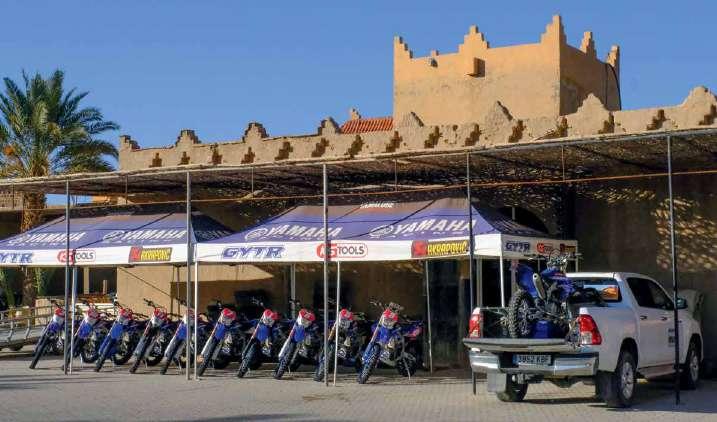

“famous” blue village. It’s a tourist trap, and while it was all quite jovial – and while they have taken the trouble to make the craftspeople’s work rooms accessible – I sat in the shade and drank bottled water. My loss, probably. The border crossing into the Spanish enclave of Ceuta was slow but not unpleasant, and we stayed the night in a Parador, one of Spain’s wonderful government-owned historic hotels. I met an old friend in the Parador’s
reception. Back in 1979 when I had last been in Ceuta, I had had a bronze lion’s head pointed out to me
an open mouth, and the story went that if you told a lie while putting your hand into the mouth, it would close and crush your hand. Not true, by the way. But here on the wall of the Parador’s reception was the head! It had obviously been salvaged when the

Left: Yamahas all lined up outside our hotel, ready for Erg Chebbi.
Above: Just a look at the kind of mosaic made in Fez, from hand-cut pieces.
Left left: Out on the open road – the edge of the Sahara can be a bit at.
Below: Our IMTBIKE.com motorcycle eet was mostly BMW GSs. I was on a 750.
old times to me, and I was tempted to have a beer with it.
Oh, important point here: the Moroccans, like Australians, understand the phrase “ice cold beer”. You may obtain this immortal libation not quite everywhere but in many places in Morocco.
I was much better for our ferry ride the next day, although I stuck to soft drinks on the short ride across the Strait of Gibraltar or Estrecho de Gibraltar (got to be fair). The run back to Malaga and the IMTBIKE.com base gave me time to think that apart from avoiding roadside milk coffee, I really should have done the company’s longer Morocco tour. There’s a lot more to discover there.


ALike the start of any ride with
were, swapping stories (with only mild embellishments) and sharing our love of the open road. Finally, fully caffeinated, we were ready to get going. “So which way are we going” one of my mates inquired. Silence, all round.
“Rossco, you’ve got one of those navigator things, punch in the destination so we can get moving”.
Let me tell you about a game-changer that has transformed my motorcycling adventures.
It’s called Beeline Moto.
Picture this: you’re cruising down a country road, surrounded by breathtaking landscapes, not a care in the world. The wind is in your face, and the freedom of the
open road is exhilarating. But, as we all know, navigation can sometimes be a challenge, especially when you’re exploring unfamiliar places.
That’s where Beeline Moto comes in. It’s a sleek, compact, and purposebuilt motorcycle navigation device designed to keep you on track without distractions.
It’s incredibly versatile. It doesn’t limit you to pre-programmed routes or restrict your sense of adventure. Instead, it allows you to choose your own path, to avoid highways and tolls if you wish, while embracing the thrill of exploration.
With Beeline Moto, you can create custom routes on your smartphone using the intuitive app by setting waypoints. Once you’ve planned
your adventure, the device displays a clear arrow pointing towards your destination, providing real-time directions without overwhelming you with unnecessary information.
It’s easy to use, is easy to readeven in direct sunlight - ensuring you’ll never miss a turn. The durable construction handles all kinds of weather conditions and terrain. It has a simple and secure twist-lock mount that allows you to easily attach and remove the device from
Beeline Moto onto almost any motorcycle. The best part, Beeline Moto’s battery lasts up to 30 hours on a single charge, meaning it will keep up with even the most adventurous riders.
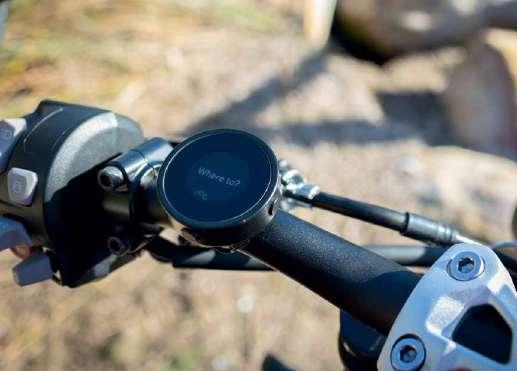
So, if you’re looking to enhance your motorcycle journeys and embrace the true spirit of exploration, check out Beeline Moto. It keeps you focused on the ride while guiding you towards your next destination.
Beeline Moto is now available in Australia at Biker Torque. Order yours today at www.bikertorque.com.au and get ready for your next adventure.

rOSS fr OM B I k E r T O rqu E
E xp E r IENCES AN 80’ S C l ASSIC

Innovative engineering, cutting-edge design and unrivalled performance converged to create a wave of iconic two-wheeled machines. From the Suzuki Katana, the Yamaha V-Max and the Honda RC30, Japanese manufacturers left a lasting mark on the motorcycle industry during the decade, and, in my opinion, no bike left a bigger mark than the legendary Kawasaki GPZ900R.
So, grab your aviators, while we take a look at this awesome bike from the decade that also gave us acid wash jeans, men’s pastel suits and the original mullet.
Back in its day the Kawasaki GPZ900R was a real statement in engineering. With its sleek, aerodynamic lines, it looked like no other bike on the road at the time.

at Kawasaki desperately wanted to produce a sub 1000cc bike to replace the legendary Z1. Not wanting to get pipped at the post again by a rival, Kawasaki developed the GPZ900R in secret over 6 long years. The prototype that was developed was actually a very smooth 6-cylinder DOHC air cooled bike that produced
“ A CLAIMED TOP SPEED OF 151MPH WAS A MAJOR SELLING POINT.”
over 100 BHP but, by all reports, was good but not great. Realising this recognition, it was back to the drawing board and using the lessons learned from the original Z1 development, eventually, they came up with a bike that truly shook up the market.
Finally in 1984, the GPZ900R was released, and it continued to be
produced in some countries until
opinion, best bike in the Kawasaki line up to be given the Ninja name. It apparently was very well received by the press back in 1984 and sold in good numbers with reviewers and owners alike loving the performance, the handling and the modern design. A claimed top speed of 151mph was a major selling point and one of the reasons that three versions of the bike were entered in the Isle of Man Production TT with Yorkshireman,
But the GPZ900R is probably most famously known as the bike that Pete “Maverick” Mitchell rode in
it’s such an iconic bike for Gen X’ers like myself.
The GPZ900R was a revolutionary bike when it was released. It had a 908cc, 16 valve inline 4-cylinder engine with a double overhead camshaft. It was also liquid cooled and produced 115 bhp @ 9500 rpm.

Peak torque of 85nm was achieved at 8500 rpm. These are still pretty good number by today’s standards, not quite up there with some of the super sports racing in the TT in 2023 but still enough to make it scream along.
It was quite a groundbreaking motorcycle when it was released
motorcycle to feature a 16-valve liquid cooled engine.
The engine was feed by four Keihin CVK34 carburettors and the exhaust was taken care of by 4-2 headers with a muffler on each side.
An interesting, but not uncommon design feature about the GPZ900R is that the engine in not mounted in
a cradle styled frame. The engine was used as a stressed member in a three-part frame that had a steel tube main frame with an aluminium rear subframe. This means that the engine is a structural element of the bike’s chassis and not just a component mounted onto the frame. This is a major factor that helps the bike’s overall rigidity with the result being good handling whilst also substantially reducing weight.
It had 38mm telescopic forks that are oil and air damped. They were adjustable and feature Kawasaki’s anti-dive technology. The Front Brakes feature a twin


disc with Tokico floating calipers. It had a dual sided swing arm and an adjustable air/oil shock absorber and a single piston on the disc on the rear. One thing that I found really interesting, but was apparently pretty standard at the time, is that the front wheel is smaller than the rear. It has a 16” rim on the front and an 18” rear. I have read that a very standard upgrade was to swap out the front 16” rim for a 17” rim, which would make tyre selection easier as I imagine there are many more options for 17” front tyres.
It has a 22 litre fuel tank with a 4 litre reserve, is 228kgs dry and has a low seat height of 780mm.



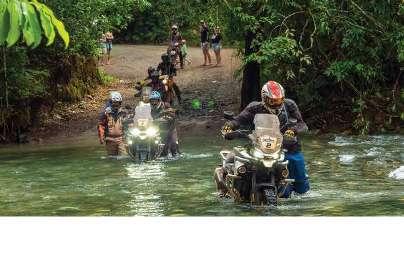









The bike I had for review was a thirsty beast. I also noticed that it was very fussy about which fuel was used. Sometimes it would feel it was getting a little bogged. When I did a bit of research, I found that this was a pretty common issue that was more likely due to the carburettors getting clogged or dirty which would lead to poor performance, which is understandable in a bike that’s nearly 40 years old. But give it a chance to clear its throat, and the GPZ900R would roar along at a very brisk pace.
One the plus side, I found that the handling on the GPZ900 is excellent. That smaller 16” front wheel does make a massive a difference. Just point the bike where you want to go and it’s away. It’s not going to match the top spec’d, electronically adjustable and controlled modern machines, but the handling for a 40-year-old bike is actually very good.
It’s got a sporty chassis design and is responsive to rider input. All up it’s inspiring bike to ride.
Even though it weighs nearly 230 kgs, it feels like it has a pretty low centre of gravity, so it actually doesn’t feel as heavy as it is and once you are rolling, it really is quite manageable and the inline 4-cylinder engine is relatively smooth, but probably not by modern standards.
The GPZ900R has a sleek and aggressive design that in my opinion still looks great today, although maybe that’s just me being nostalgic. Its aerodynamic fairing, single headlight, and sporty styling, make it a really distinctive bike.
Parts seemed readily available and as far as classic bikes go, the GPZ900R is a reliable machine that should hold its value. I’d imagine
the
will continue to be a desirable machine amongst enthusiasts.
GPZ900 one thing I did notice was that it seemed like quite a reach to “I’m too old for this shit”. But after riding it for 10 minutes or so I found the comfort level was actually pretty good and somehow the reach to the handlebars seemed quite natural and certainly not uncomfortable. Well at least not as uncomfortable as the BMW S1000RR that I have been cruising around on for the last few days for a review. In fact, the GPZ900R is a bike you could do some very big kms on.
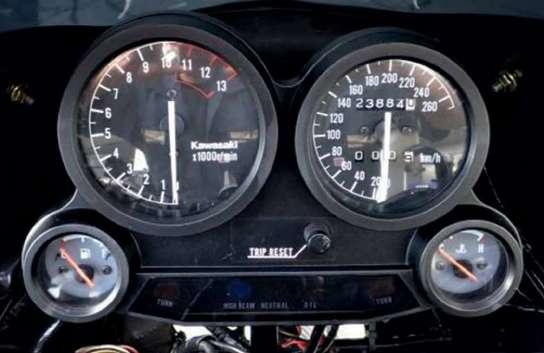
In the late 90s I relocated from Sydney to the Gold Coast for work for about 12 months. With no car, my only transport was my trusty GPX600R, so it was pack up some of the essentials, my toothbrush, my discman, and a copy of the latest Blink 182 CD - if you are my age,

I’m sure you remember the album cover. I did that trip up and back at least three times, twice covering the near 1000 kms in a day. It was a bike that was a reasonable sport tourer, but I now know that GPZ900R would have simply swallowed up those kms. Riding the Kawasaki GPZ900R is quite an experience but it’s not just
raw power that makes it so special. For its time, the bike was a masterpiece of engineering, with advanced suspension, brakes, and handling that provided a level of control and precision that was unparalleled. Every twist of the throttle, every lean into a curve, is a symphony of grace and control. This is another classic that I would
simply love to have in the garage. It’s got a cool factor and for many riders like me, it represents a golden era of sports tourers.
Ross Stanford can be regularly spotted out for a ride on one of his bikes in search of a pie shop. He’s also one of the producers of Biker Torque on YouTube. AMM


II can and do make any style of motorcycle. My goal is to ensure the customer leaves my workshop with the motorcycle they dreamed of.
To bring a motorcycle back to life.
To demonstrate that this motorcycle, normally shunned by a lot of bikers, can be a great base to do some very
cool things; that single shock absorber and the centrepiece V-twin-engine are a very good and inexpensive starting point for creating a nice café racer.
To have several bikes that showcase my workshop available for shows and events. This one certainly attracts people thanks to the pipes.
You’ll be disappointed to know the turbo is just dummied-up for the moment, because the interior turbine is removed. But everything else is working
I initially wanted a normallyaspirated bike with its stock reliability, but when I got tired of seeing it in that trim, I put the turbocharger on it and
will try to initially tune it with low boost pressure…and praying for the best.
big (apart from the turbo), and the idea was to demonstrate how you can add some real style to a bike by only modifying a few parts.
Everything apart from the leatherwork on the seat has been done in my workshop, so I achieved the machining, welding and powder-coating.
The sub-frame has been custom-made.
The seat has been recovered in new leather and a multifunctional LED band has been integrated into the back.

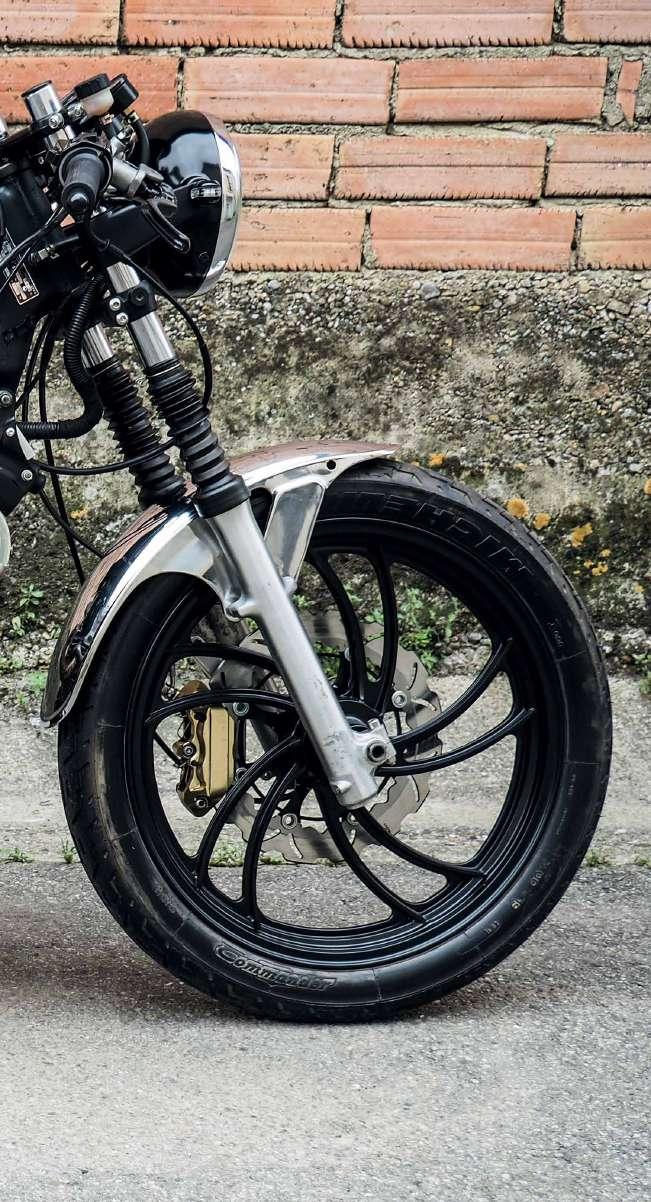




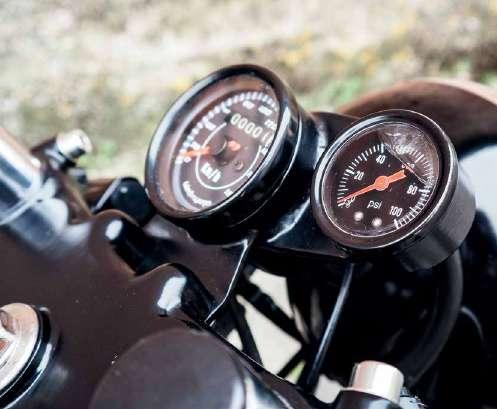

The new raised tank versus the original one.
New floating disc with a fourspot Brembo Gold P4/34 caliper from a Ducati 999, surely the most prestigious part of the bike.
Radial Brembo front master-cylinder provides consistency with the frontbrake set-up.
It had to have clip-on because it’s a café racer.
A restored GS500 Suzuki headlight.
The footpegs, brake lever, and gearshifter were turned into rear-sets.
A new smaller speedometer with a custom cover was coupled with a turbo pressure gauge.
The paint-job pays homage to the vintage F1 Lotus.
The engine was completely painted.
High-quality A2 stainless-steel screws were used throughout.
grain black powder-coat, as were rims, but they were done in matte black.
The guard has been rotated onehundred-and-eighty degrees.
The exhaust system in custom-bent and welded stainless steel.
An additional oil pump and radiator were integrated into the bike, and
supplied with gravity-fed oil rather than pressure-fed oil, and the supply it without cannibalising engine’s oil pressure.
The bike’s air-box is the original, which is why the air-pressure tube
The turbo does not exceed the end of the coupling in width, and does not interfere with the rider’s leg.
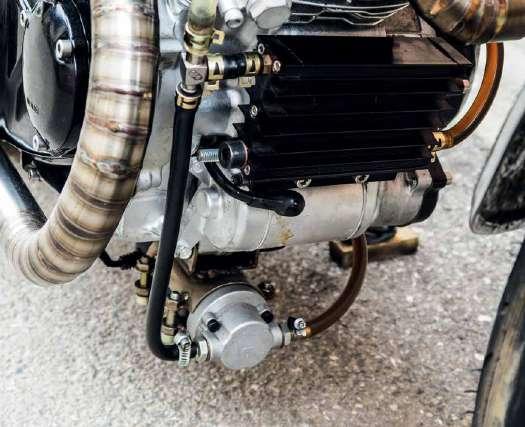

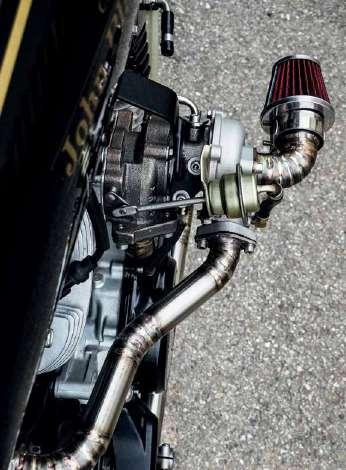
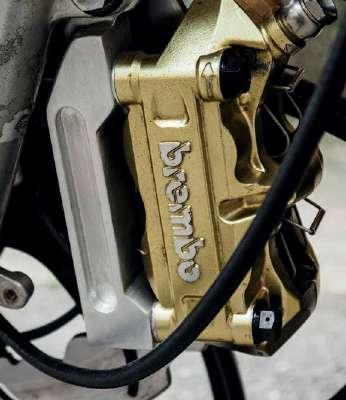
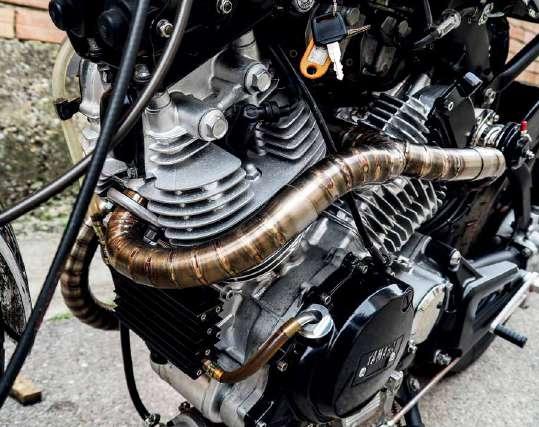
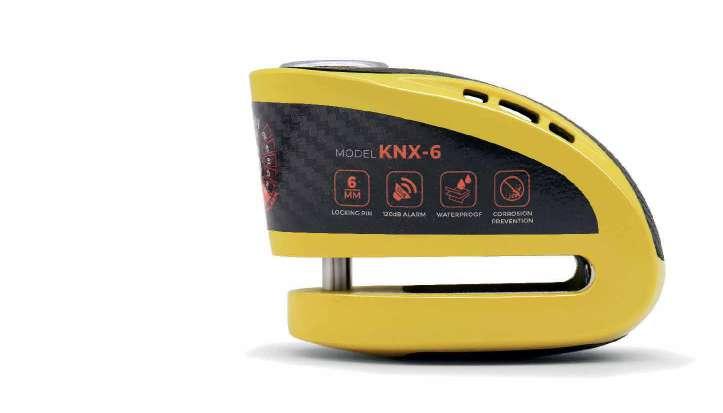


Portable, Security & Stylish:
Portable device with high grade alloy construction and piercing alarm make KNX-6 a markedly effective way to protect your bike. Simple pushdown locking system comes in five stylish finishes.
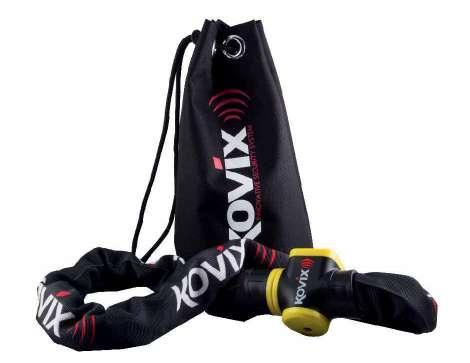
ALARMED CHAIN


10mm hexagon hardened steel chain with protectice sleeve.150cm in length. Suitable for the Kovix Ground Anchor.


ALARMED BRADED CABLE
Kovix Alarmed Braded Steel Cable 110cm. 24mm strong thick plastic coated steel cable.

Brake lever lock with Zinc alloy protected alarm module (with alarm light).


You’ll note the word “test” has largely disappeared from the headings. “Review” has replaced it. Understandably so. It’s almost impossible to “test” new bikes by pushing them to their limits on a public road. In the modern age, these limits are so far outside the skill-set of most reviewers (me included), the only thing being tested is the rider’s skill-set, not the bike.
The late Ken Wootton once told me the last bike he was kinda able to “test” on a public road was the Yamaha Thunderace back in 1996. “You gotta go to a racetrack to see what’s what on these things,” he said, then went back to running what was once a great bike mag.
Ken was right. Ever more onerous policing competed with ever faster and more powerful bikes, and it would be a brave bike reviewer who took the latest Fireblade out
on the public highways to see what it could really do.
We review them. We don’t test them. Letting racers review bikes is also a weird thing. These are people possessed of skills so far removed from the rest of us, they will see and note things that simply don’t apply to normal riders. “Yeah, it tends to push the front coming out of Turn 12 in
sometimes lived on in red-eyed glory. Never wonder why Harley-Davidson is the largest-selling road bike in Australia. You can’t ride them fast. Not proper fast. Not Panigale fast. Not foaming at the mouth, pants full of shit, cops are gonna kill me fast. They’re called “cruisers” for a reason, right? Why do you think the upright
“ IT WOULD BE A BRAVE BIKE REVIEWER WHO TOOK THE LATEST FIREBLADE OUT ON THE PUBLIC HIGHWAYS TO SEE WHAT IT COULD REALLY DO.”
third…” The fuck you say? That didn’t happen to me. And is that a flaw? I don’t think so. Not in the real world.
Then there are the “punters”, as the

the new black? What was once the cardigan donk of the motorcycle world has re-emerged as the coolest thing ever, primarily because it offers such an unintimidating power output to a market no longer pissing its pants to see what glorious speed-terrors the new R1 can offer.
But there are other changes. Other evolutions.
Once, you guys relied on the motorcycle media to provide an unbiased opinion on a new bike you might be in the market for. And thus was your purchase choice influenced by us.

Left: They are actually doing about 40km/h behind the camera car.
Above: Harley did itself no favours photoshopping this on such a ridiculous angle.


That has changed. In Australia, we invariably get bikes after the rest of the world gets them, so they have already been reviewed, and you’ve been able to access those reviews on the Internet. In all likelihood, your purchase choice has already been made.
What you’re now looking for when you search for Australian reviews, is validation of that choice. “Tell me why I’m a genius for wanting to buy this bike. Tell me how it should make me feel when I ride it. Tell me how it deals with Aussie conditions.” That kinda thing. You’ve already made your mind up about it. You just need to be told you made the right choice.
Thus has the world changed, and thus has the motorcycle media changed. It is now largely occupied by second- and third-rate shitters, who have either inherited their positions by default, are related to someone, or are prepared to do a $100K-a-year gig, for $40K (or for what advertising they can sell) from the comfort of their homes.
The skill, wit, craft, and sheer passion for riding bikes and writing
about the experience for the
punter is not a thing anymore. It’s just content production, or poorly disguised advertorials for big advertisers.
Sure, there are a very few exceptions. The majority of the motorcycle media produces dross, but there are a tiny few people who still produce comprehensive, credible, and
Left: When you’re hanging over the centreline it’s not a good look.
Below left: No-one is doing that on a bike review unless they’re crashing.
why I shall never breath the air that surrounds the top of that wondrous summit. It’s a privilege to do what I do, not a right.
The only new thing here is the advent of “influencers”.
These odious creatures have massive social media followings, and entirely no credibility as motorcycle reviewers. They’re not motorcyclists. They’re just people who may own a bike. On the odd occasion when they appear at a press launch (something that is happening less and less, thankfully), they don’t have the right gear, have no terms of reference for the bike they’re meant to be reviewing, and can’t ride for shit because having 100,000 Insta followers and hashtagging the fuck out a post is more important than dealing properly with a decreasing radius bend.
So, when this type of Game is being played, and given the type of players playing it, what kind of bike reviews are being produced?
Many of them are “Press Launch reviews”. And most of these are just photo opportunities for the manufacturer to showcase the new model, and treat the media to sumptuous meals or overseas trips, thus assuming the media will be well-disposed to the bike in a quid pro quo scenario.
Certainly, some manufacturers go to great lengths to make sure the media does get a good crack on the new bike by offering two- and threeday rides on great roads in varying
“ THE ONLY NEW THING HERE IS THE ADVENT OF “INFLUENCERS”. THESE ODIOUS CREATURES HAVE MASSIVE SOCIAL MEDIA FOLLOWINGS, AND ENTIRELY NO CREDIBILITY AS MOTORCYCLE REVIEWERS.”
relatively well-crafted bike reviews that are not contingent upon advertising spend (Trevor Hedge is a great example), and will tell you something about a particular bike that is lacking, not right, or needs to be addressed.
So, by and large, that is what the Game is like, and what it’s been like for more than a decade now – and
conditions, but in all cases, these press launches are highly-supervised affairs where riding like a mongrel bastard is frowned upon.
Understandably so. The medieval must be adhered to, and are adhered to, and so I always look forward to some private and unsupervised

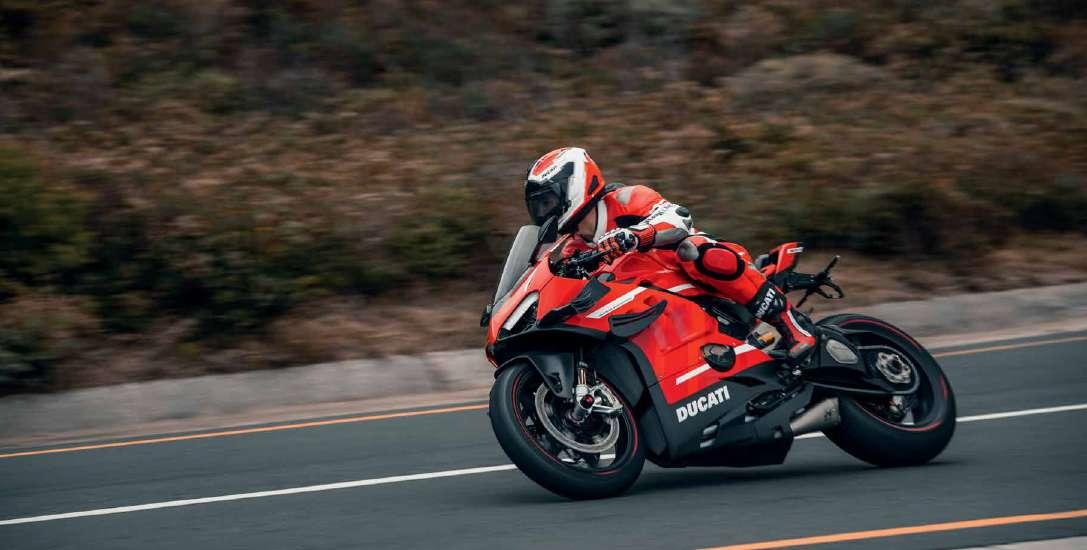
“just me and the bike” time, where what happens is all on me and not on the hapless marketing guy.
After all, if one is to give readers a thorough and proper accounting of the bike, one needs to spend some time doing what one would do if the bike was theirs, i.e., Riding the shit out of it.
Manufacturers (not all of them, mind) get this, and so people like me get to put a few thousand kays on a bike and thus get a proper understanding and appreciation of it. And I actually don’t have anything better to do. This is what I do. This is ALL I do.
But usually, if you’re not reading a Press Launch review, you’ll be reading a review where the media twonk puts two hundred klicks (mostly commuting) on a bike over the two weeks he or she has it, then jams some adjectives, adverbs, and conjunctions between the words
declares the job to be done, and goes back to their self-assigned place at the Top Of The Game.
That, friends and relatives, is bullshit. They know it, you know it, and the manufacturers know it. Many of them have given up reading the reviews, and supporting the platforms (both the remaining print and struggling digital) with advertising dollars.
What’s the point, right? And can you blame them? Have you read the tedious dross that being offered up? How is that meant to inspire someone to buy that bike, or validate the purchase already made?

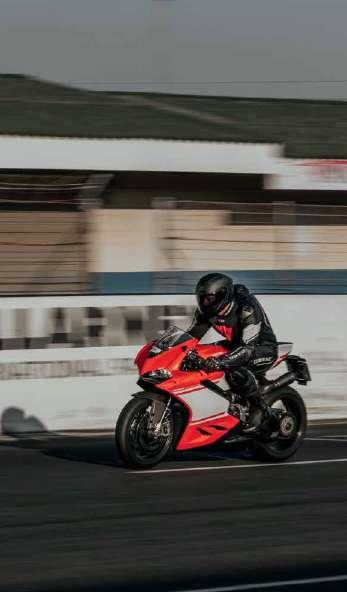
So why is such tedious dross being offered up? It’s because most of the motorcycle media twonks actually don’t have a story to tell, and couldn’t tell it if they tried and actually had one to tell. So, they don’t even try. It is beyond them.
Stories do not occur if you spend two weeks commuting, and an arvo on the Old Pac or Black Spur getting pictures, do they?
Stories occur when you strap a bag to the back of the bike and go riding for a few days. Stories occur when you ride The Mother, or Reefton Spur, or the Oxley, or the Gillies, a whole bunch of times. Stories occur when you’ve put four tanks of petrol through the bike and you still have 300km to go. Stories occur when you live with a bike, ride upon the earth, and have adventures and shit.
That’s what motorcycling is, is not? That’s what I signed up for from Day One. And telling people about that, and communicating the passion, despair, delight, and everything in-between, while also offering a complete picture of what the bike is and what it does by actually riding the shit out of it somewhere, MUST be the driving paradigm in the motorcycle media.
If that’s not what you’re doing as a self-proclaimed reviewer of bikes and products, you need to fuck off.
To paraphrase a quote attributed to the great Chekhov: “Don’t tell me the moon is shining, you worthless bitches; show me the fucking glint of light on broken glass.” AMM

uWe get this a bit. And you can try common sense in reply, but it isn’t especially effective.
“For a start, mate,” I answered, “we didn’t say the 2022 is crap. But we did say the new model is better, sure.”
“It’s the same bloody thing,” he answered. “The factories give you blokes the latest and you go all ape over them. One minute the 2022 is the best, then it’s the 2023.”
reasonable point. But it ignores how the motorcycle industry, along with many other industries, works. “Well, the factory would hardly release a new bike if it wasn’t better than the previous year’s, would it?” I said. “So, it stands to reason that at least a few things will have improved between models. And I think we would point that out.”
Even as I was saying this, I realized that I was wrong in some cases. I don’t know if you ever get manufacturers’ press releases, but I see one phrase all too often: “vibrant new colours”
it proclaims, or words to that effect. In other words, the bike’s the same, they’ve just painted it in different colours. In our defence, though, I’d say that we would not praise a bike over the preceding model just because it had new paint.
Maybe reviewers just need to stop using absolutes. Instead of calling something the “best”, maybe we should always say that it’s “better”. But I doubt that that would satisfy the people who feel that their bike has been criticised if a newer model is praised. I’m really not sure how to keep them happy.
The speed with which technology is moving today is so great that it easily

quickshifters, for instance.
But it needs to be said that yes, bikes get better every year. Most of them, anyway. But don’t let that stop you from buying this year’s model. That way you’d never buy a bike at all. Just be grateful that there are so many features for you to choose from. Yes, there will be more next year. But if you wait you lose an entire year’s enjoyment of the bike, and anyway there’ll be more again to wait for. Waiting is simply not worth it –and the price will probably go up, too. My new mate bought me a beer,
explanation. You our readers are good people.
*Not its real name.


“SIkh MOTOrCyClE CluB AuSTrAlIA”





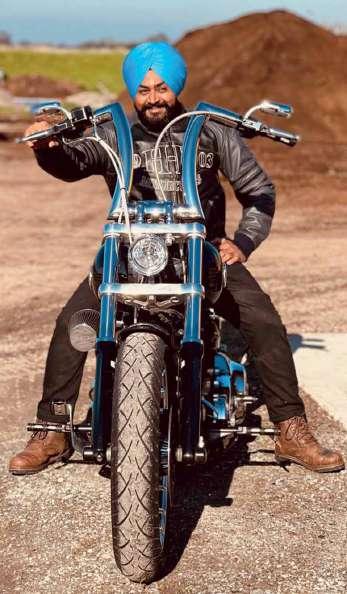

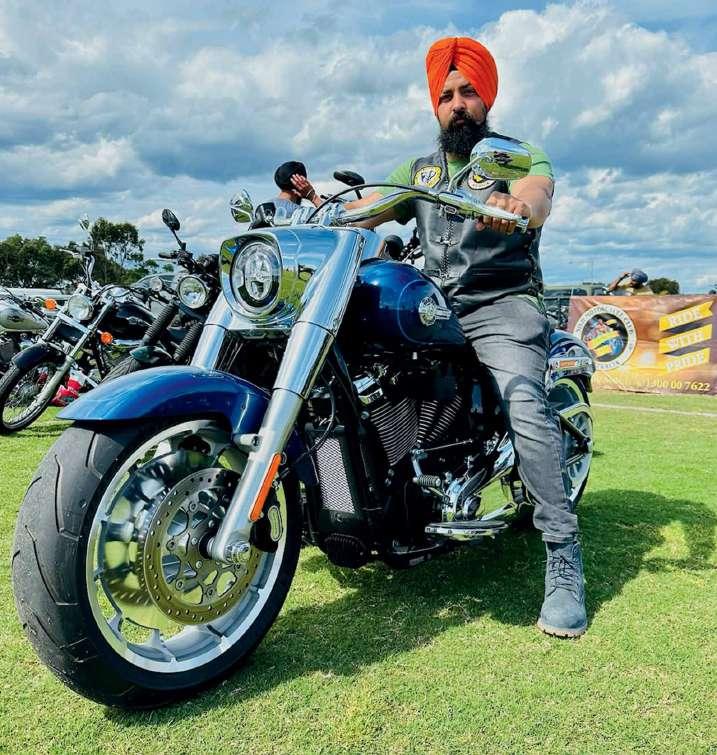
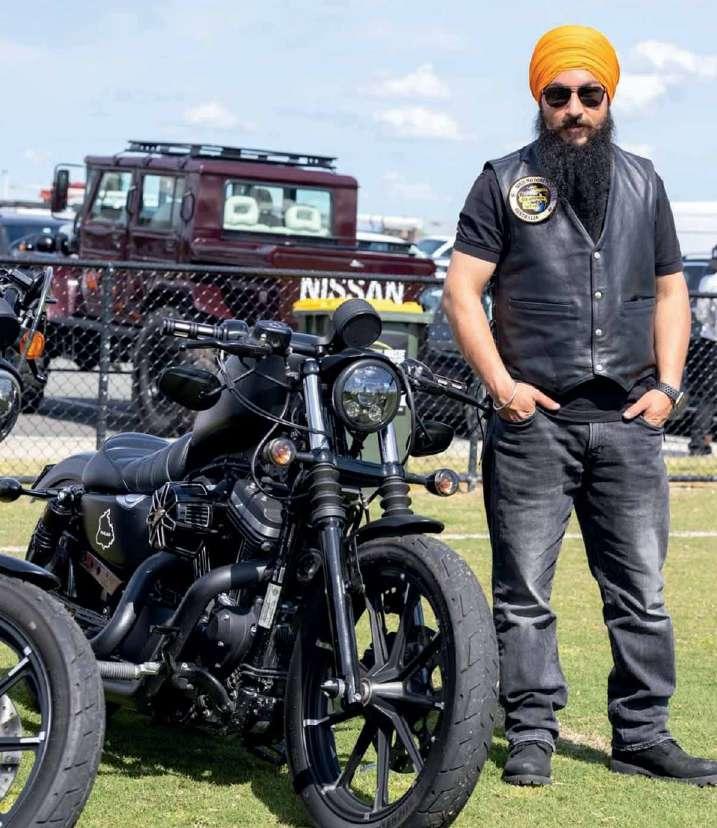
The old bike I’d just bought the day before, was now refusing to start. She’d broken my wallet without a blink, and now she was breaking my heart.
I rang a mate to get some help, and to see if he knew a mechanic.
He said that he knew just the right guy, and not to be in a panic.
He said to me, “The guy is retired, and he probably won’t charge you, I think. But mate I really should warn you right here, that he doesn’t mind the odd drink”.
A few hours later as I waited impatient, a bike came over the rise.
A 50’s Triumph making a hell of a din, I’m sure to the neighbours’ surprise.
He parked up on my driveway, and introductions were made.
Far beyond octogenarian, he was at least 90 in the shade.
Then his bike began to leak oil, to my disgust and to my horror.
He grinned widely at my panicked face and said: “I hope that it’s no bother”.
He said, “Old Triumphs don’t actually leak oil, as in legend and in story. All it’s really doing here son, is marking its territory”.
“Now young Lochinvar, let’s get right in, and work out why it won’t go.
On old bikes it’s usually electrics, or at least it often seems so”.
He produced an old soldering iron, which was a wonder to my eyes, Electrical connectors and sticky black tape, and various length cables ties.
might not have all this kind of gear, hand, keep anything you want right here”.
woRDS – dE r E k S TEVENSON
I lifted the seat and exposed therein, the rat’s nest of aged wiring.
He shook his head and gave a loud groan: “Son, this is going to be tiring”.
We peered into that darkness and he pushed things left and right, When there erupted a deafening crack, and a blinding flash of light.
We both recoiled in wide eyed fright,
The then old guy tripped over a milk crate and landed right on his bum.
As I helped him up, he seemed right track. And try hard not to look down in the mouth. It’s just a minor setback”.
He spied my old red beer fridge, which had really been round the block. He said with utmost certainty, “It feels like beer o’clock”.
And as in common parlance, it was the bit of the wedge that’s thin, As one bottle after another, all rattled when hurled in the bin.
I hoped that we’d have no more shocks, and no unwanted surprise. He watched closely over my shoulder, with really very tired looking eyes.
I checked wire after wire, and it really was quite boring.
And I know this with a certainty, as by then he’d started snoring.
though the clock had become quite blurred, When he started to tell me stories, of old disasters that had occurred.
He told of woeful electrics, hundreds of fuses that would blow,
And the blame was usually laid at the feet, of the infamous Prince named Joe.
He spoke of ratty magnetos and of headlights that were suspect, And vibrations so bad that bits fell off, and wires would disconnect.
He regaled of mechanical battles and the tears that were often wept, And many irate employers, and of appointments never kept.
And then he said it was time to go, and I watched in trepidation, He refused an Uber and refused a cab and refused to walk to the station.
I gritted my teeth as he took off.
I hoped he’d get home injury free, With a mighty roar and a lofted front wheel, he slammed right into a tree.
“Oops”, he said, as he climbed to his feet, “Wrong time, and maybe wrong place.”
He started to walk then fell to his knees, then flat upon his face.
The paramedics checked him out and then took him away on a litter.
One said, “The silly old bugger. You’d think that he’d know better”.
I was told that he had died the next day, leaving friends and family behind.
They spoke of a warm and gentle man, always generous, wise and kind.
Of course, it was a tragedy, but a story only told in part.
In the end the bikes didn’t get him, just his old and worn out heart.
He was buried with his Triumph but that’s not all that has been lost. We lost is stories and we lost his knowledge. So terribly to our cost.





